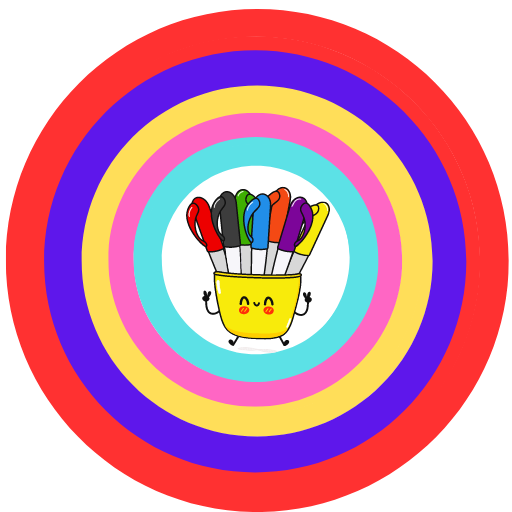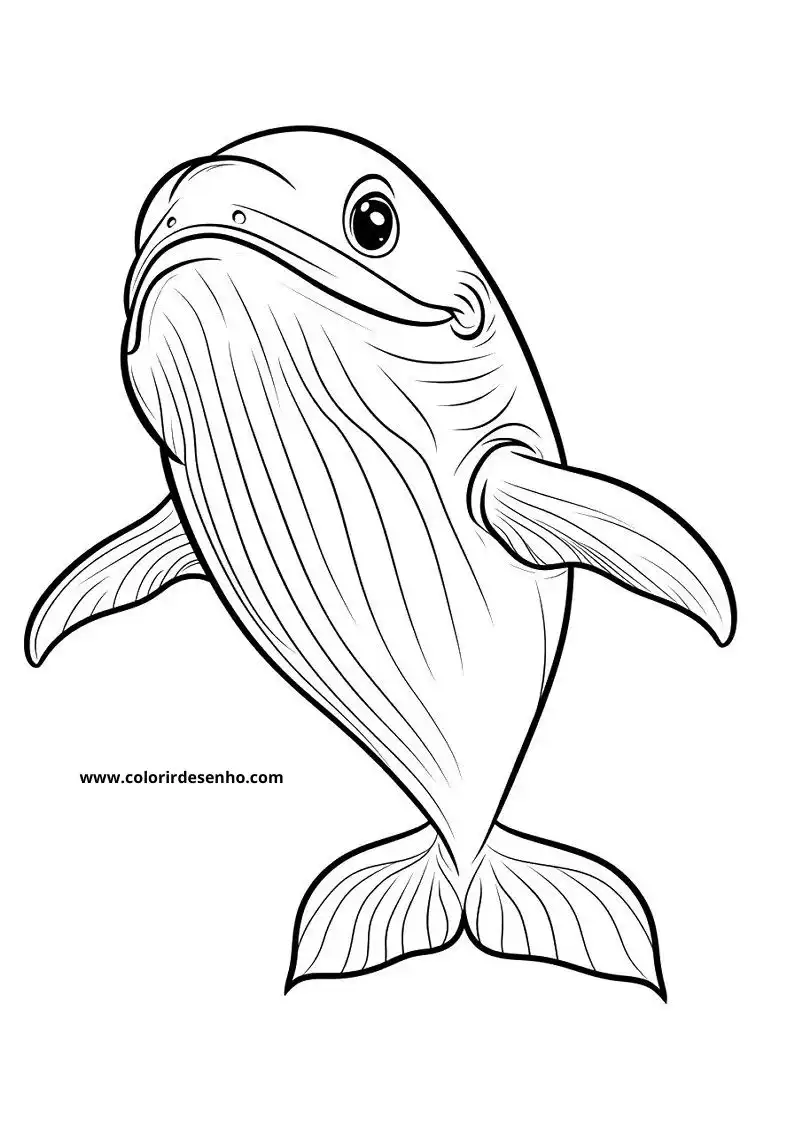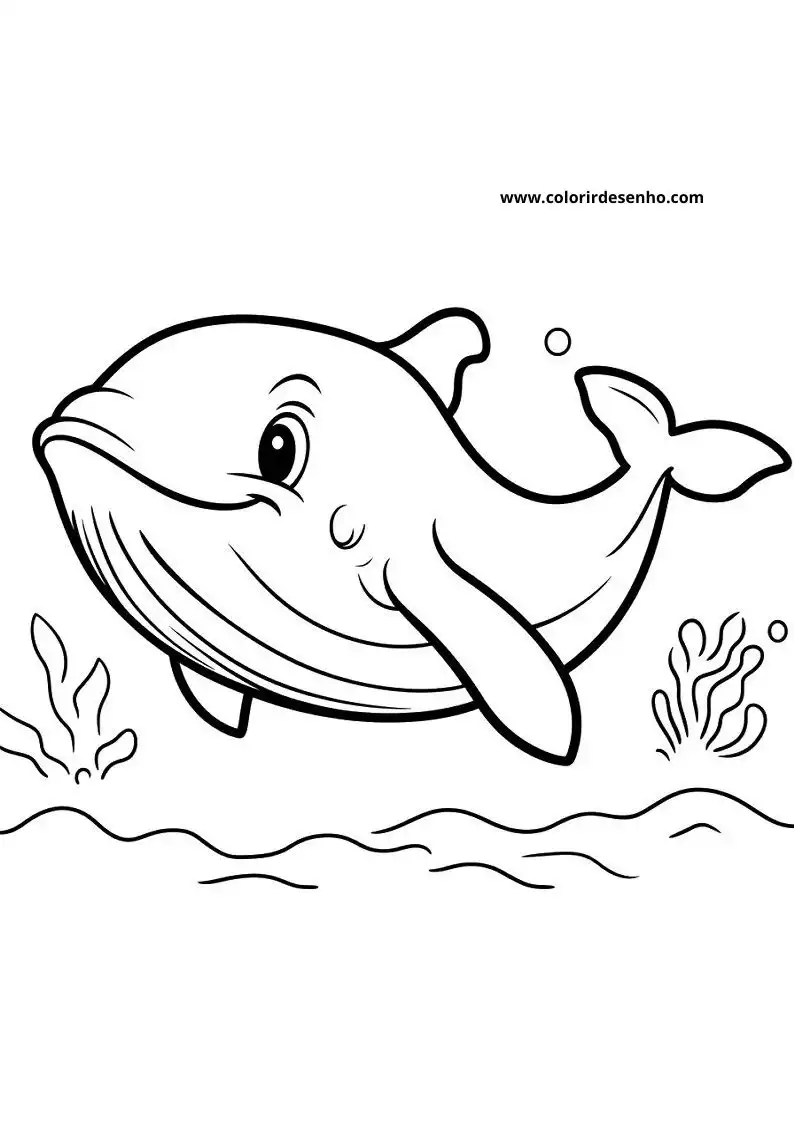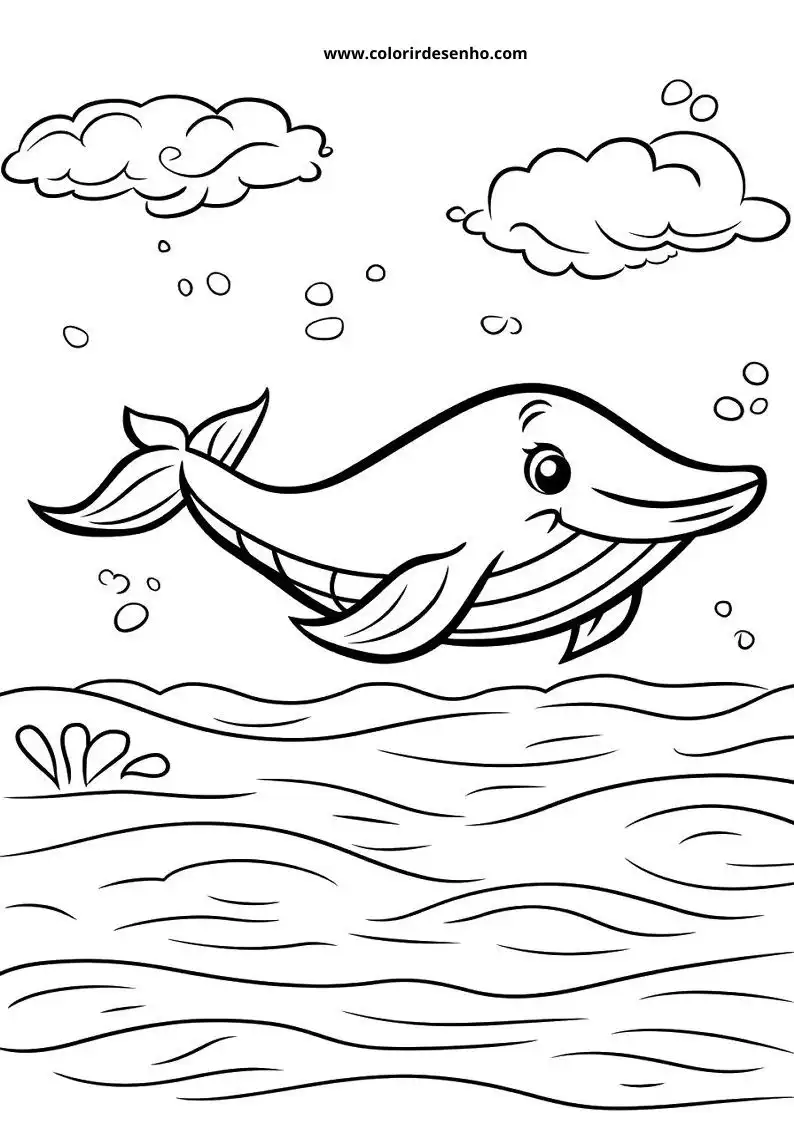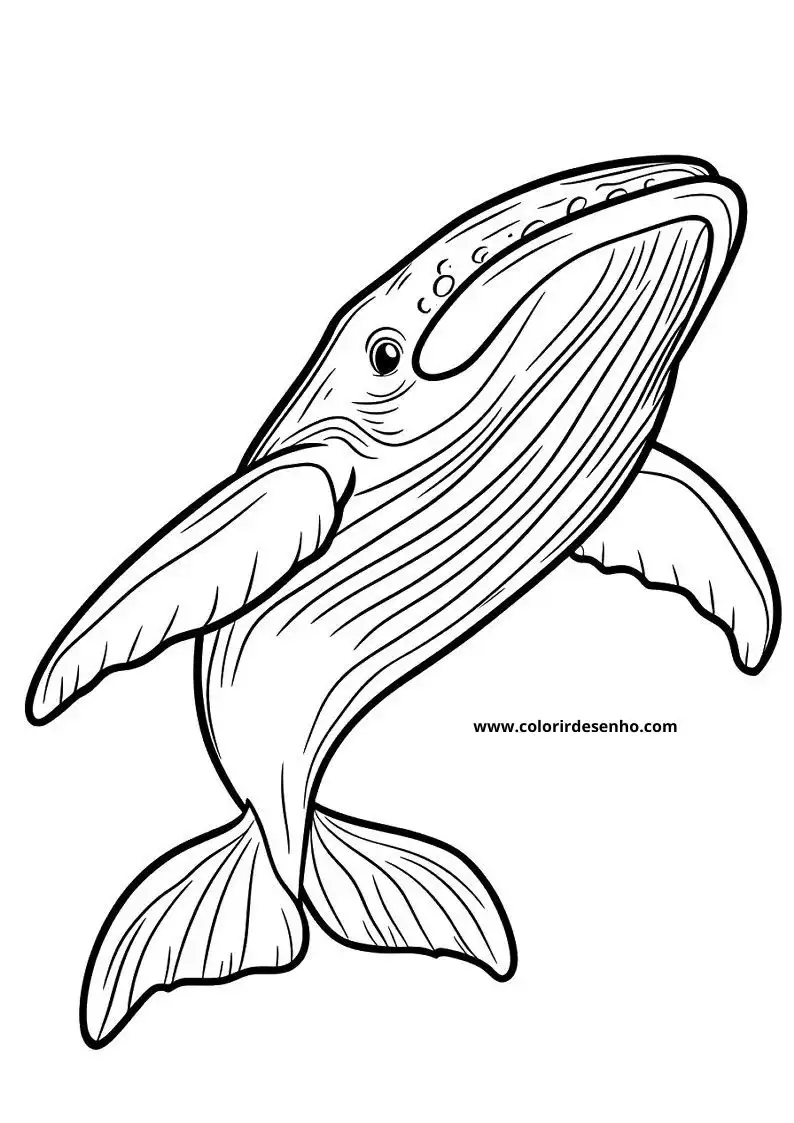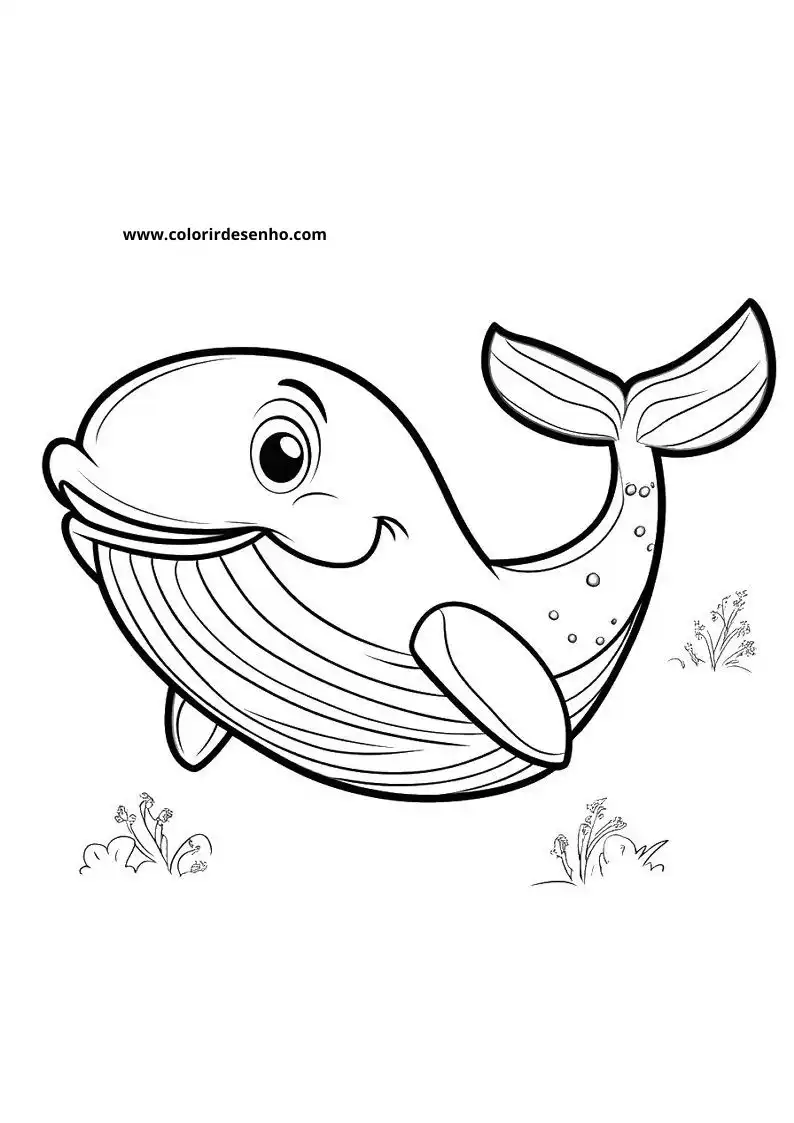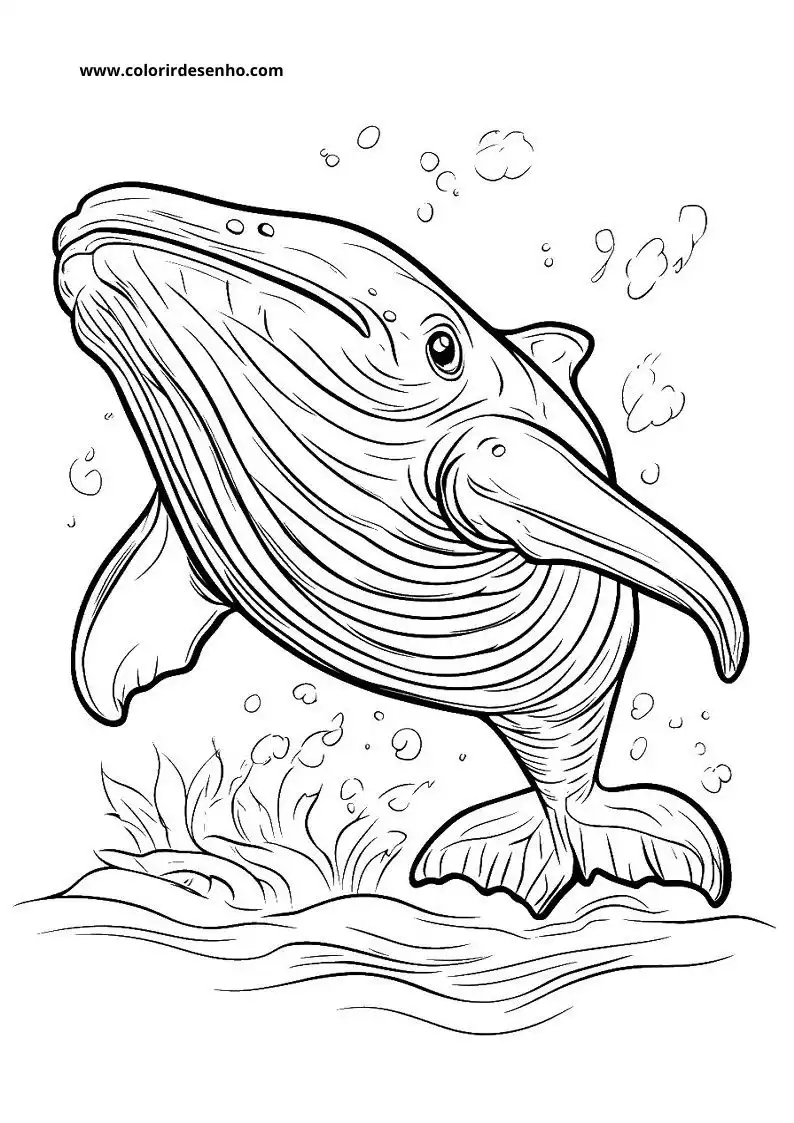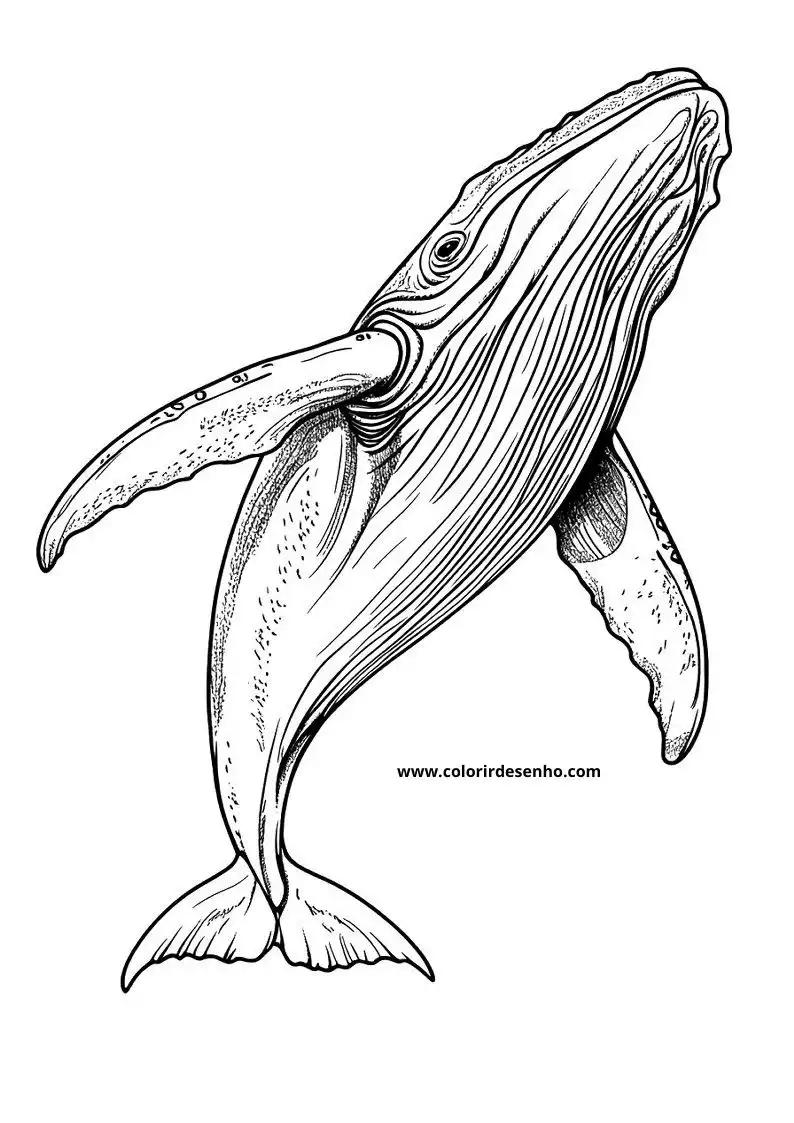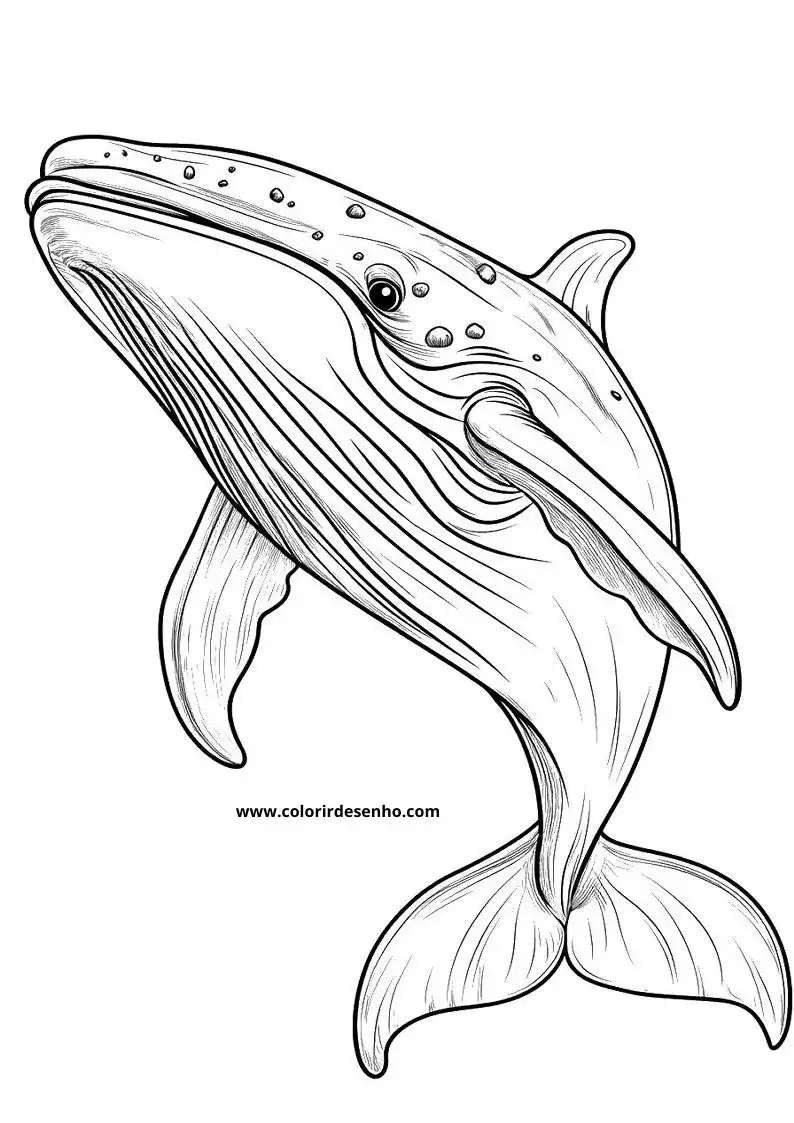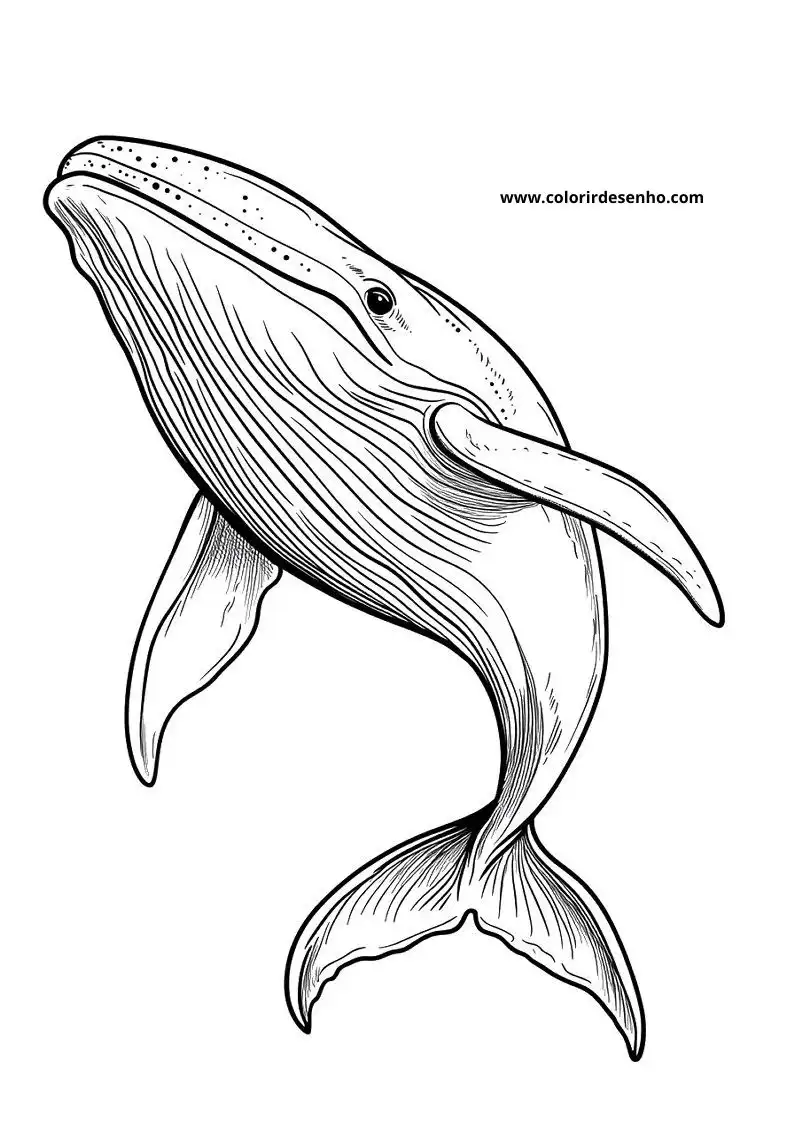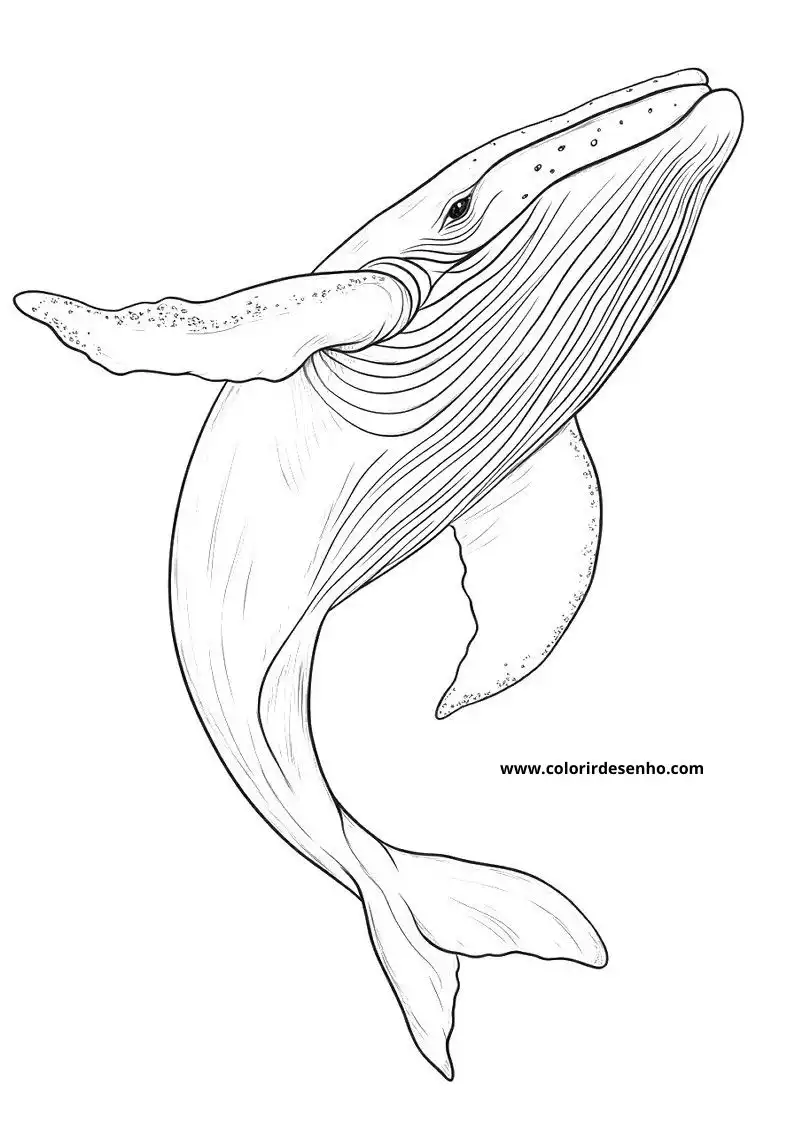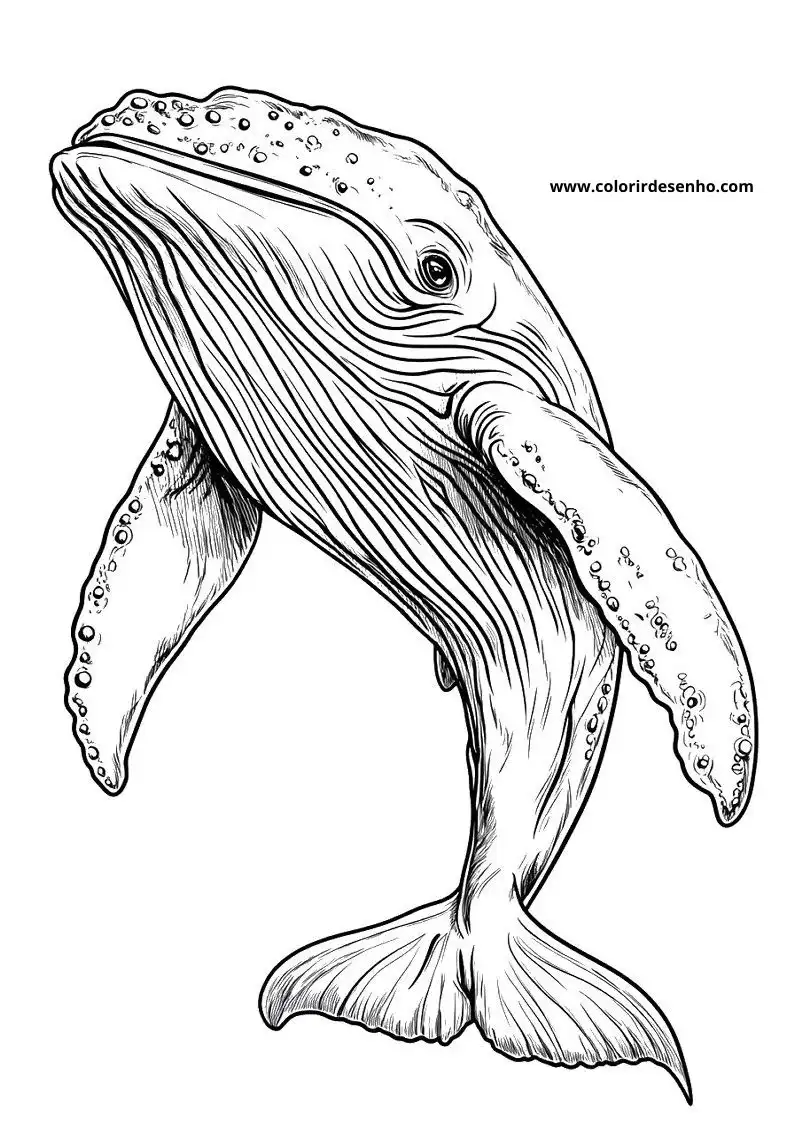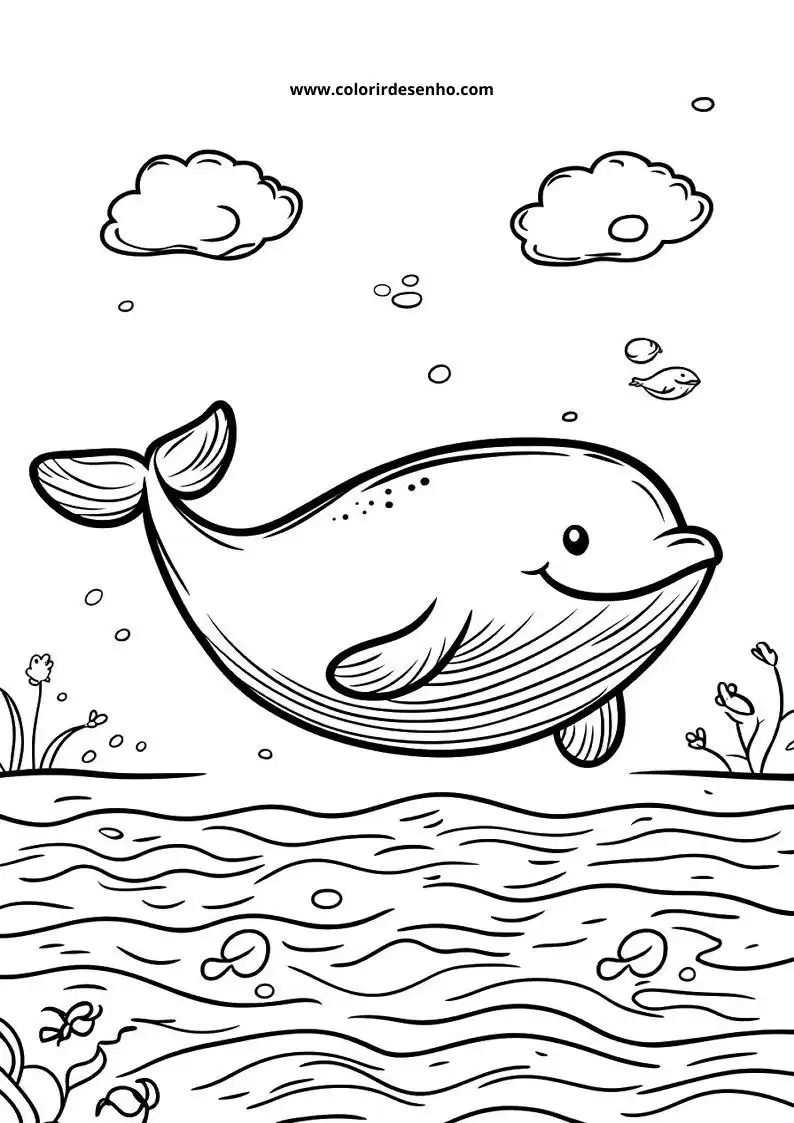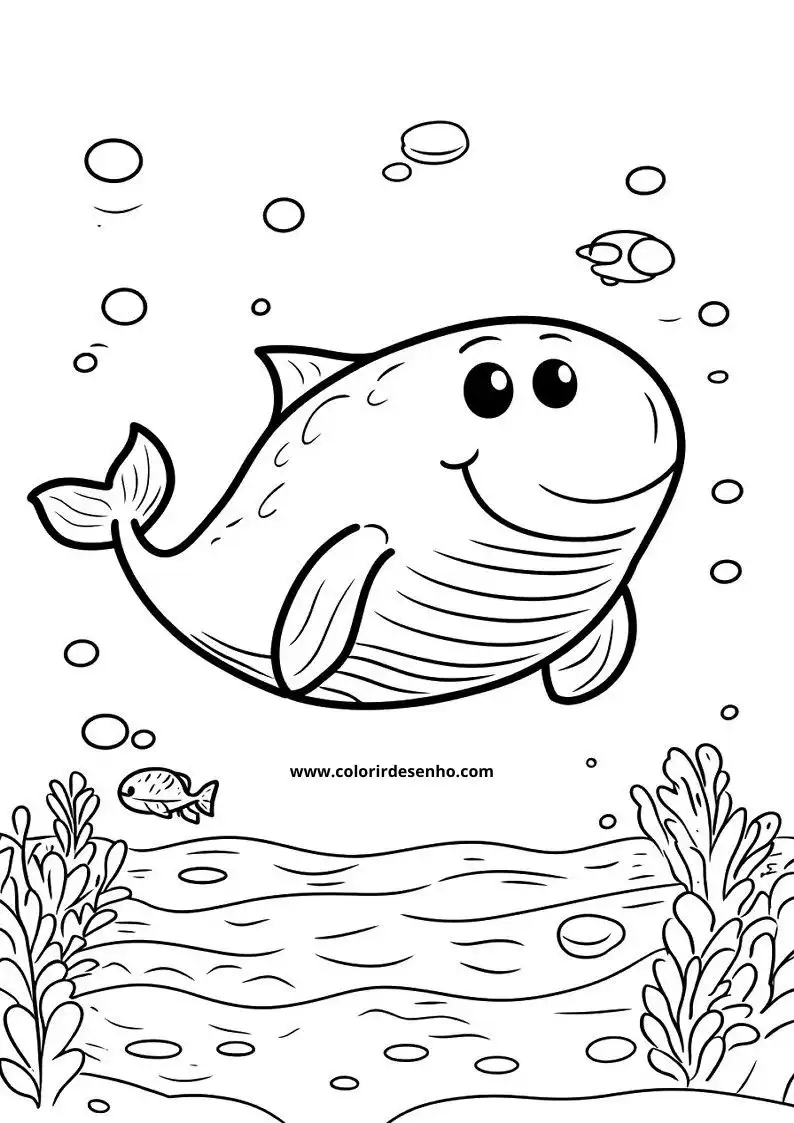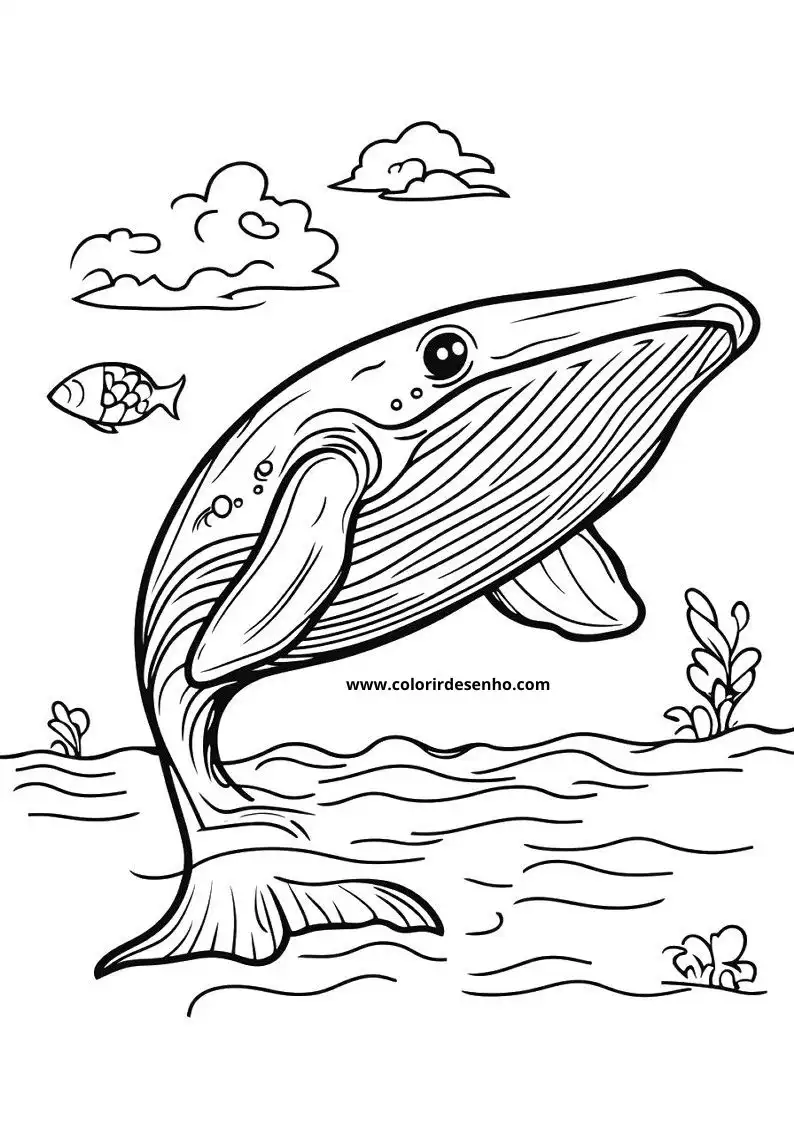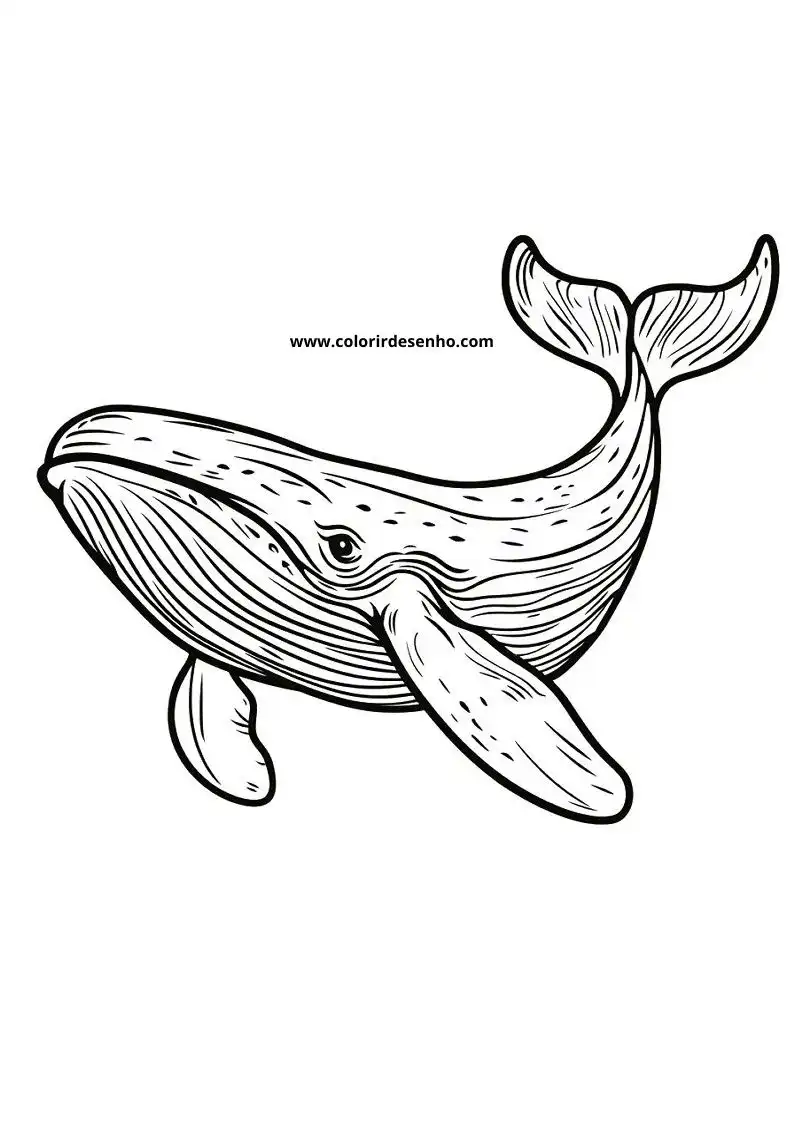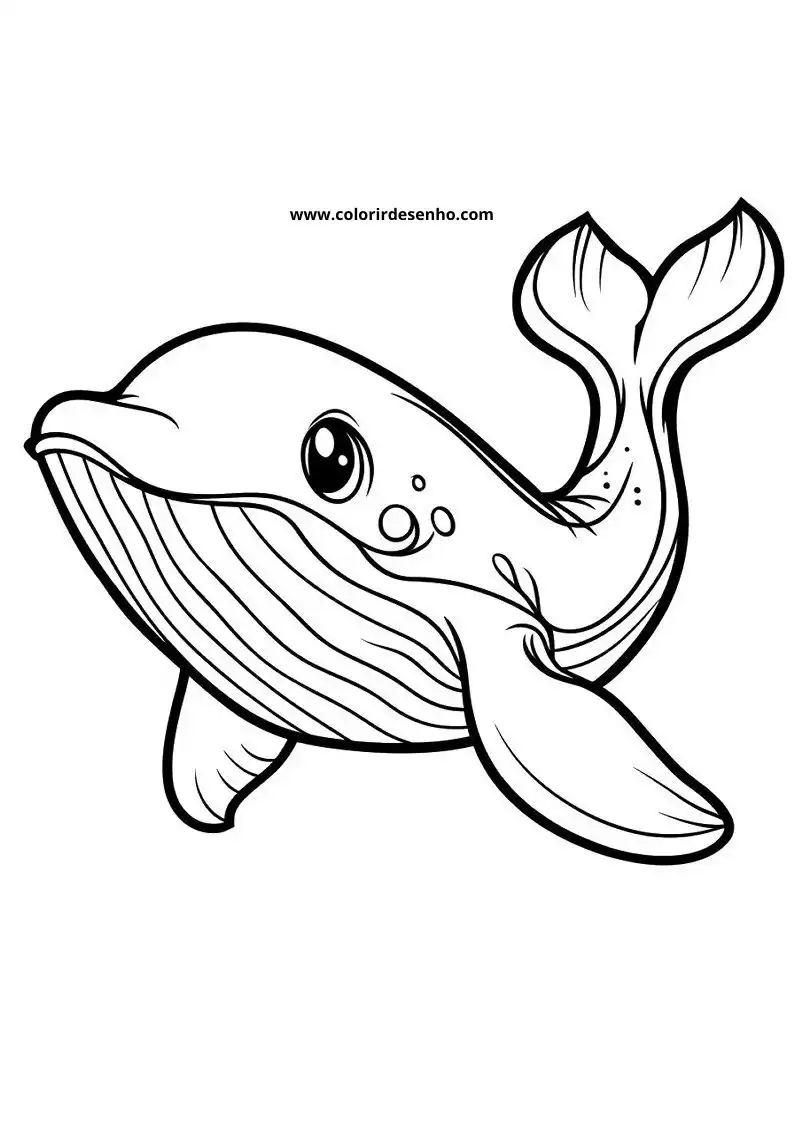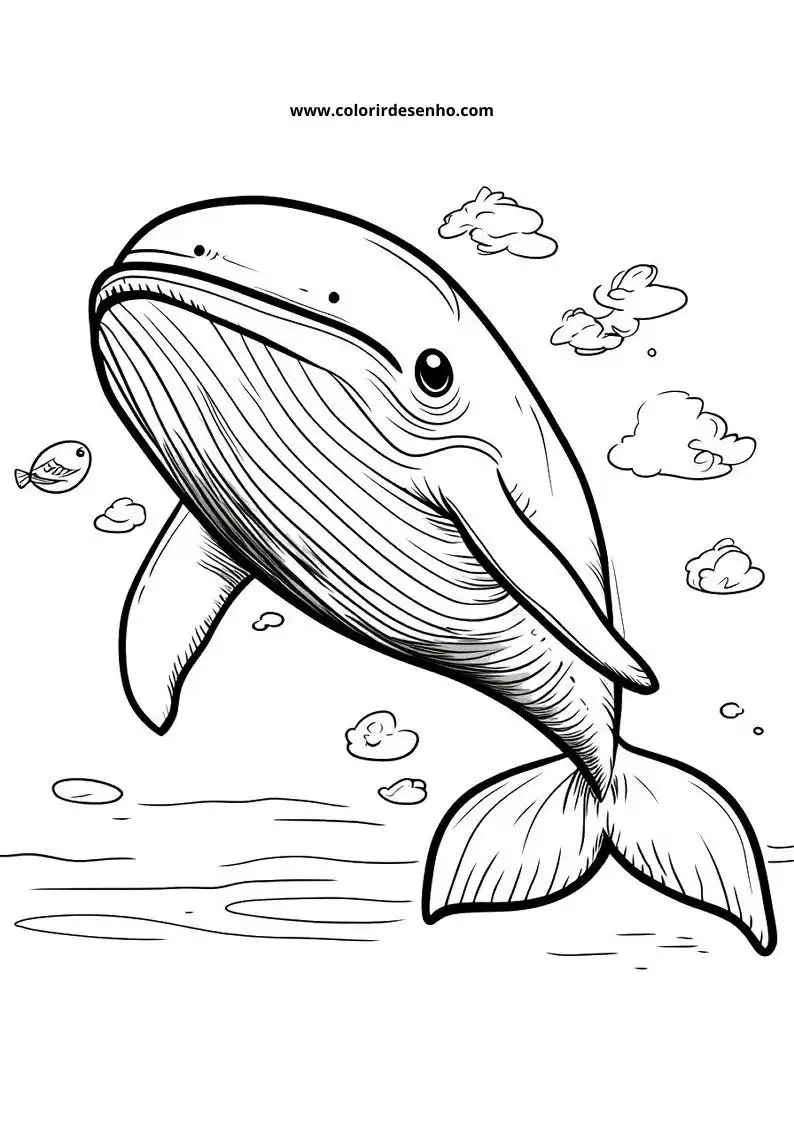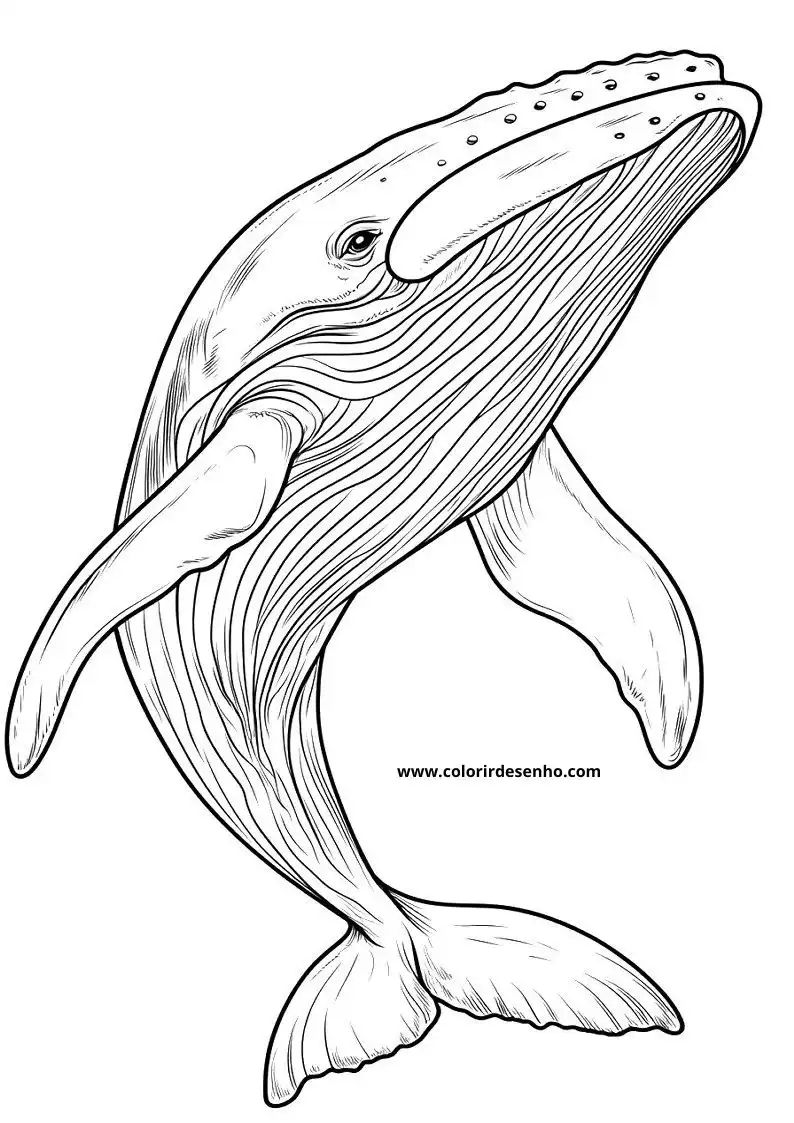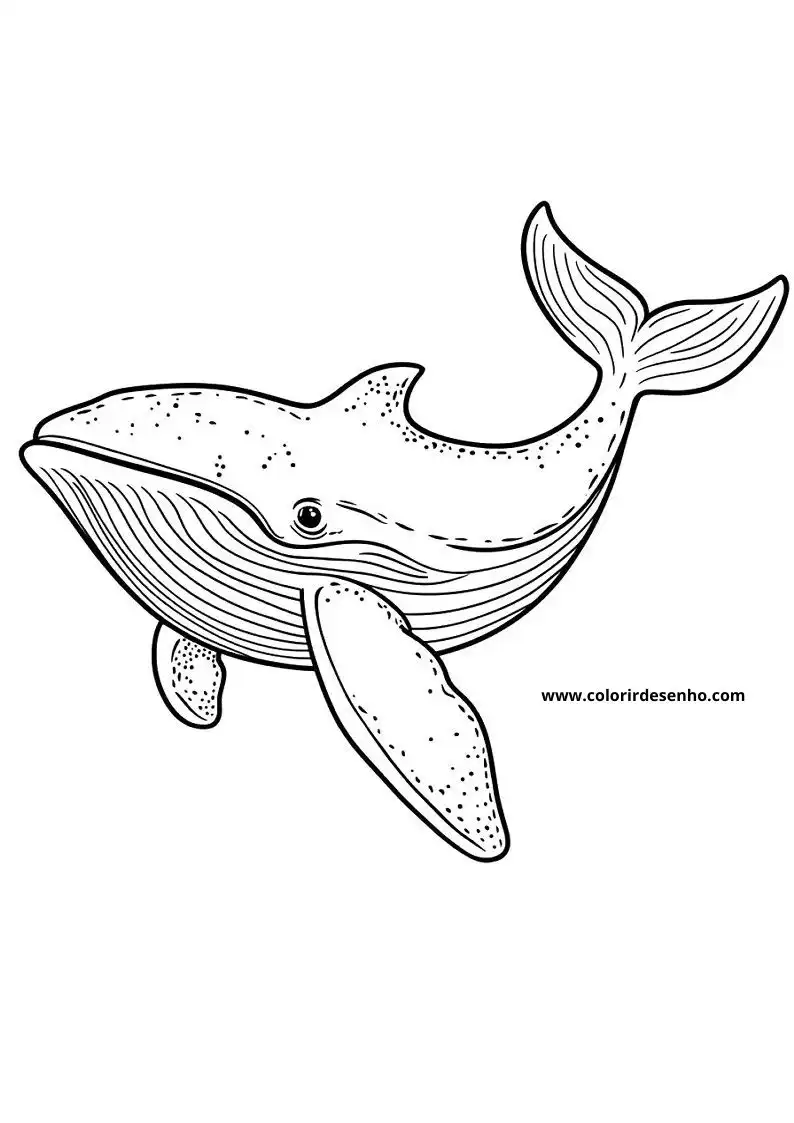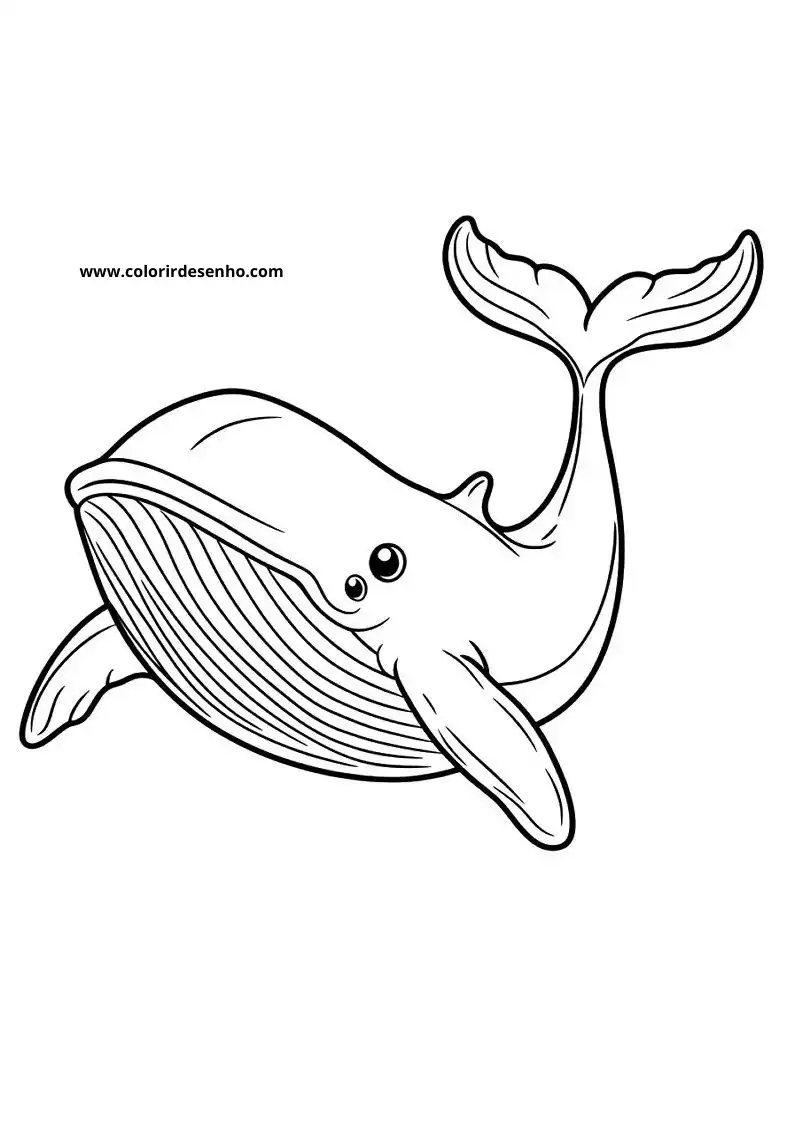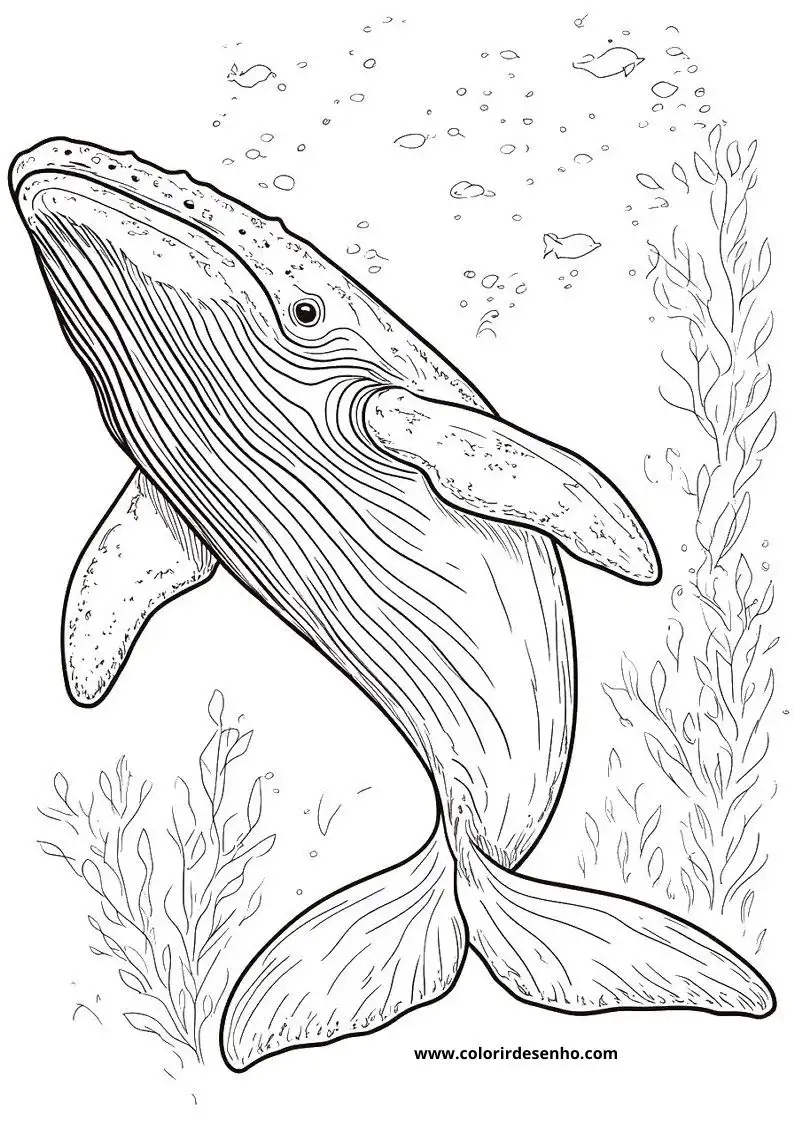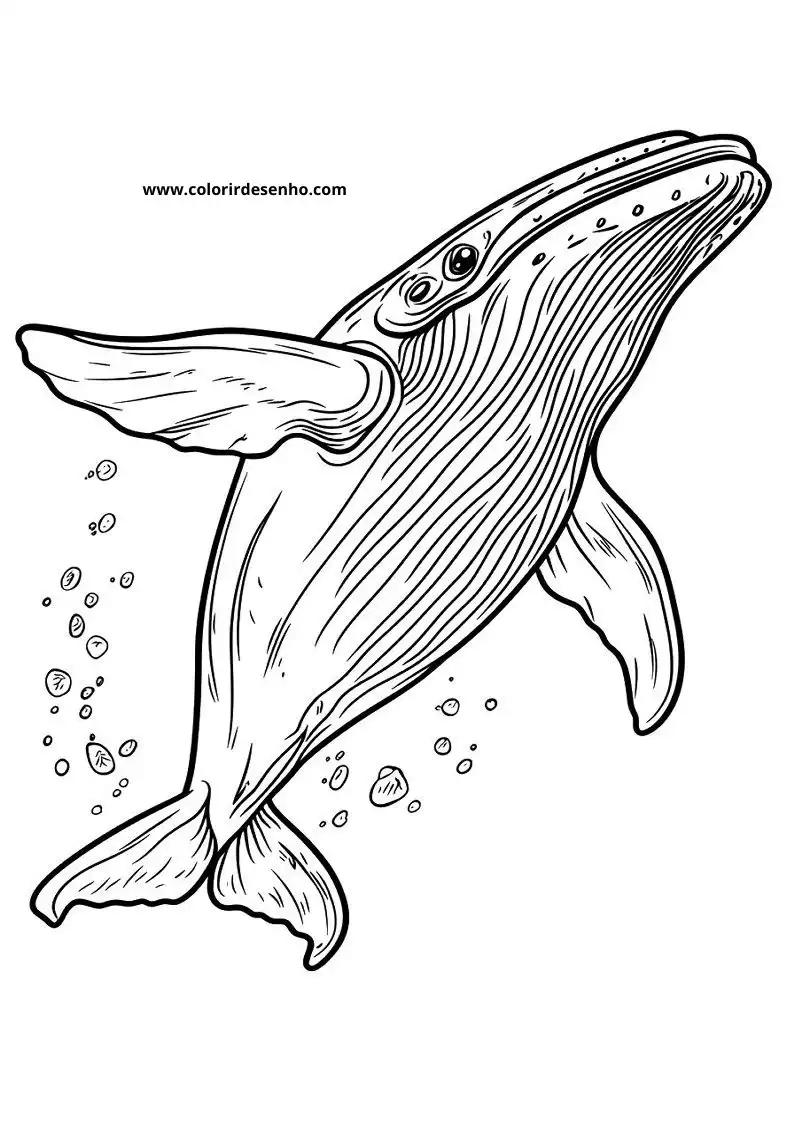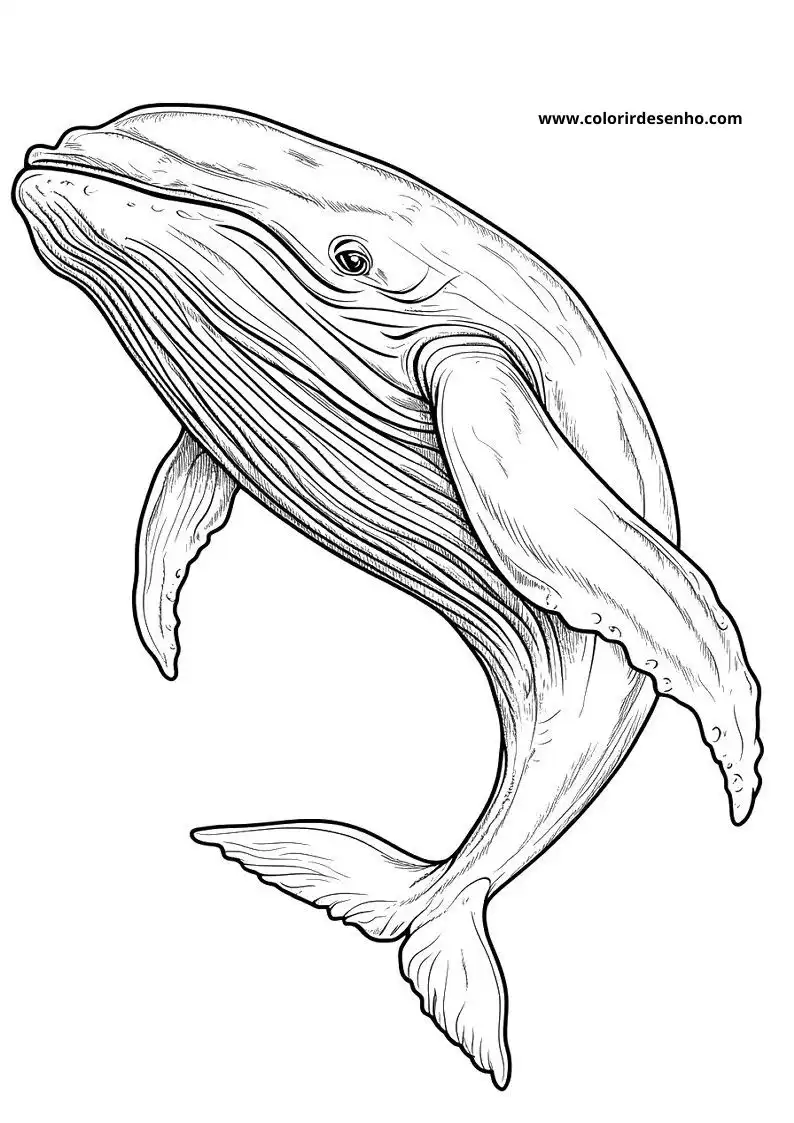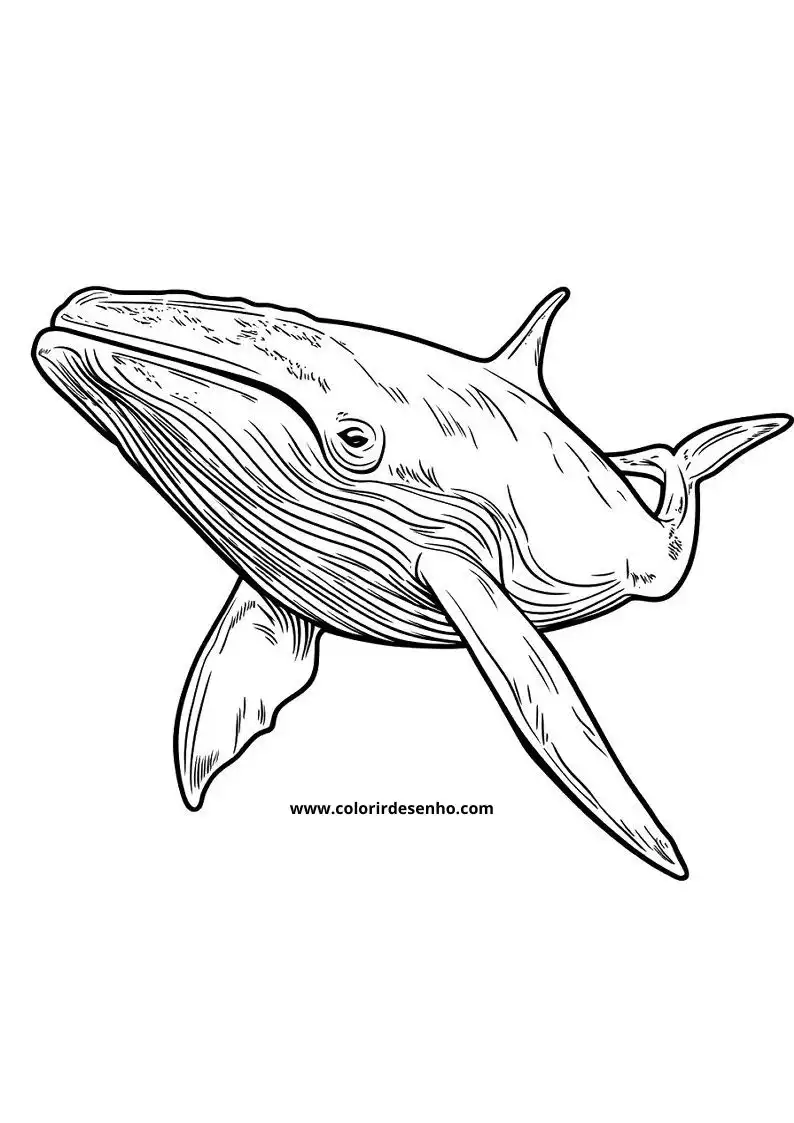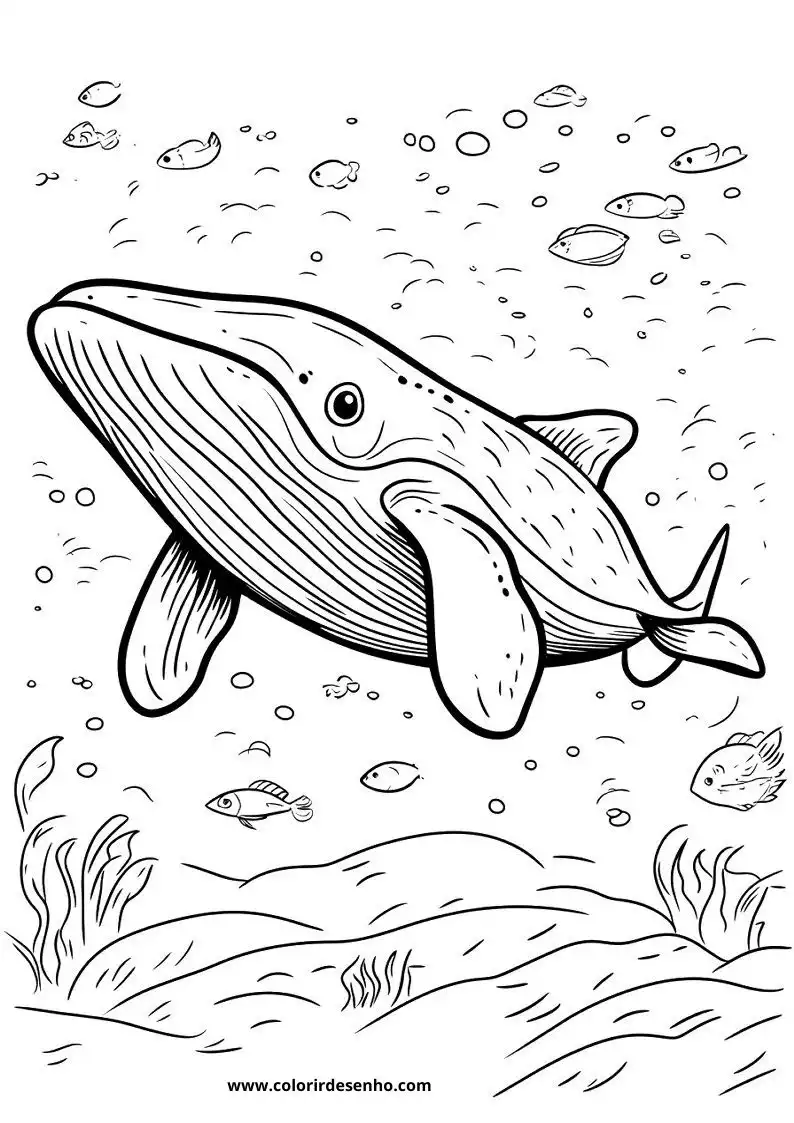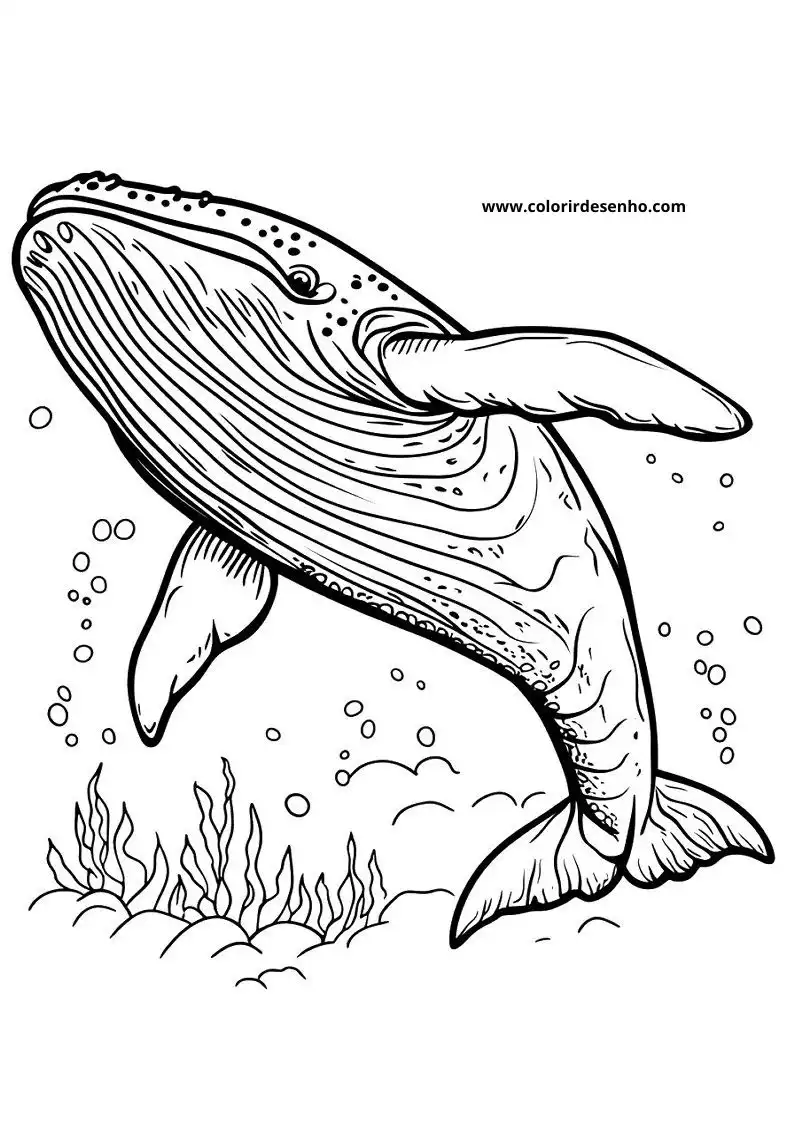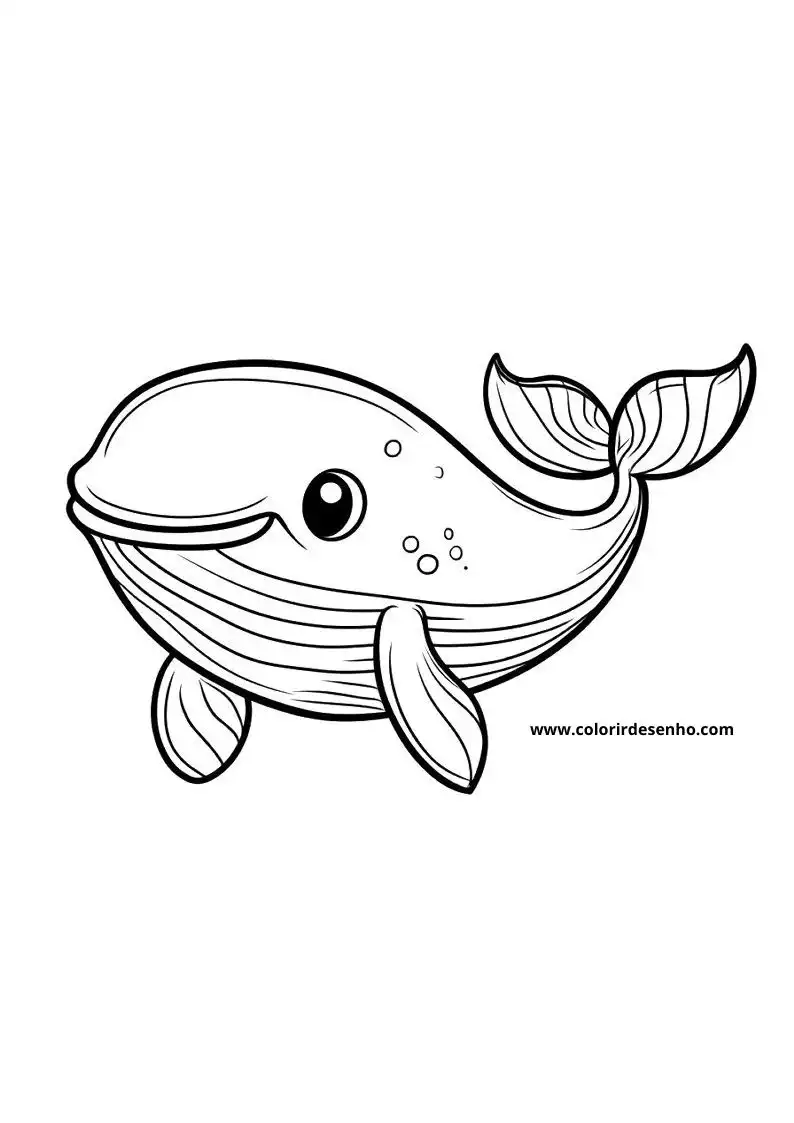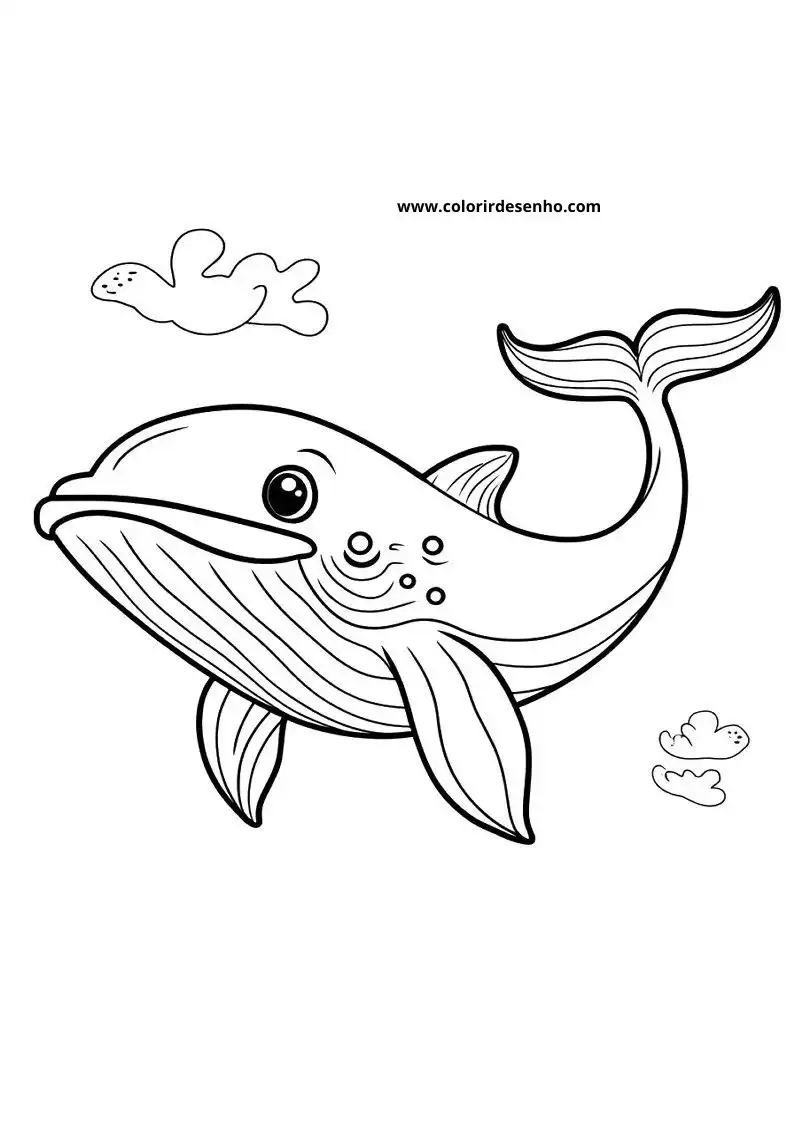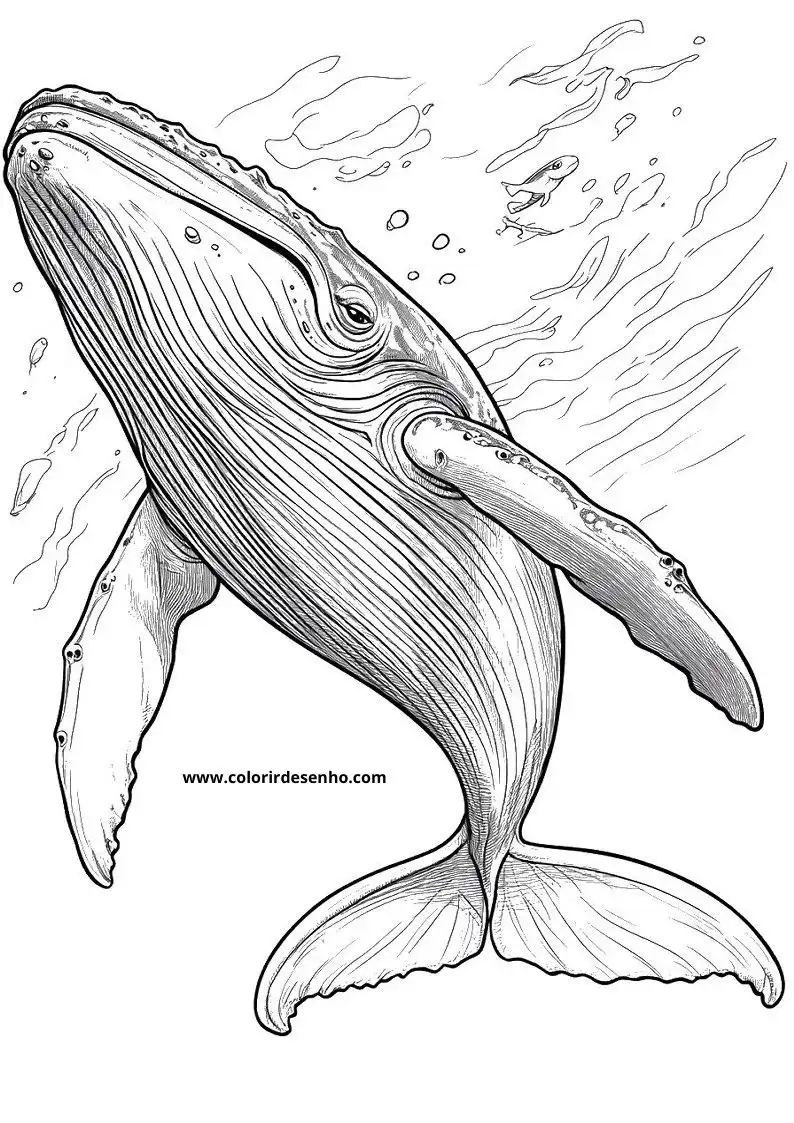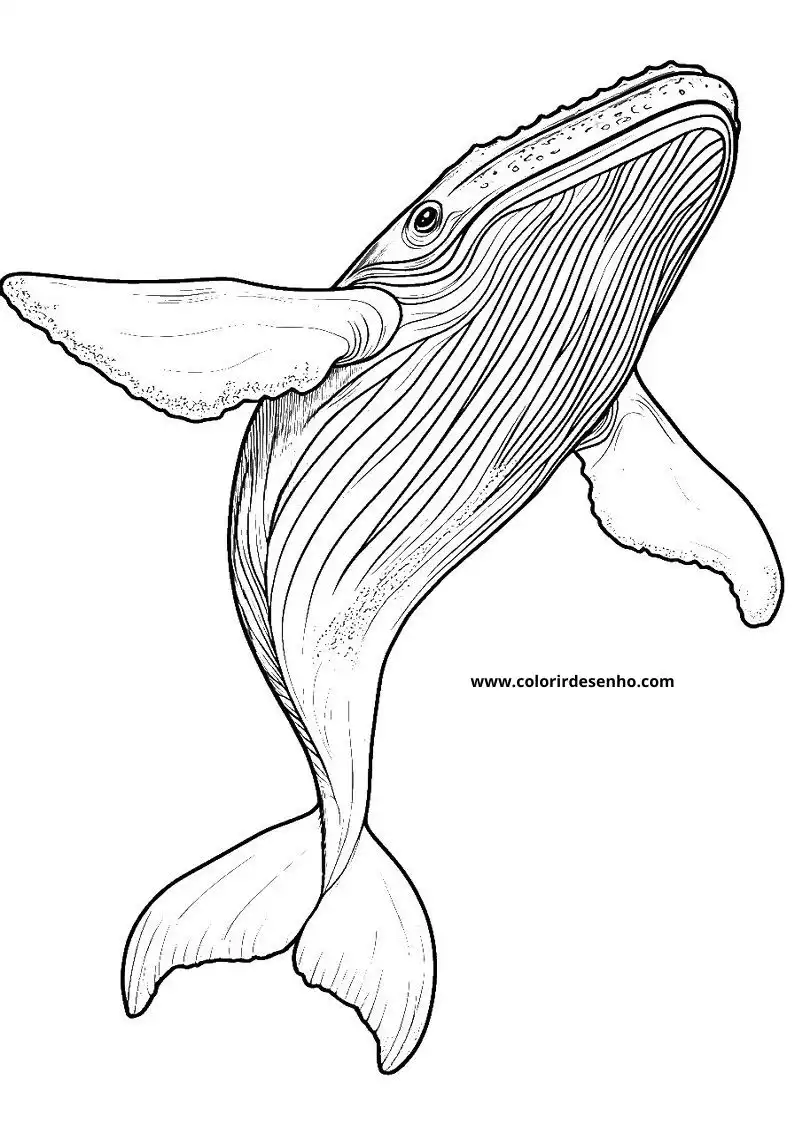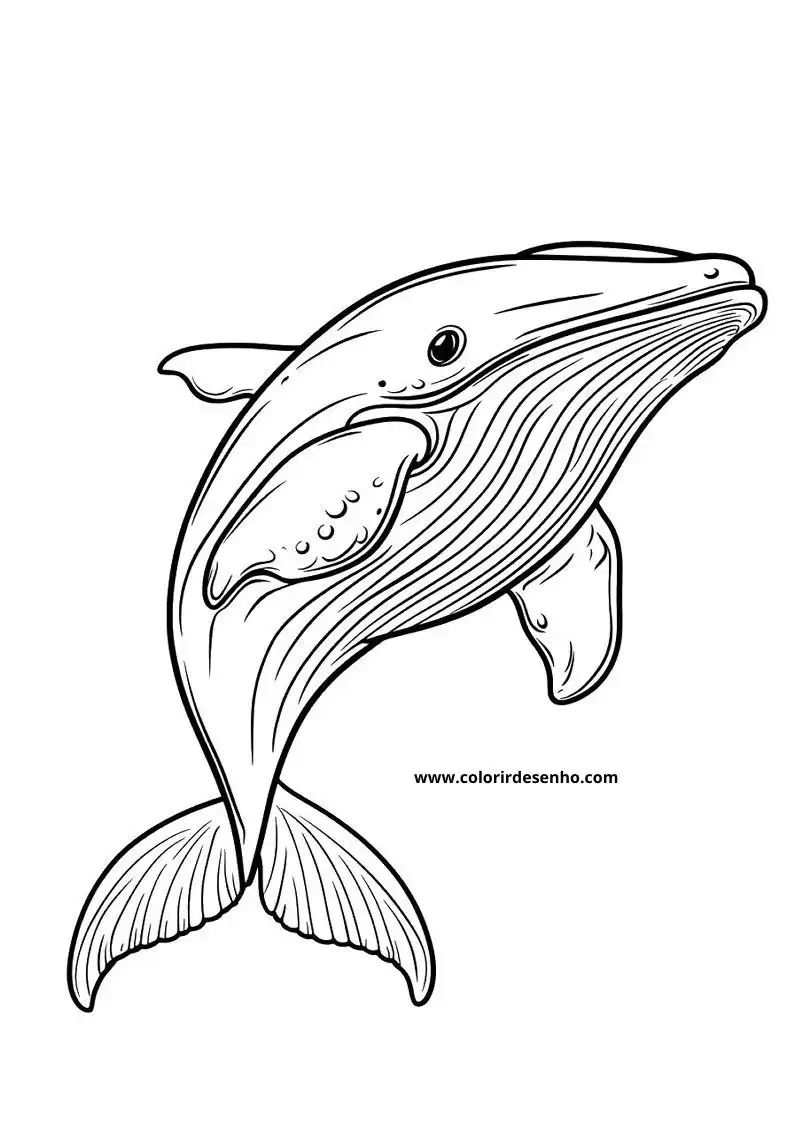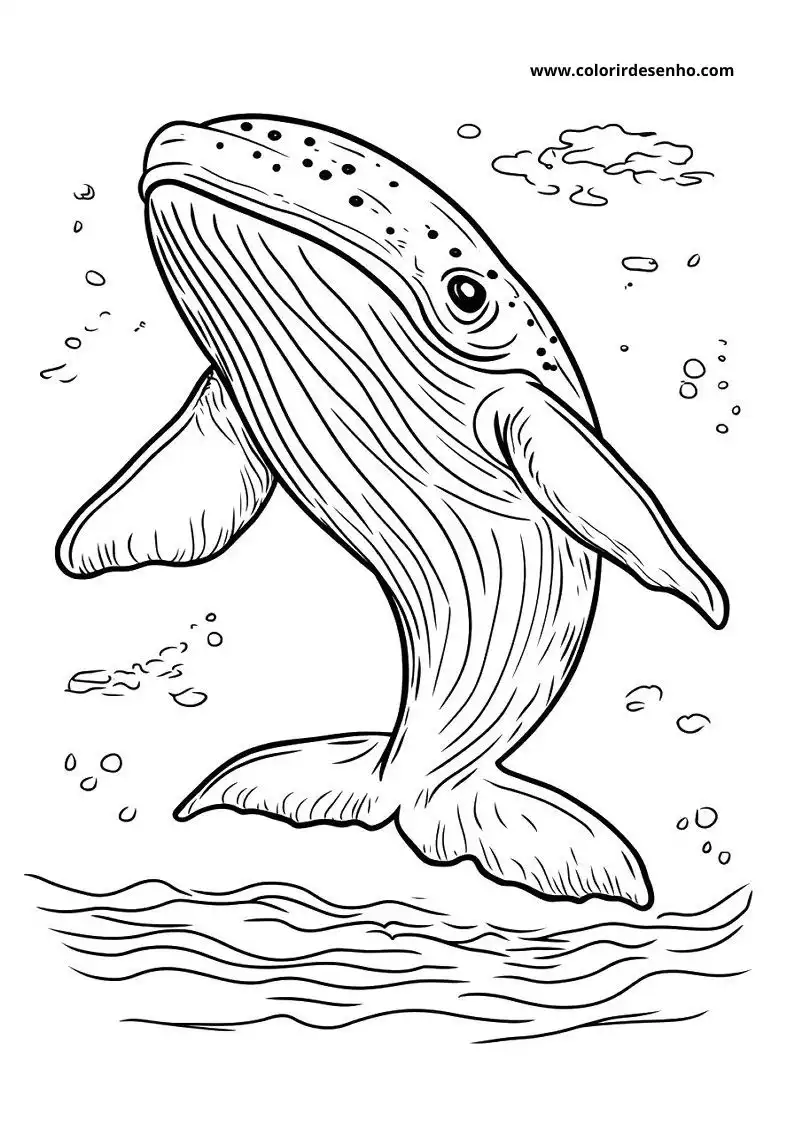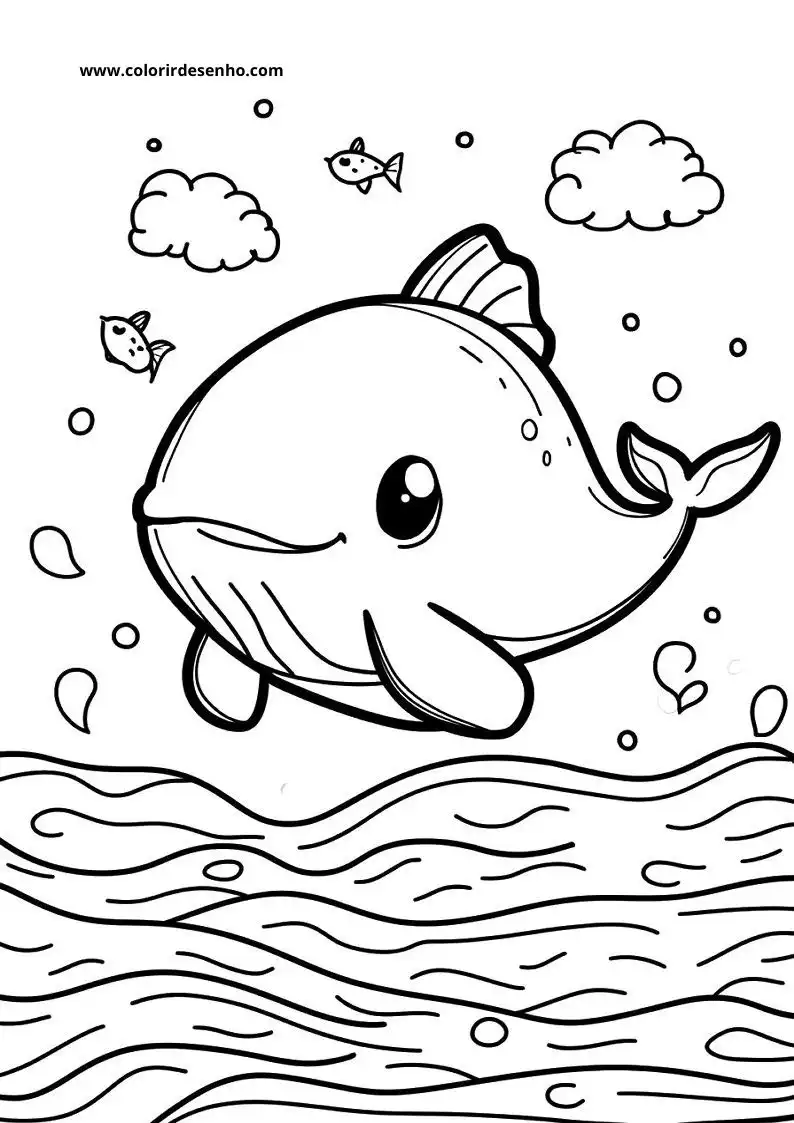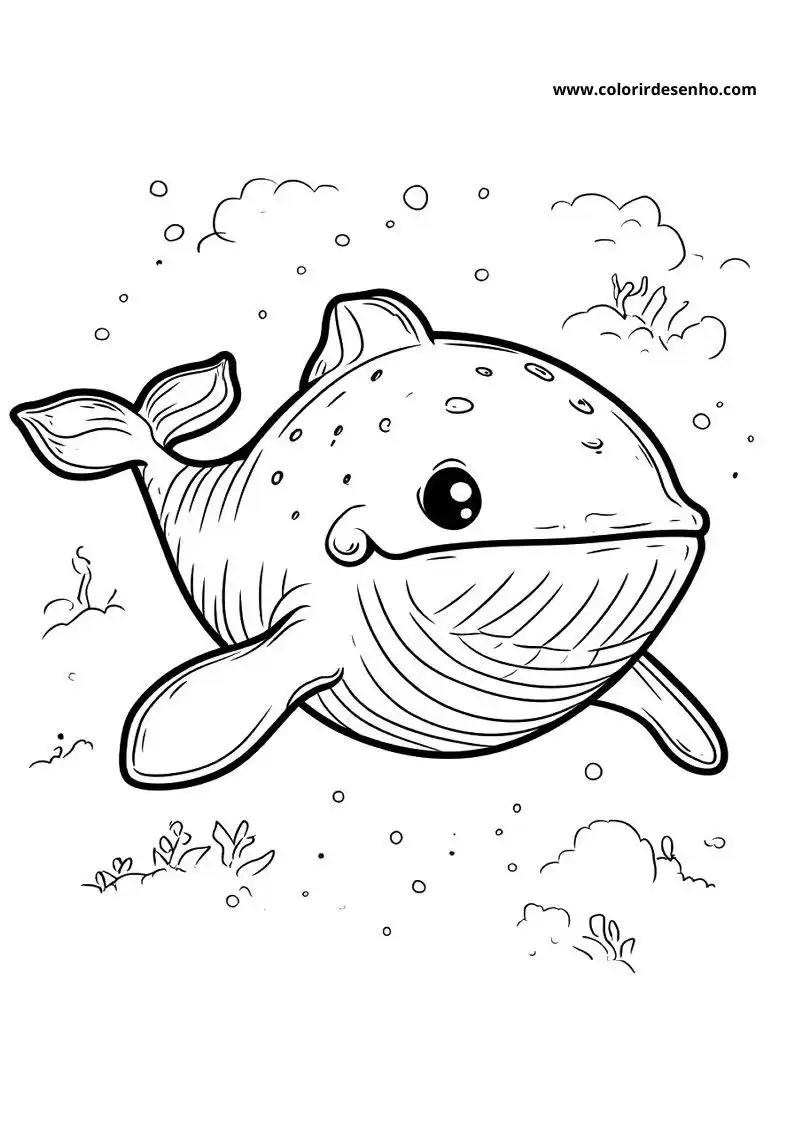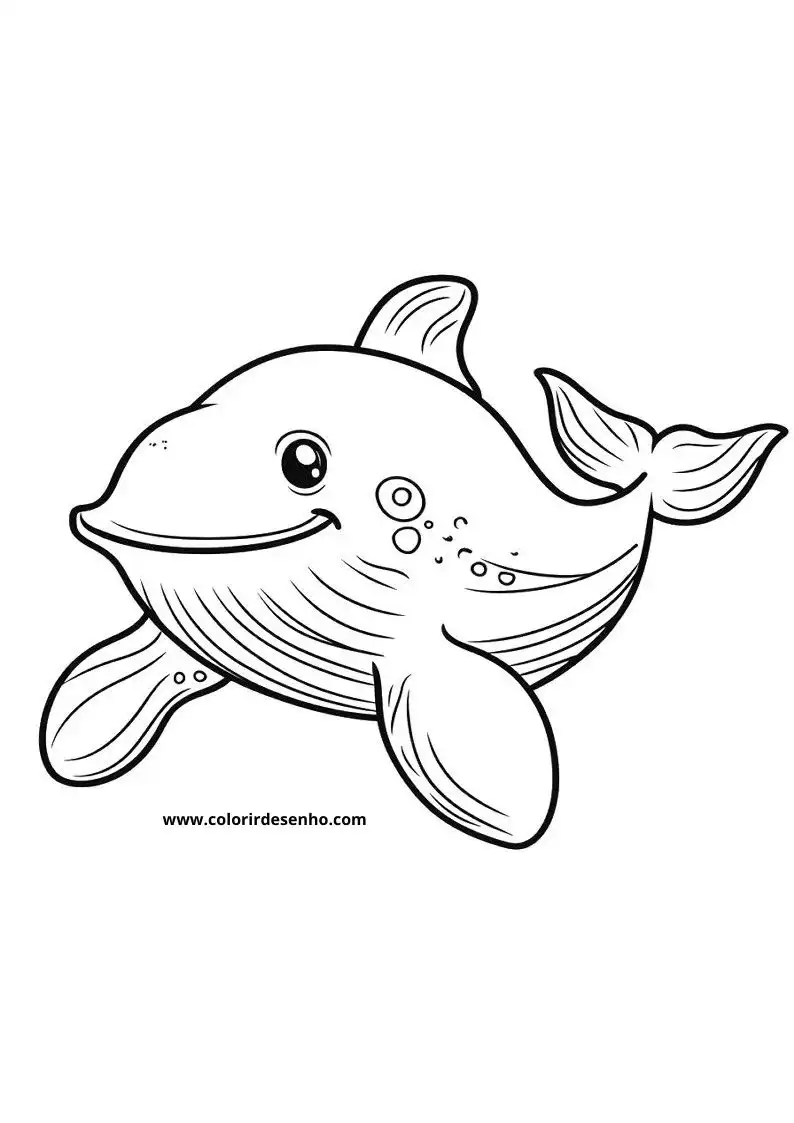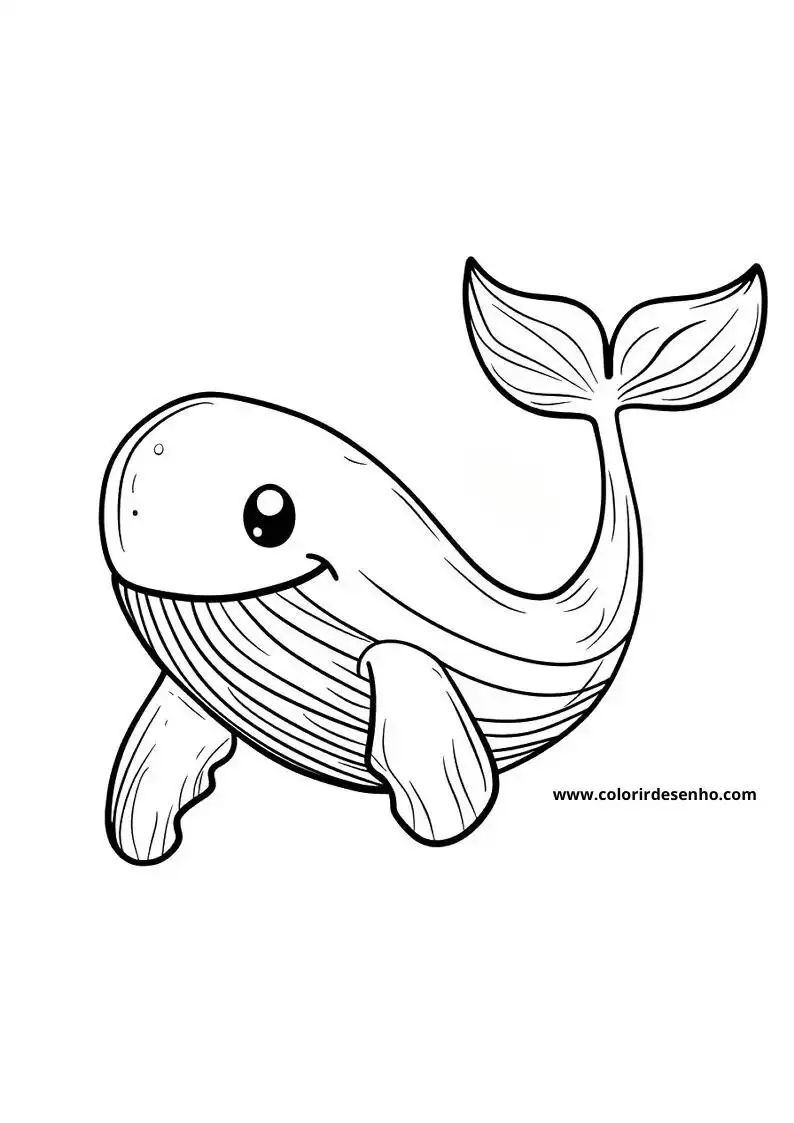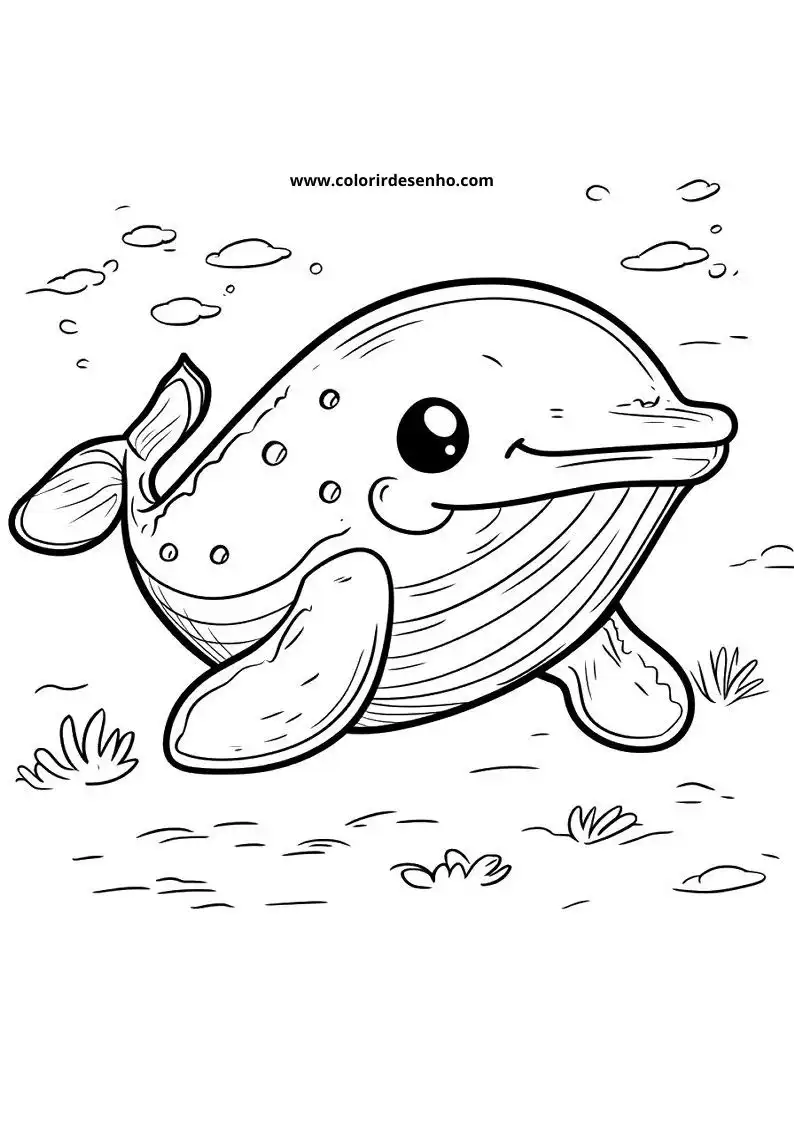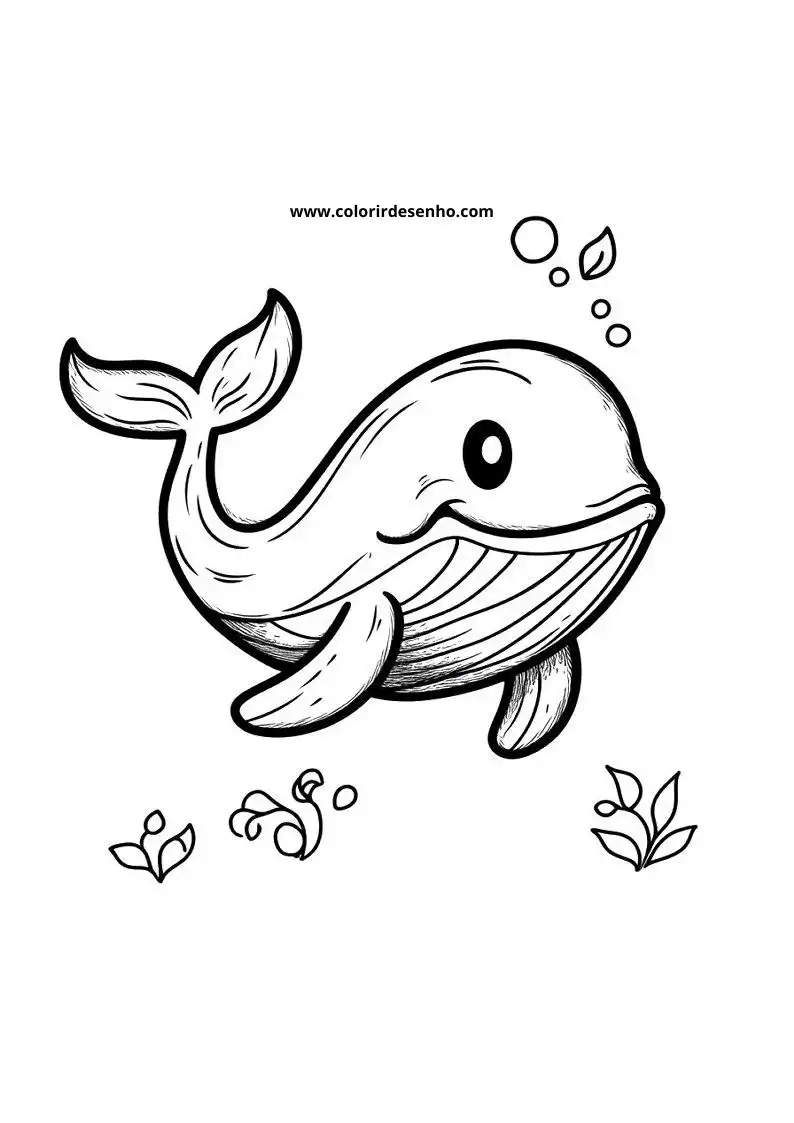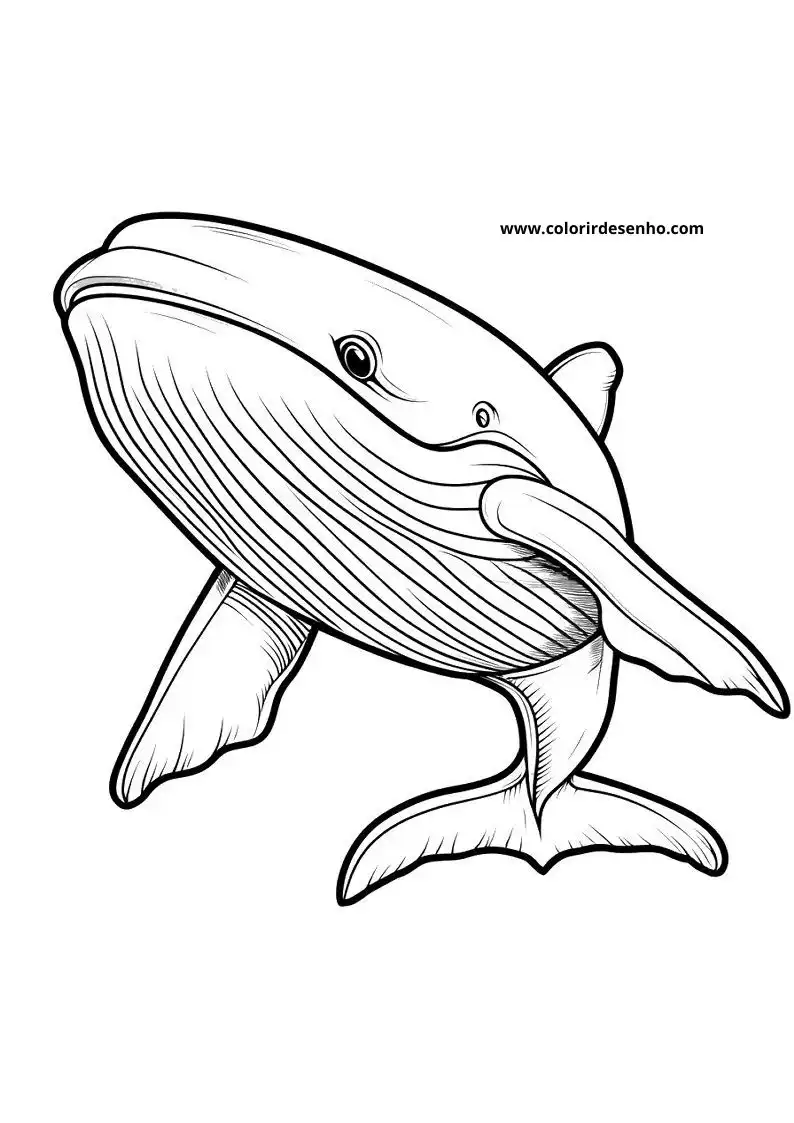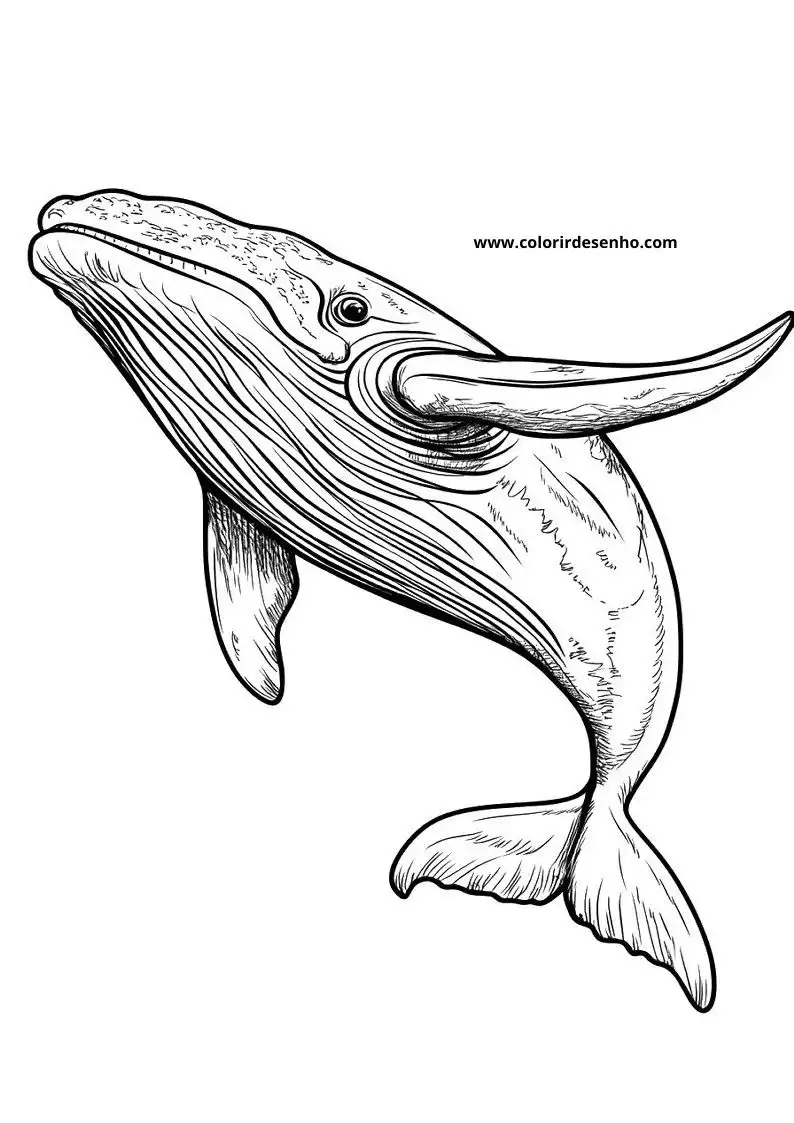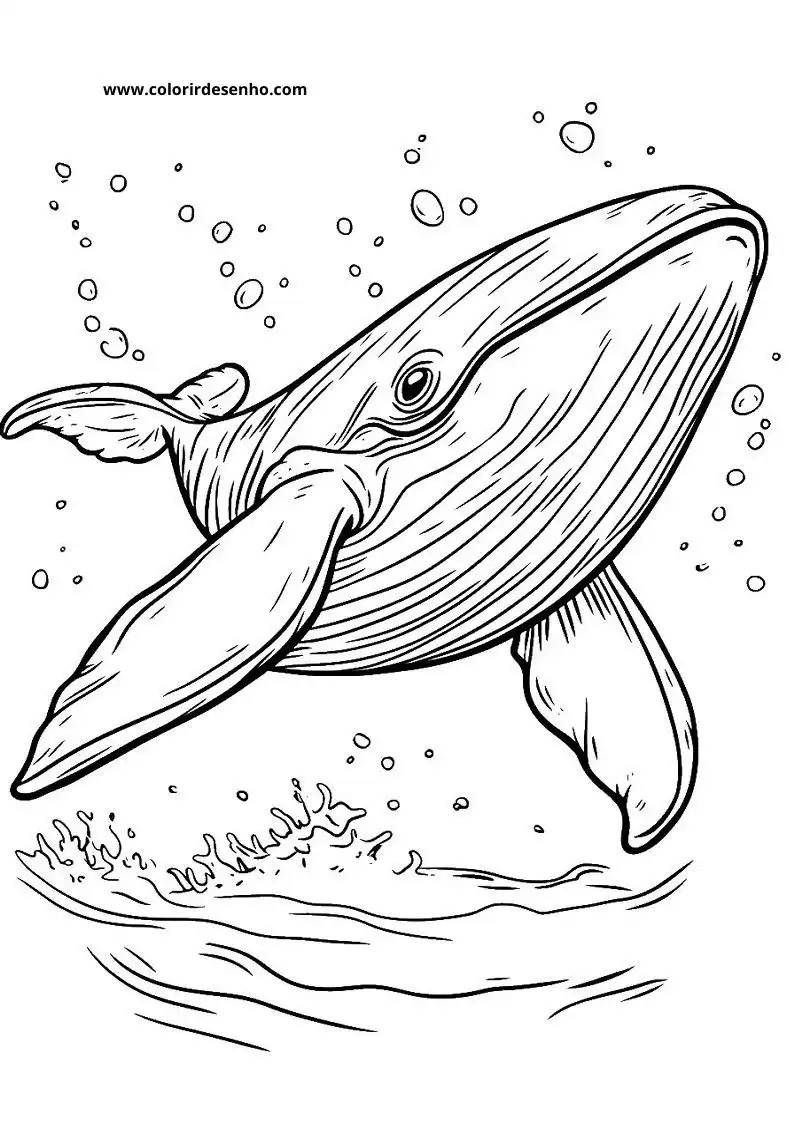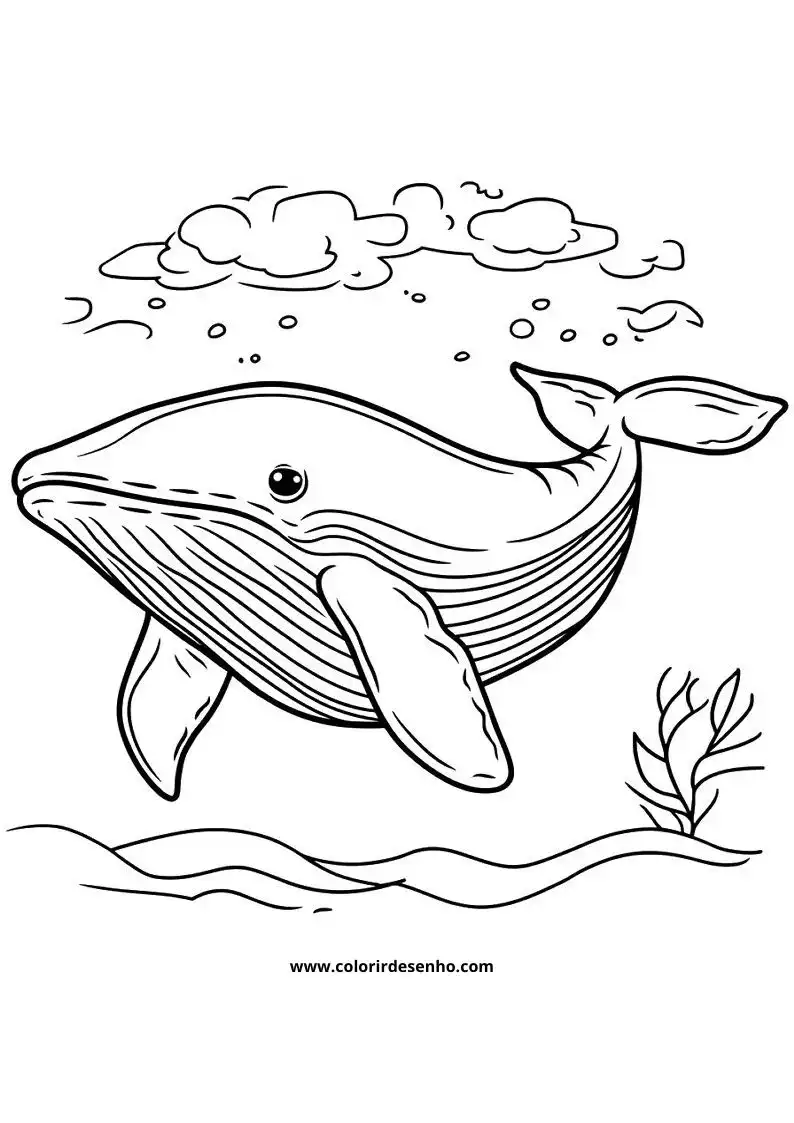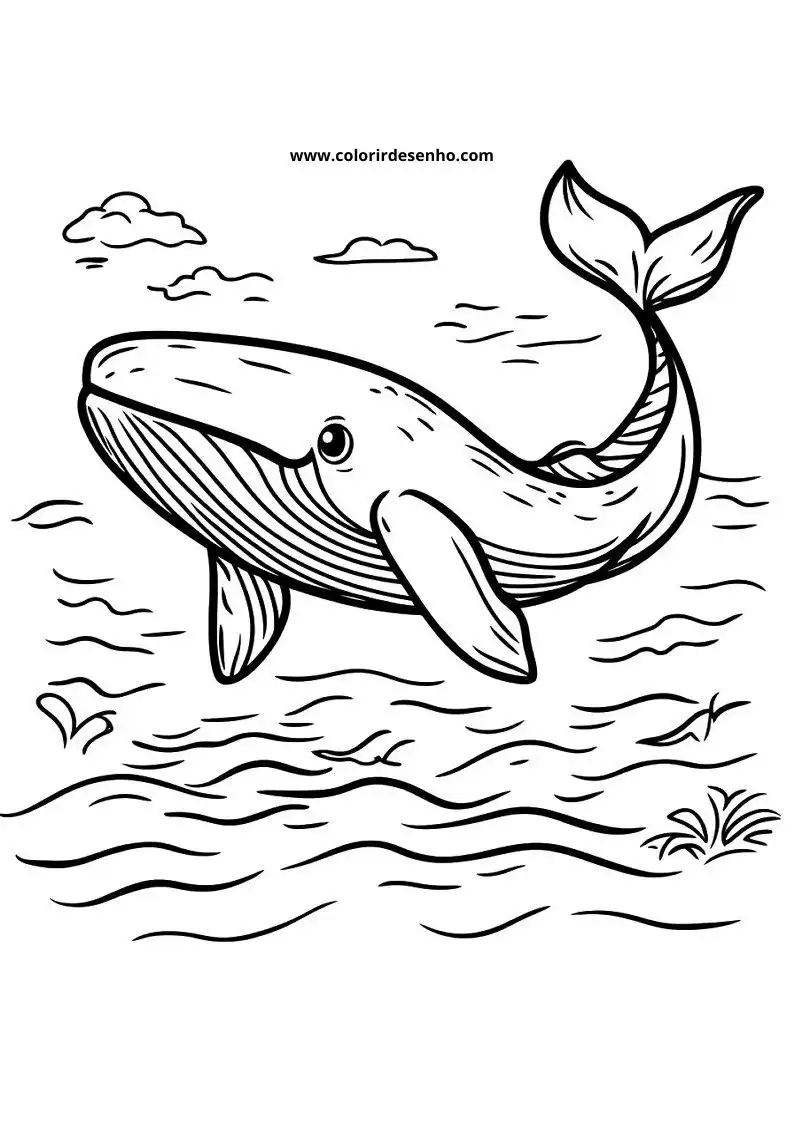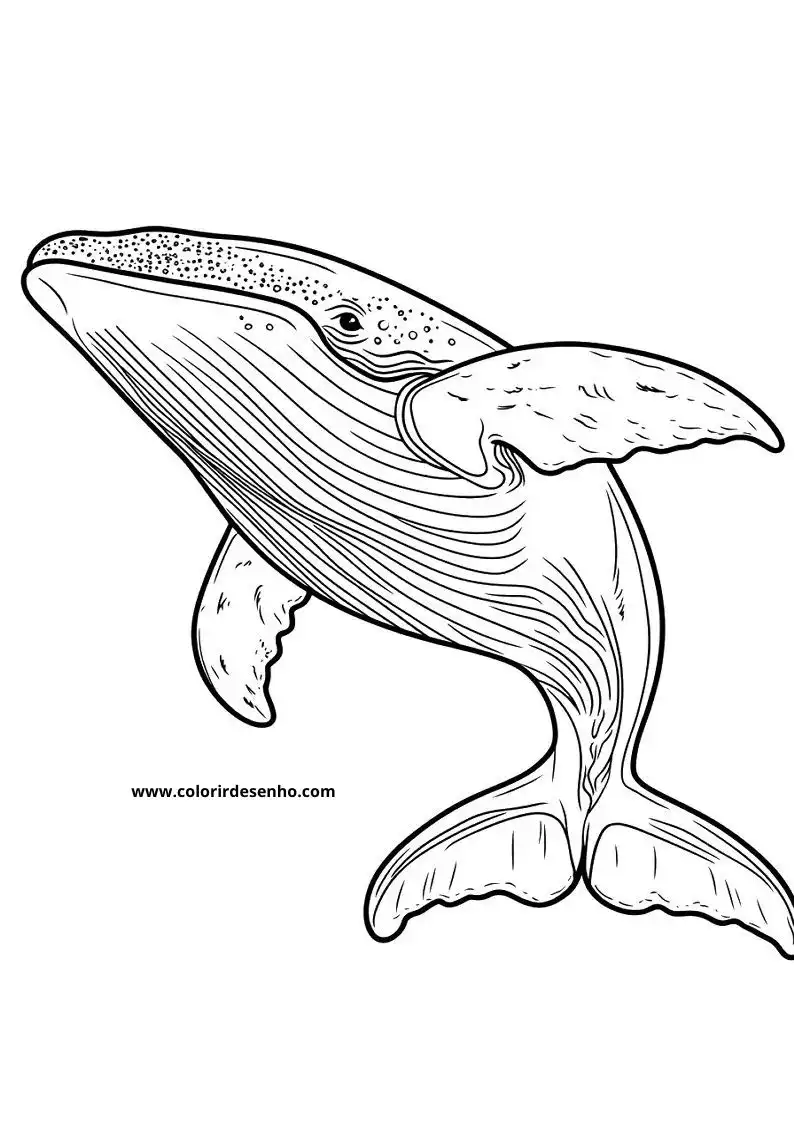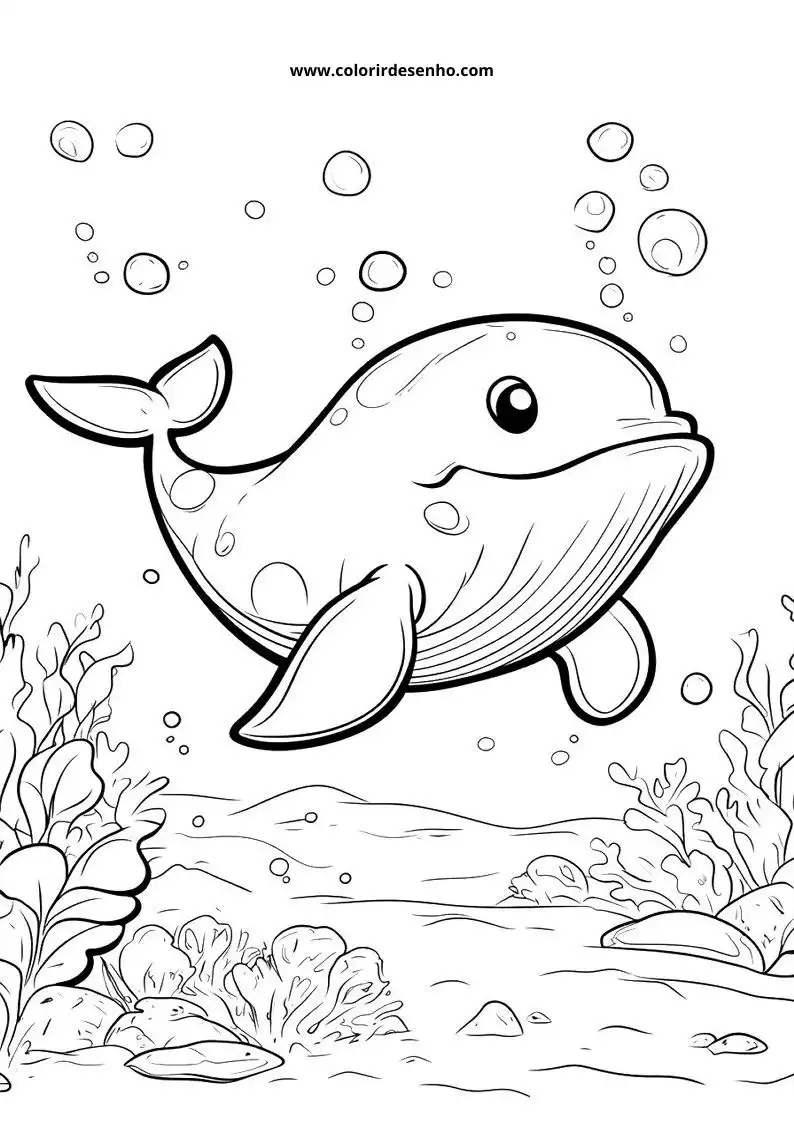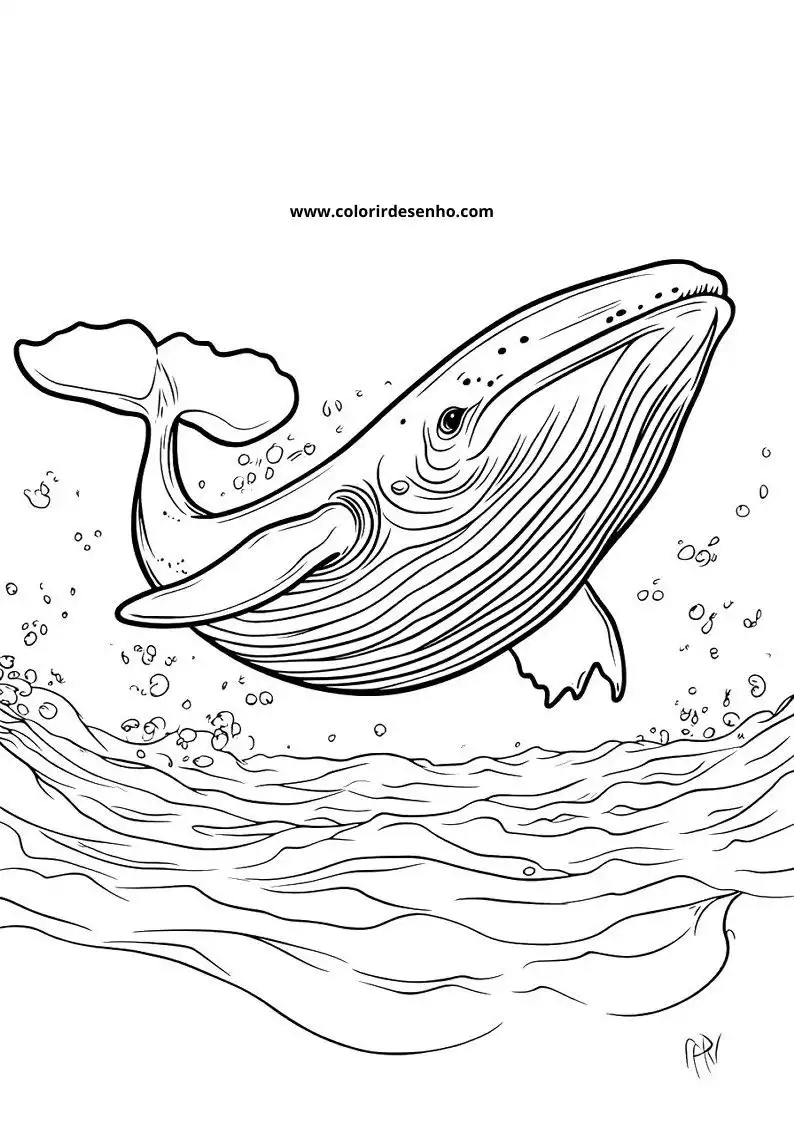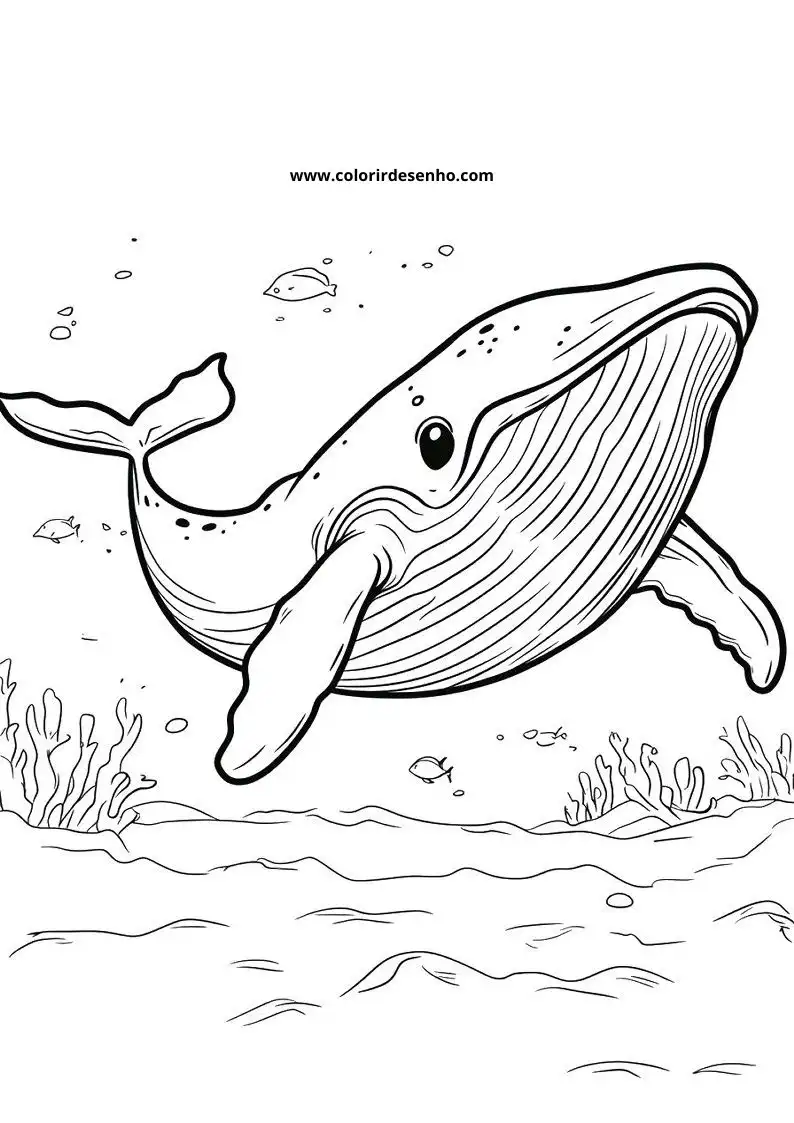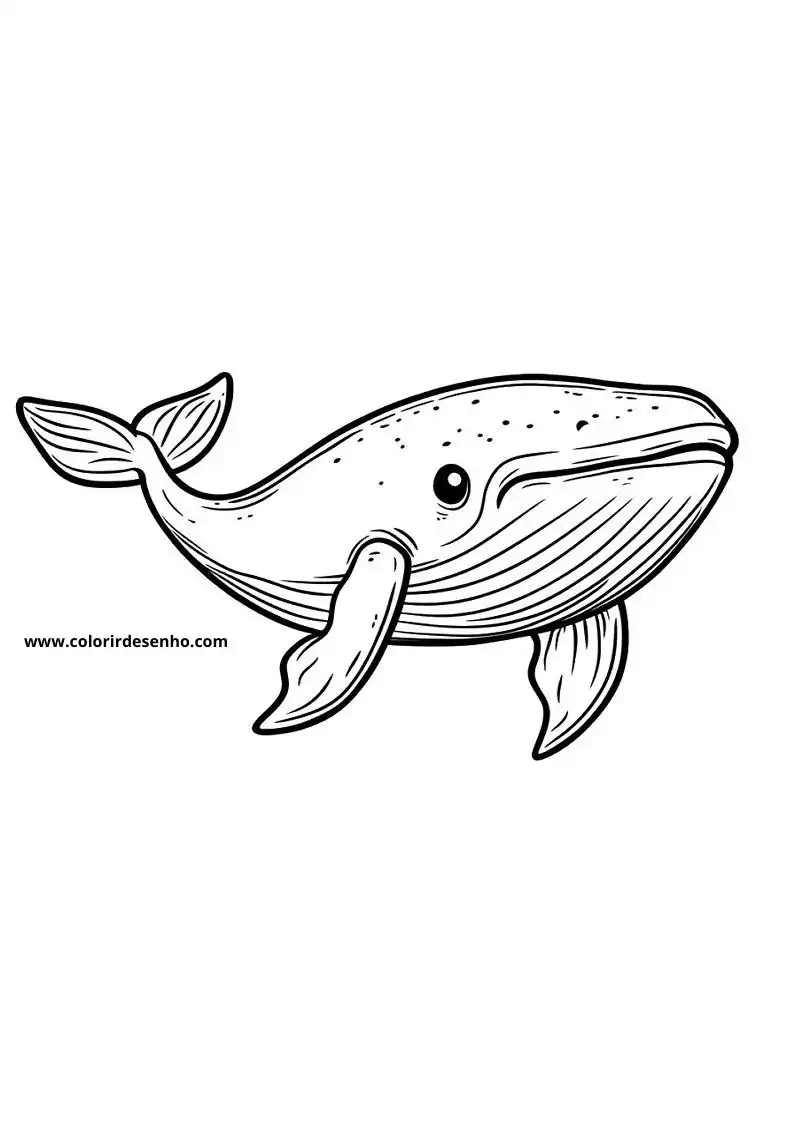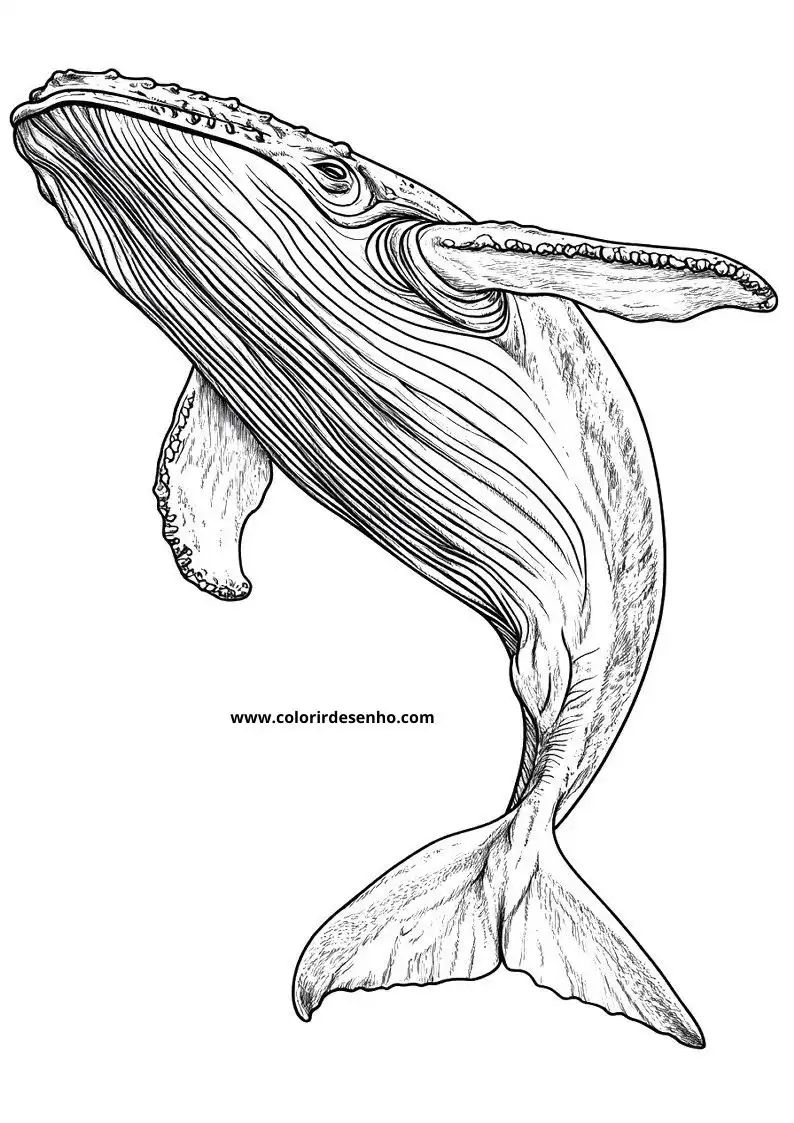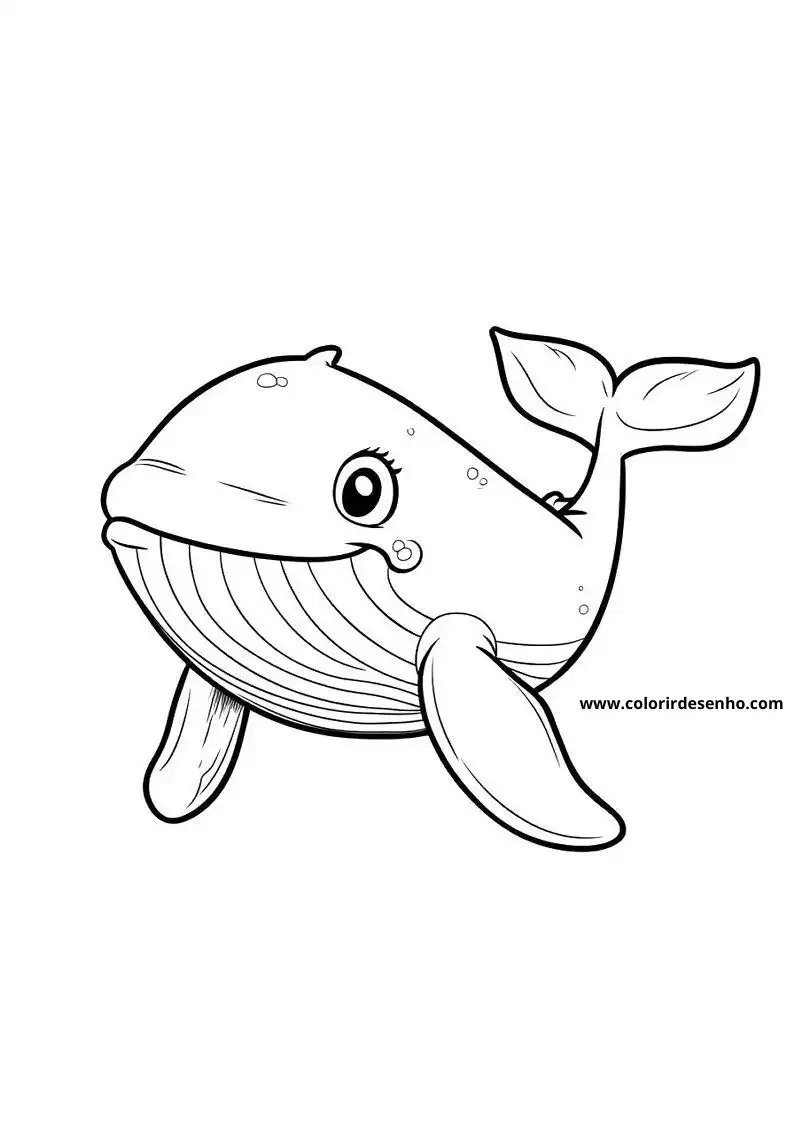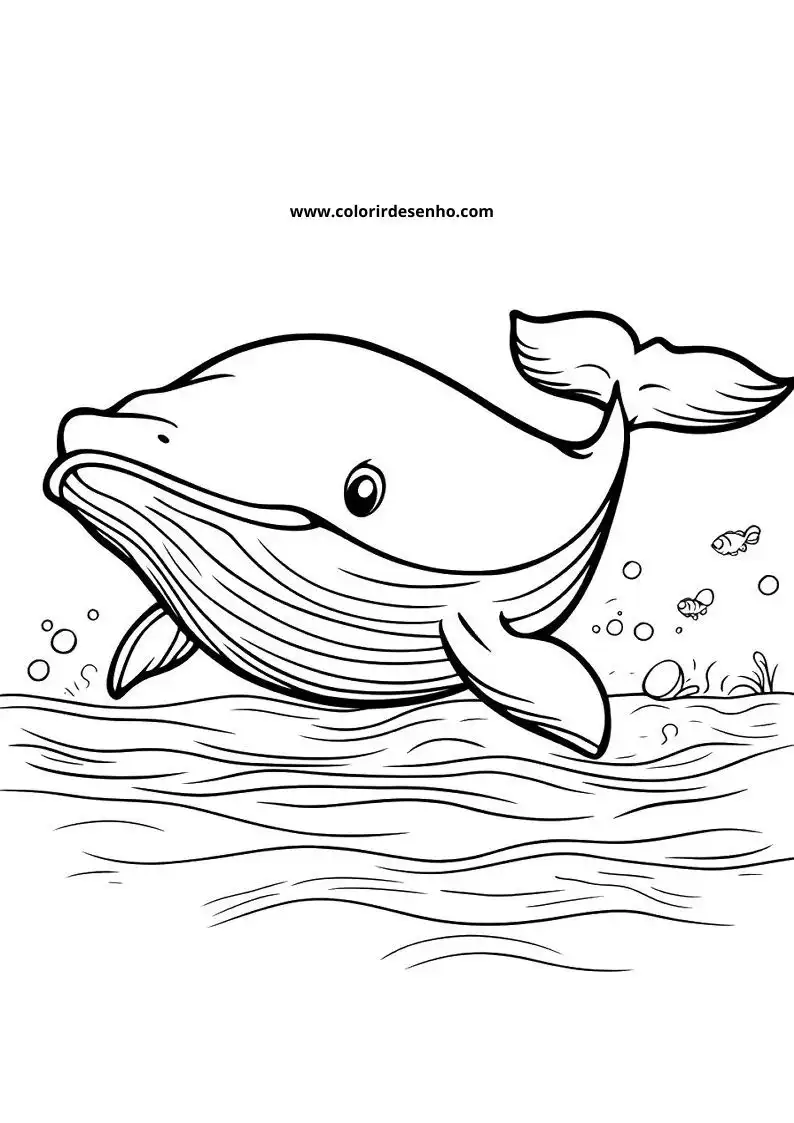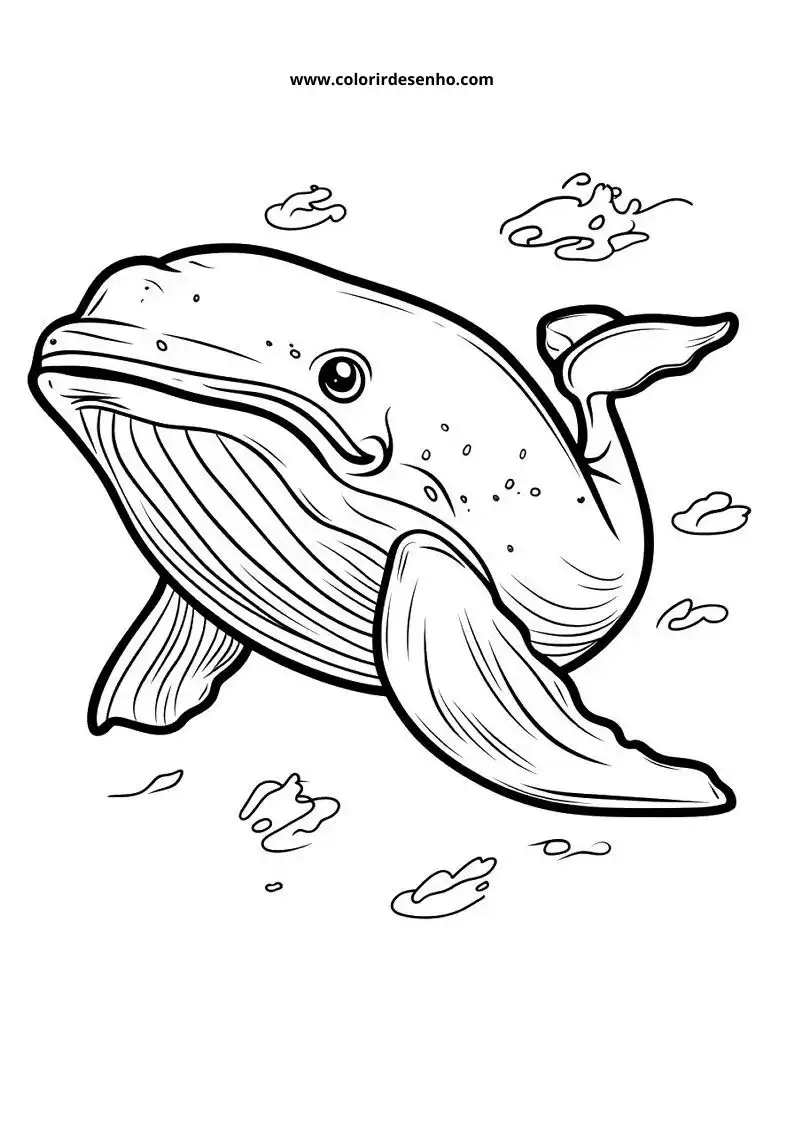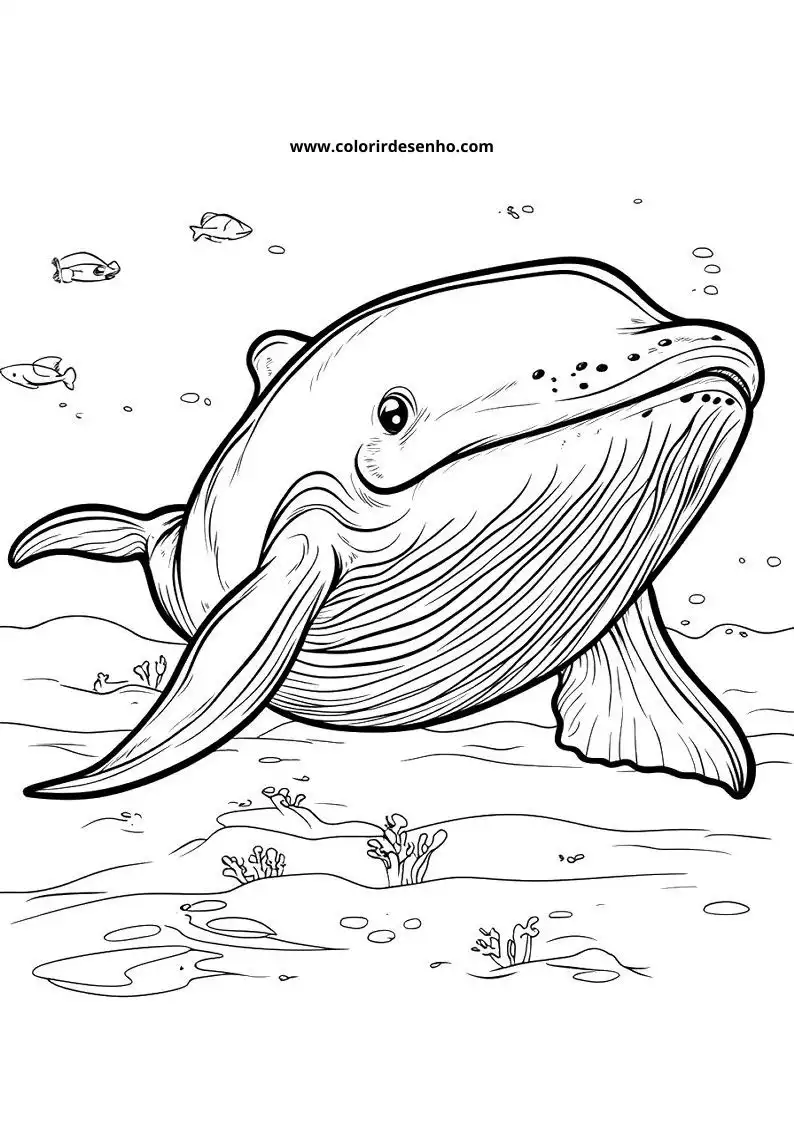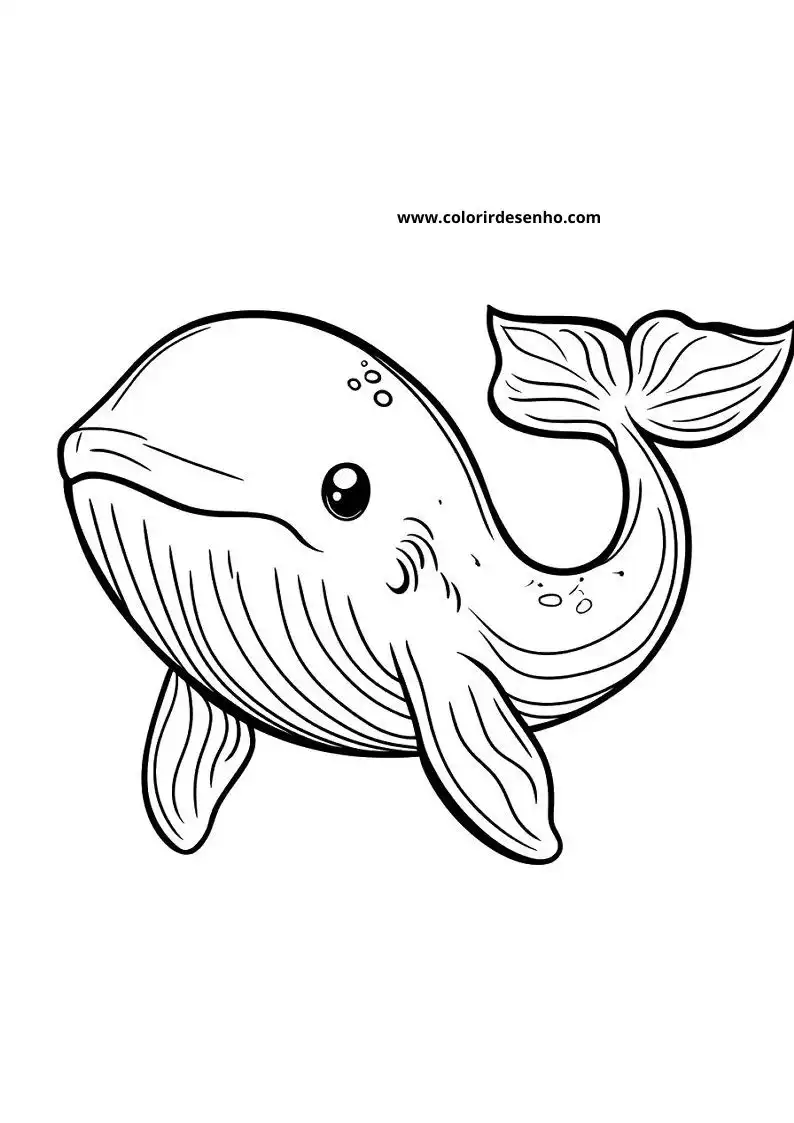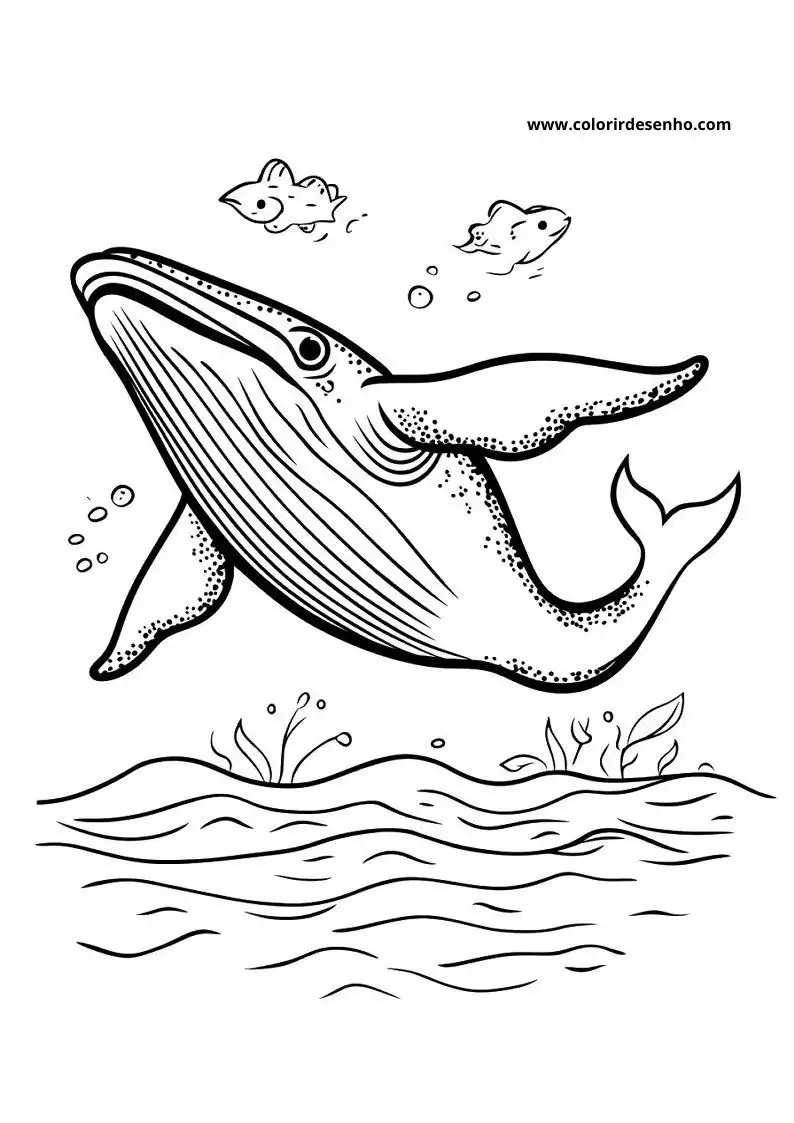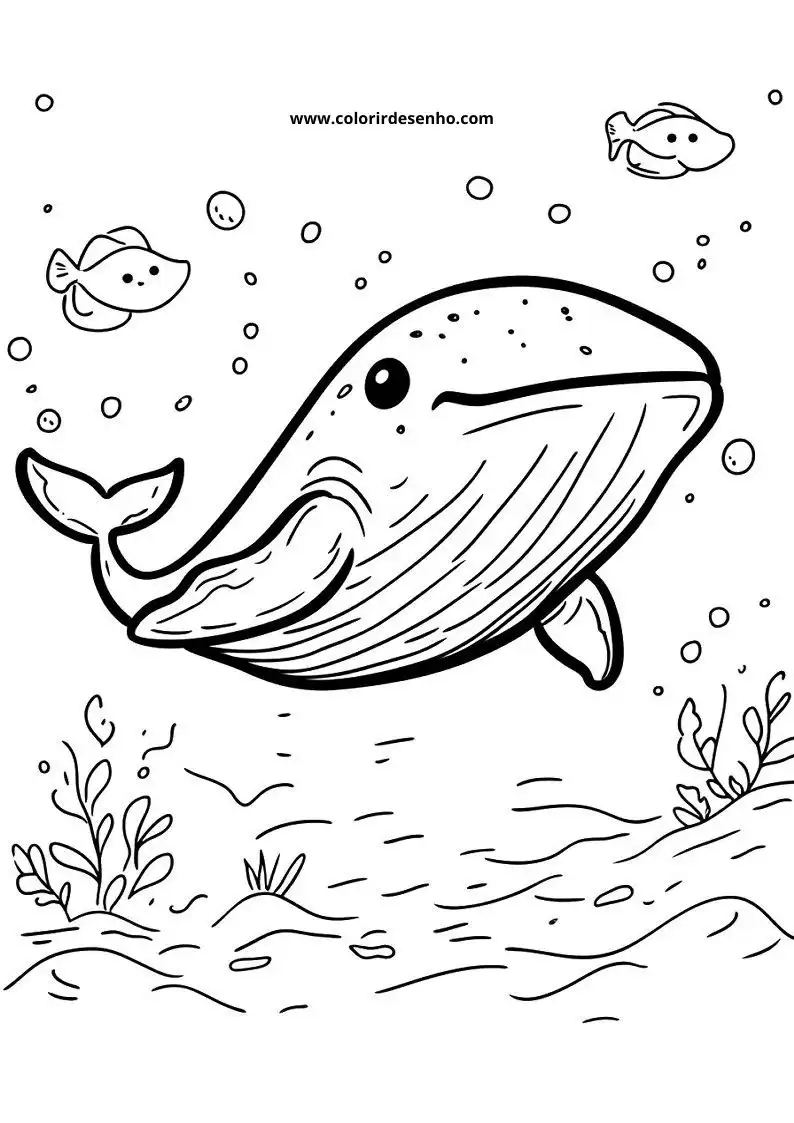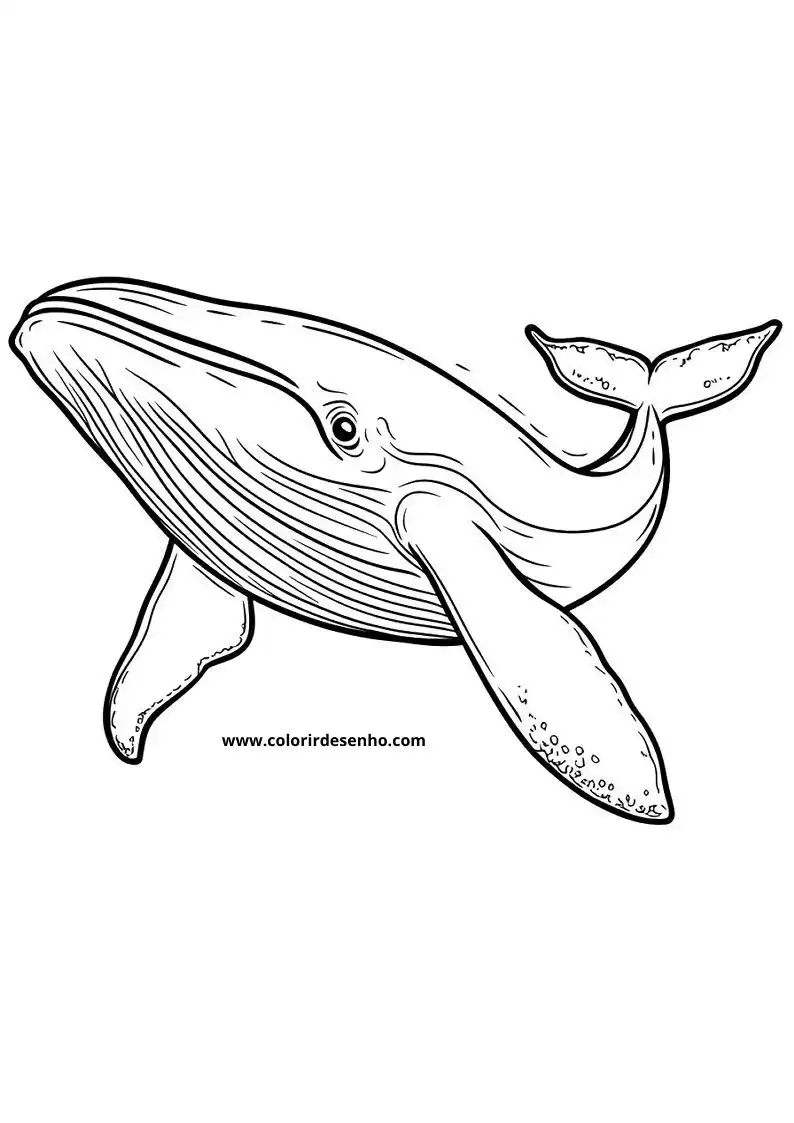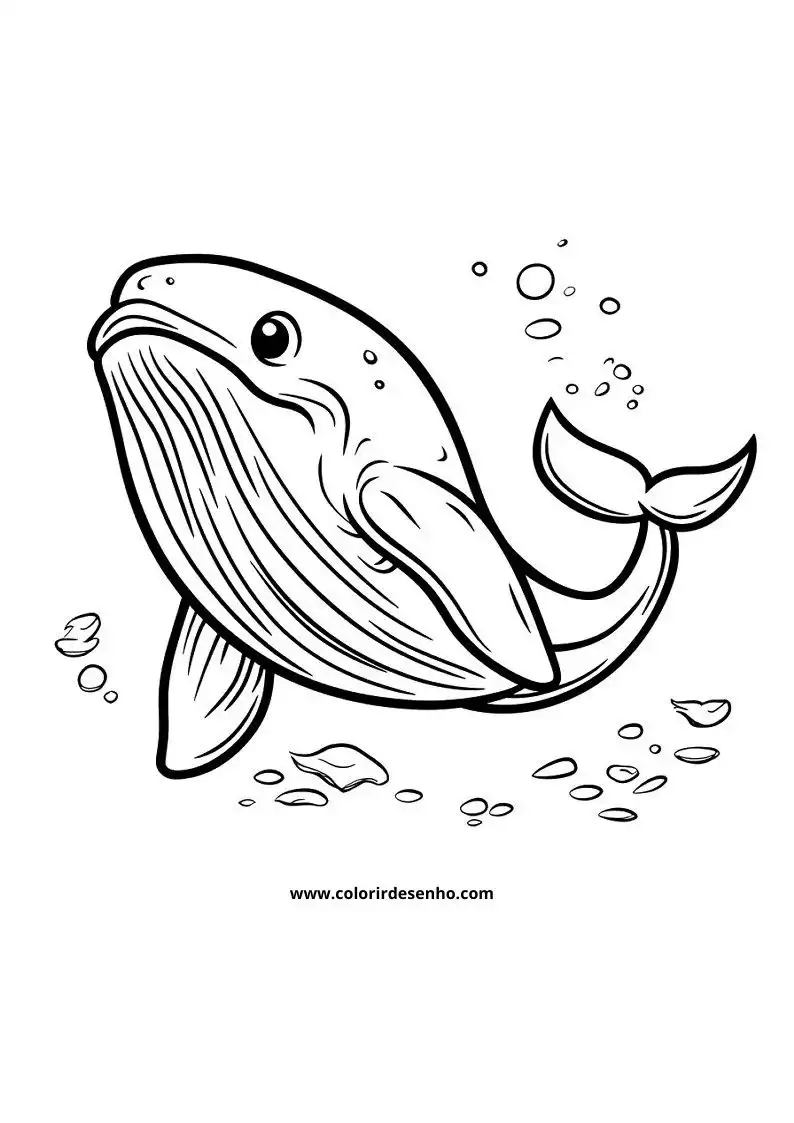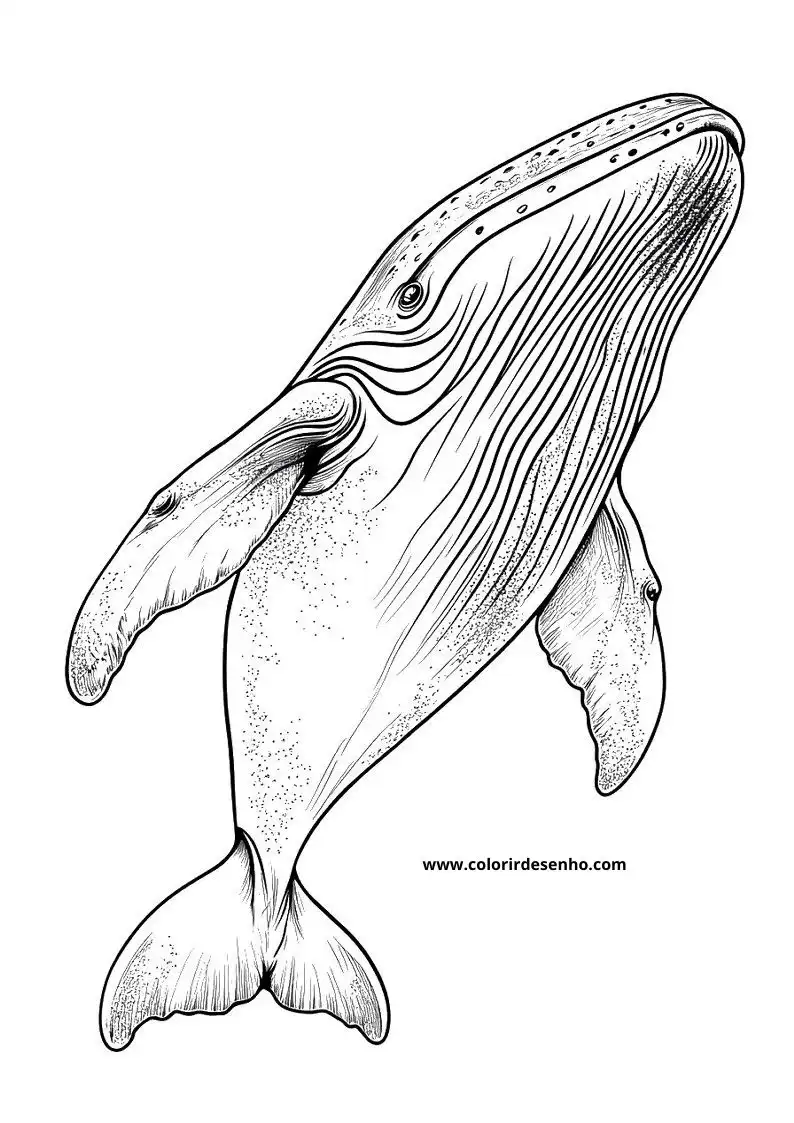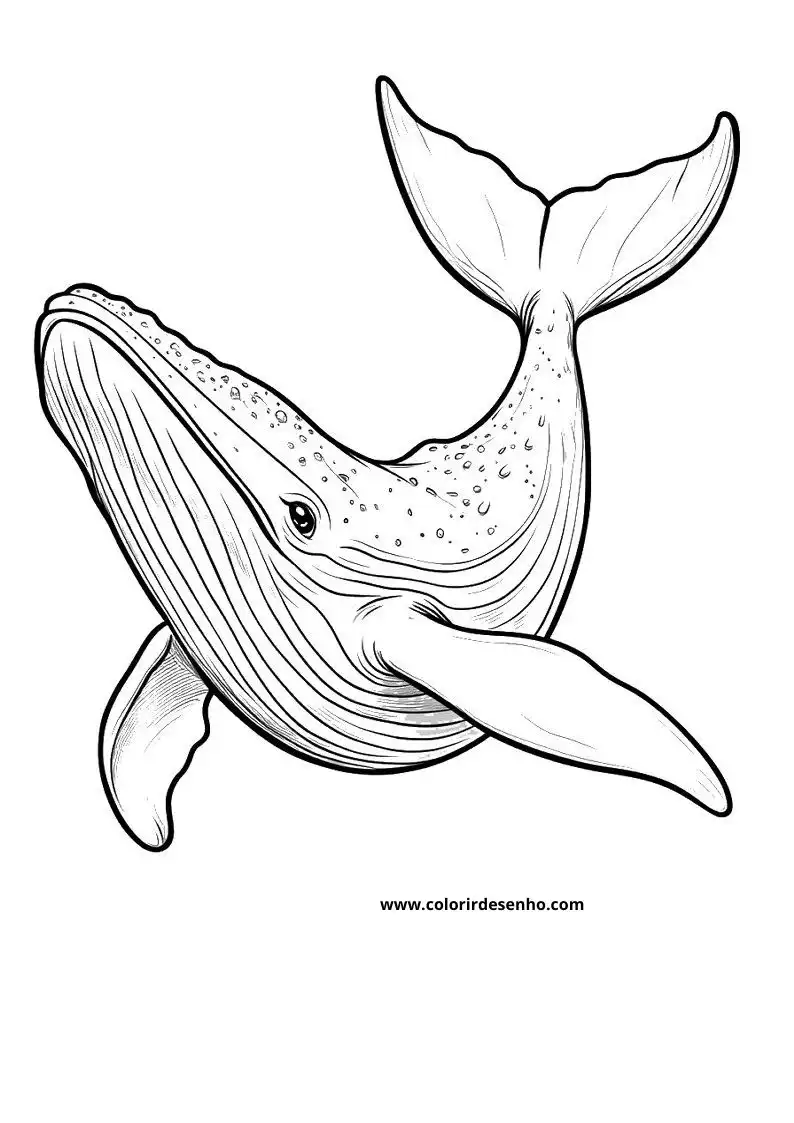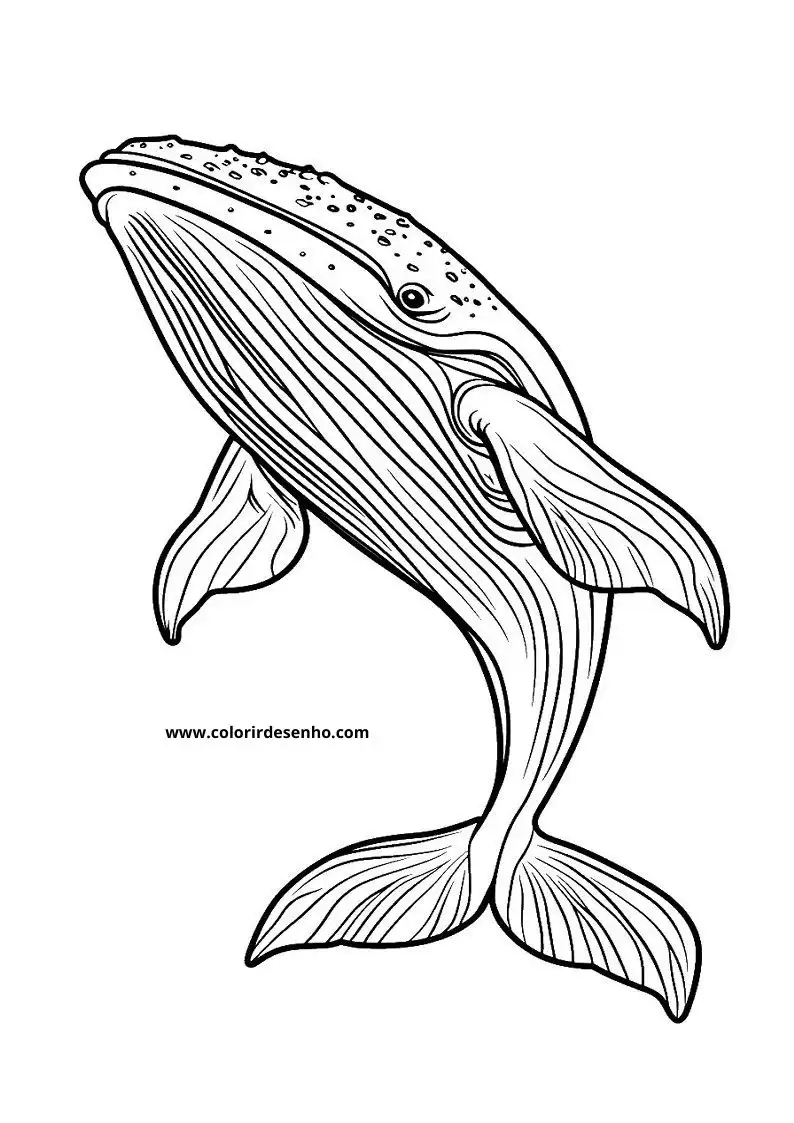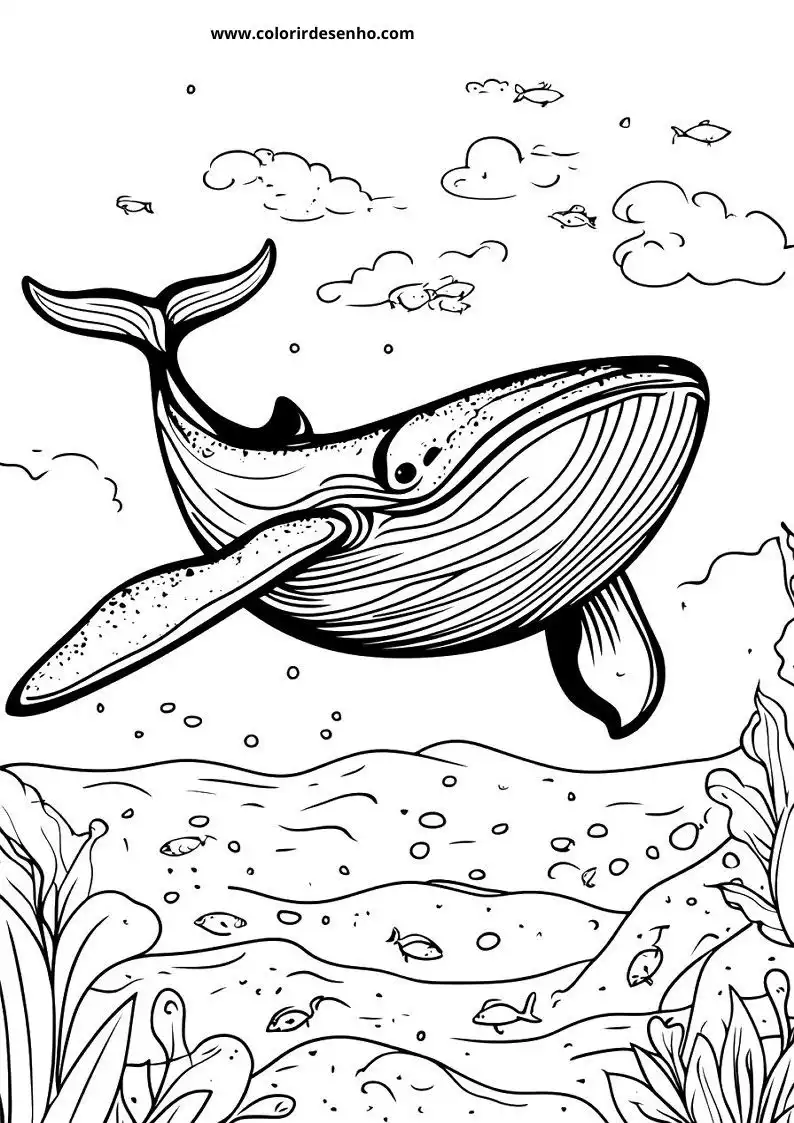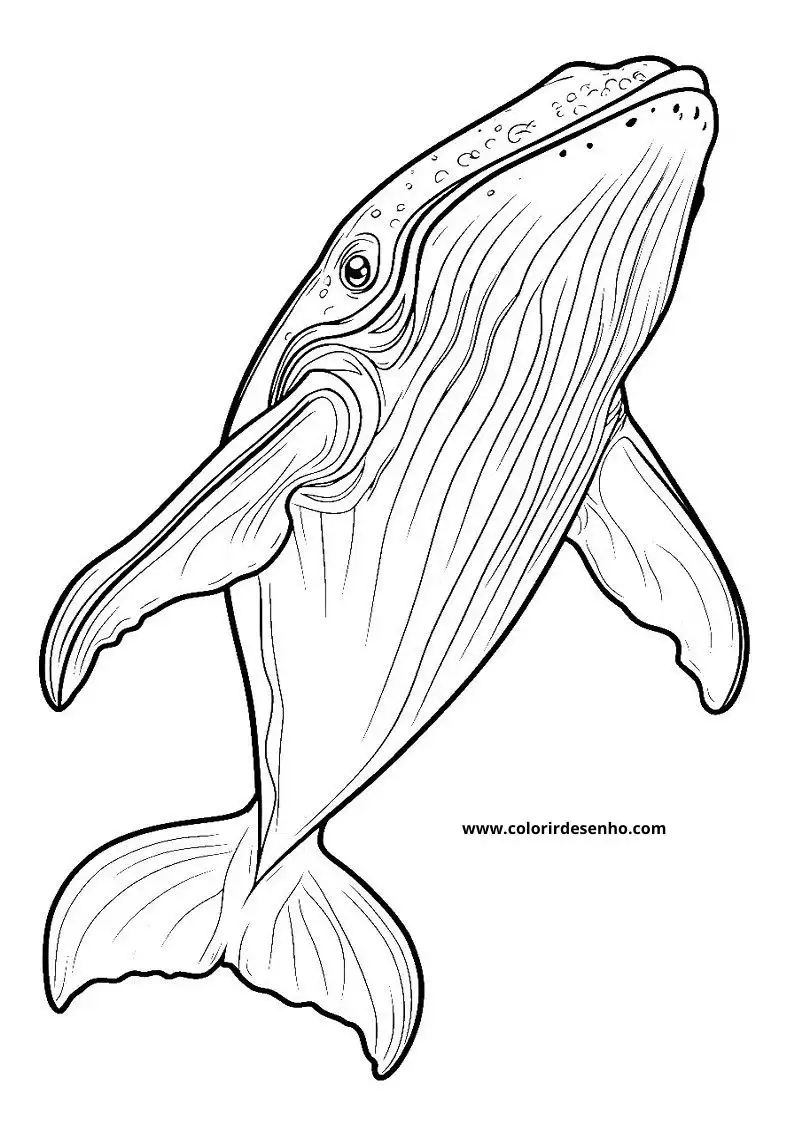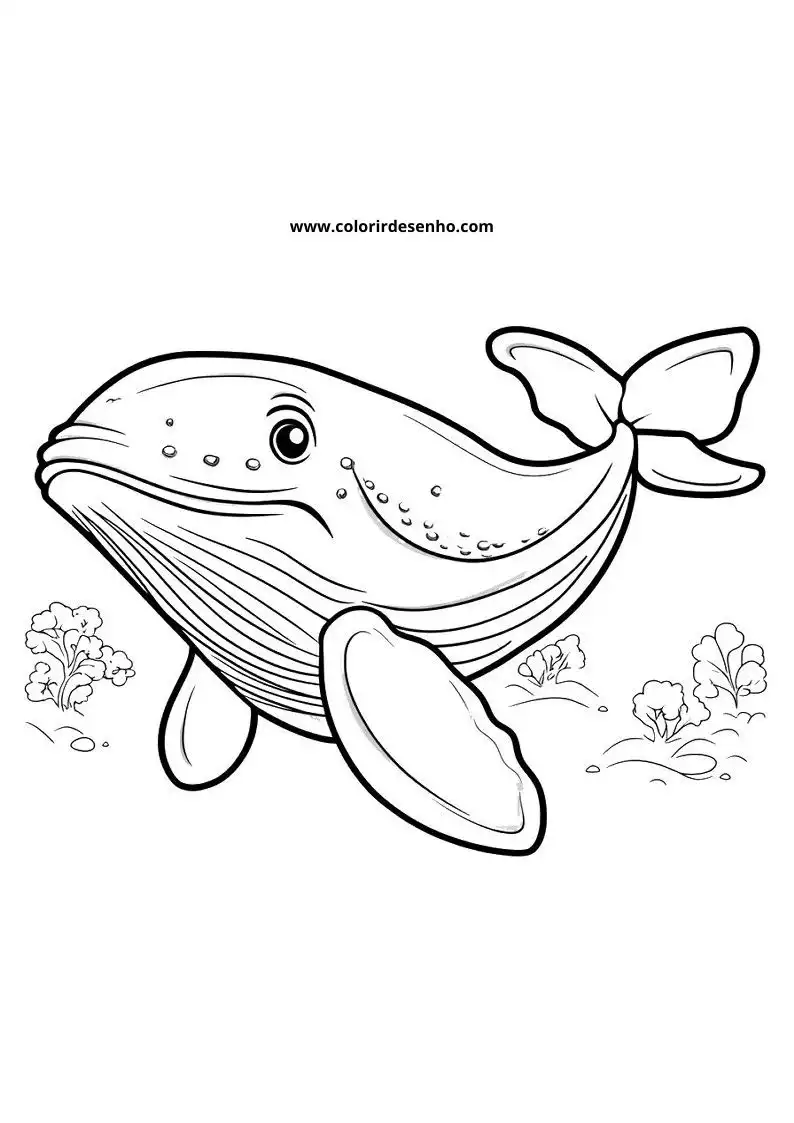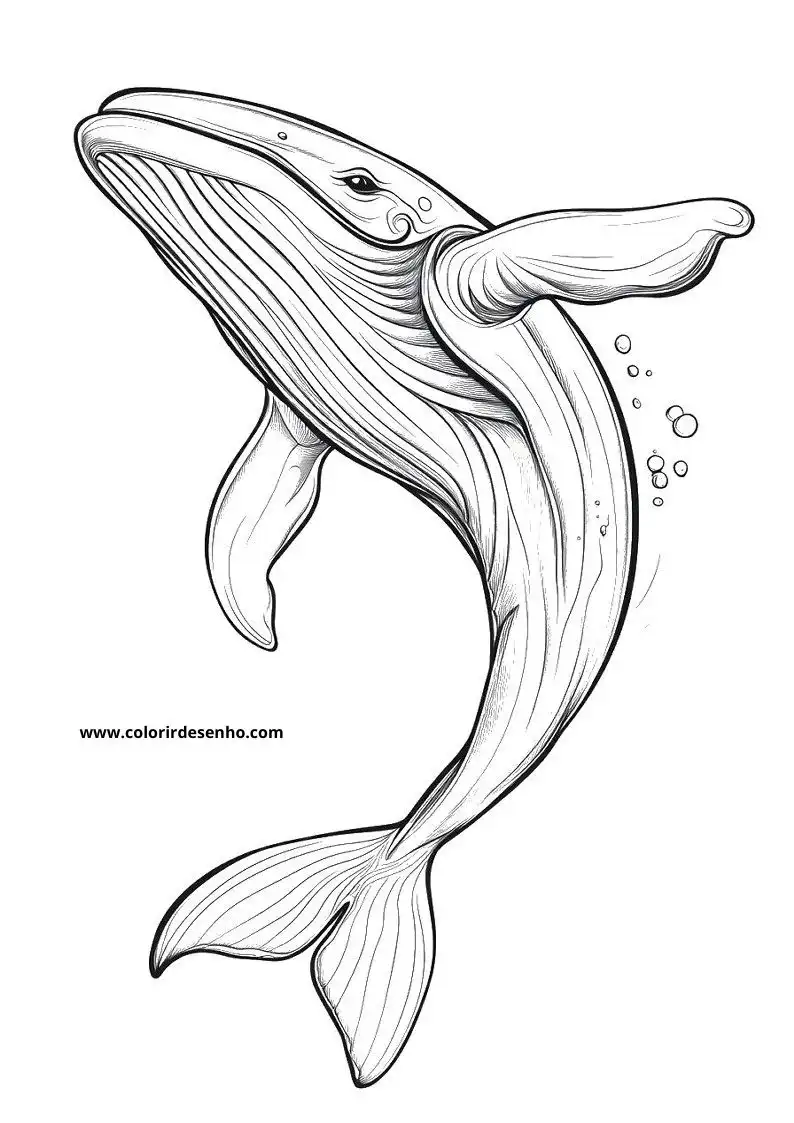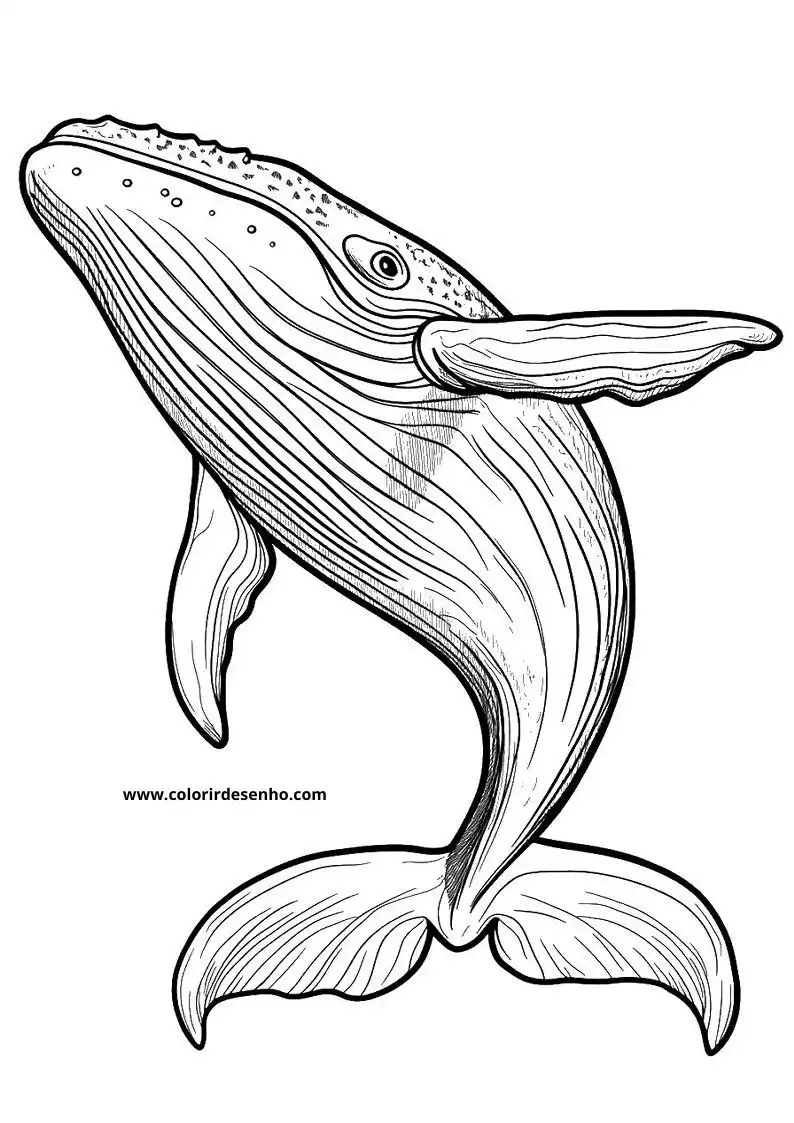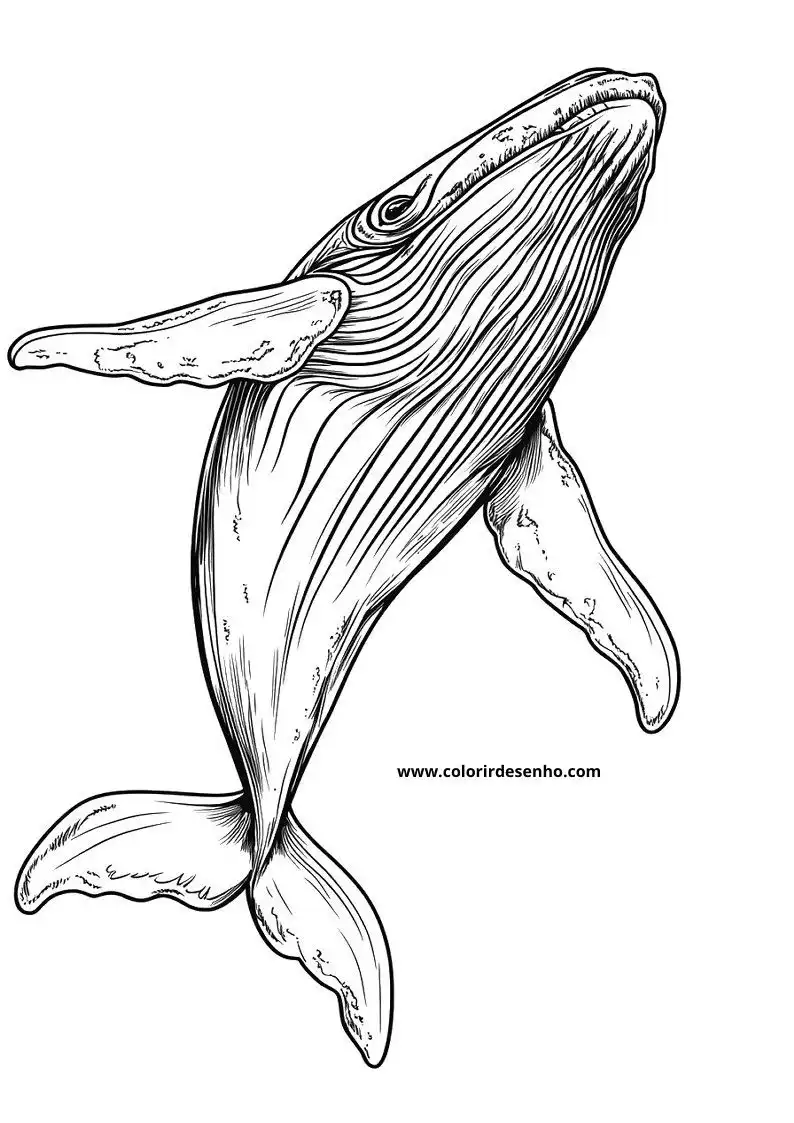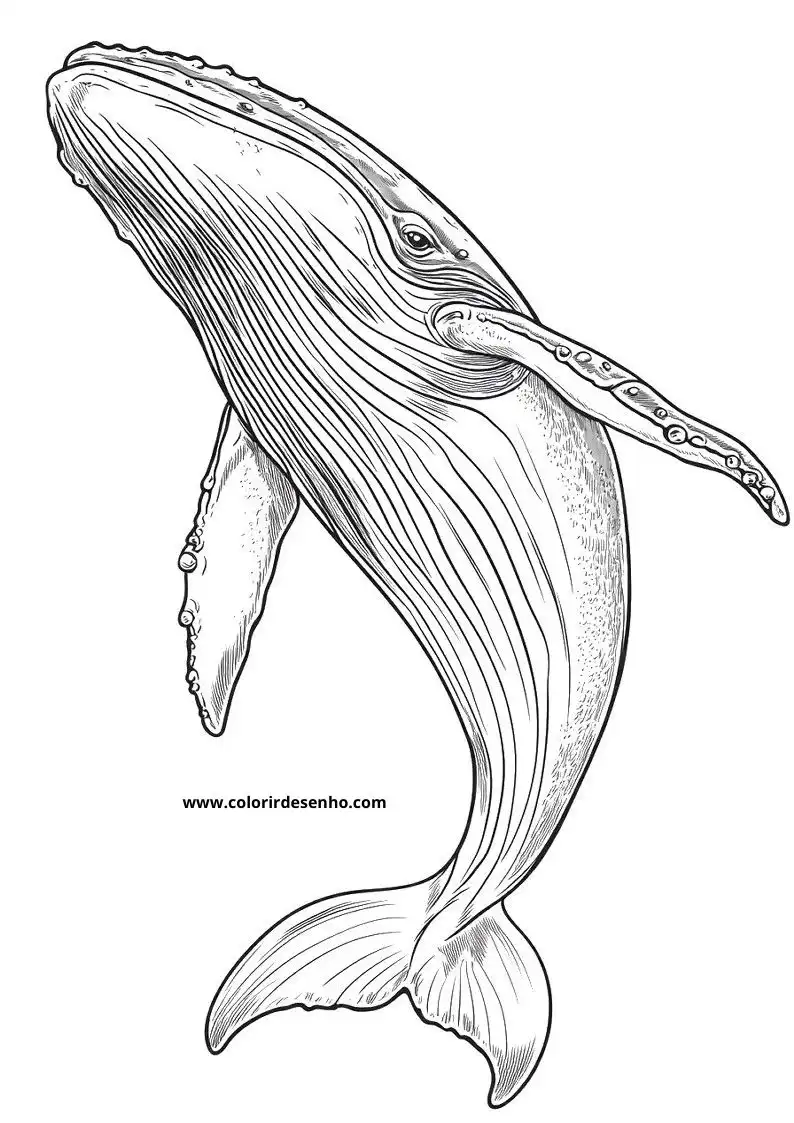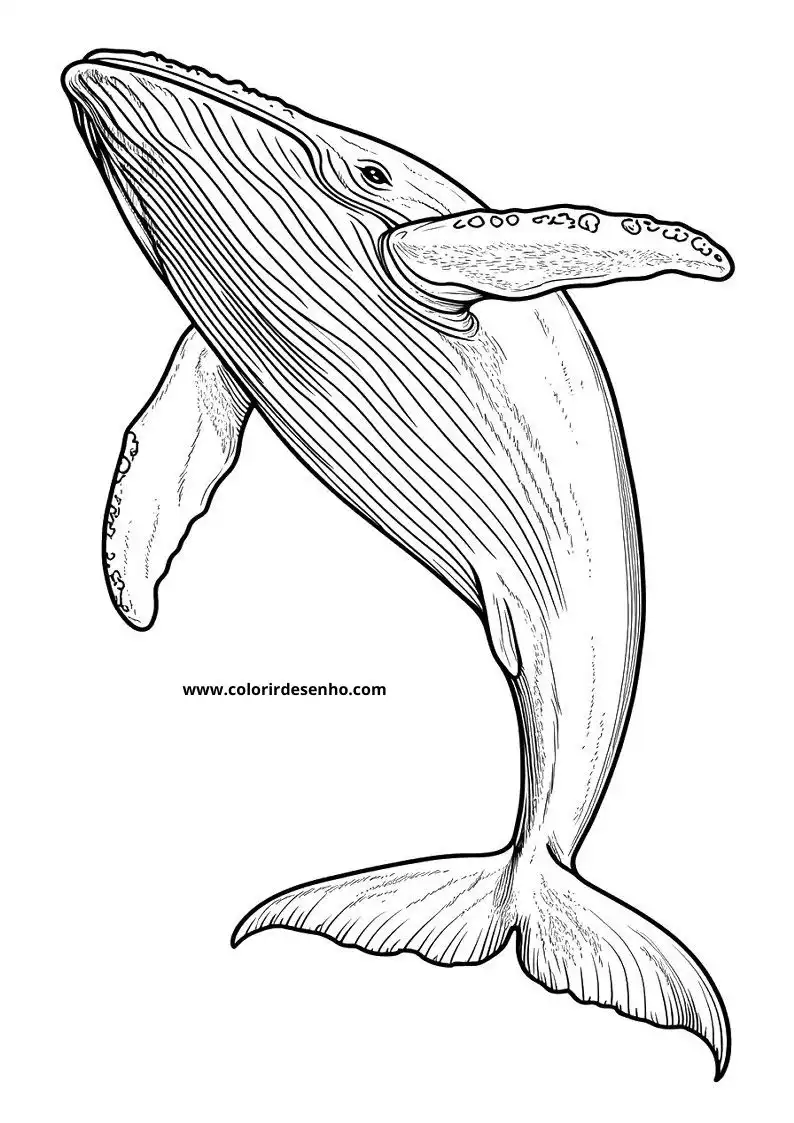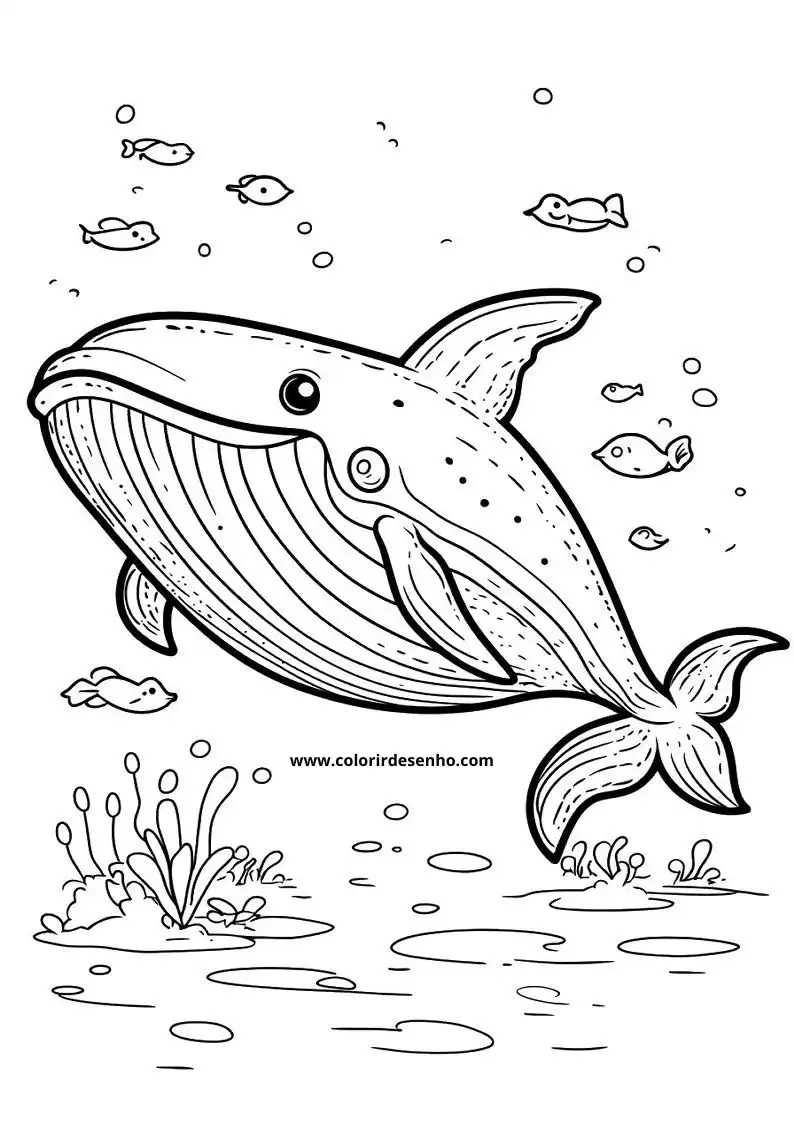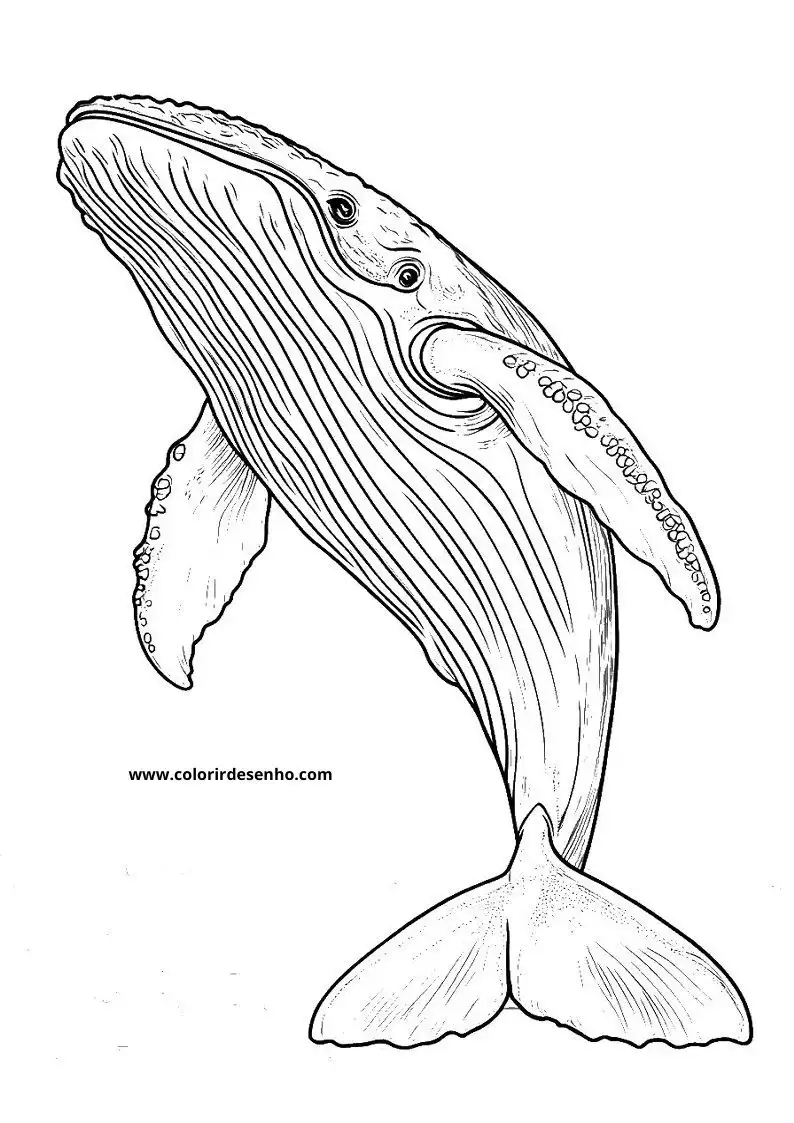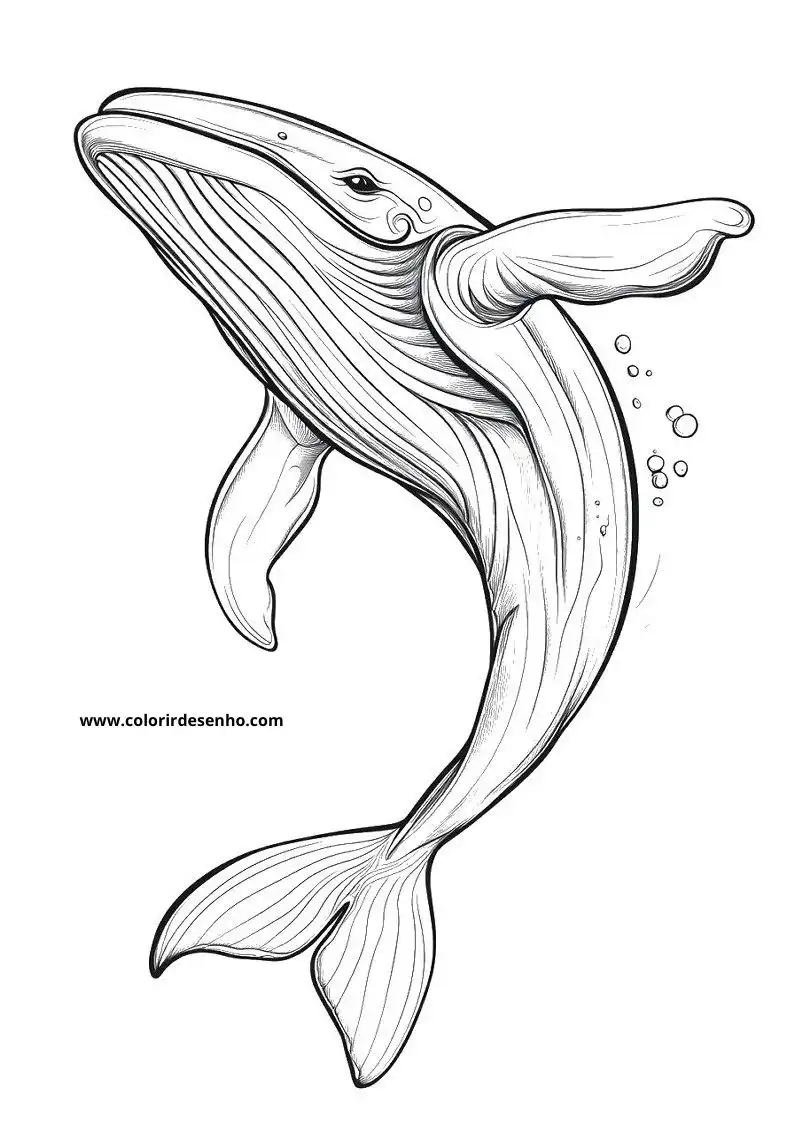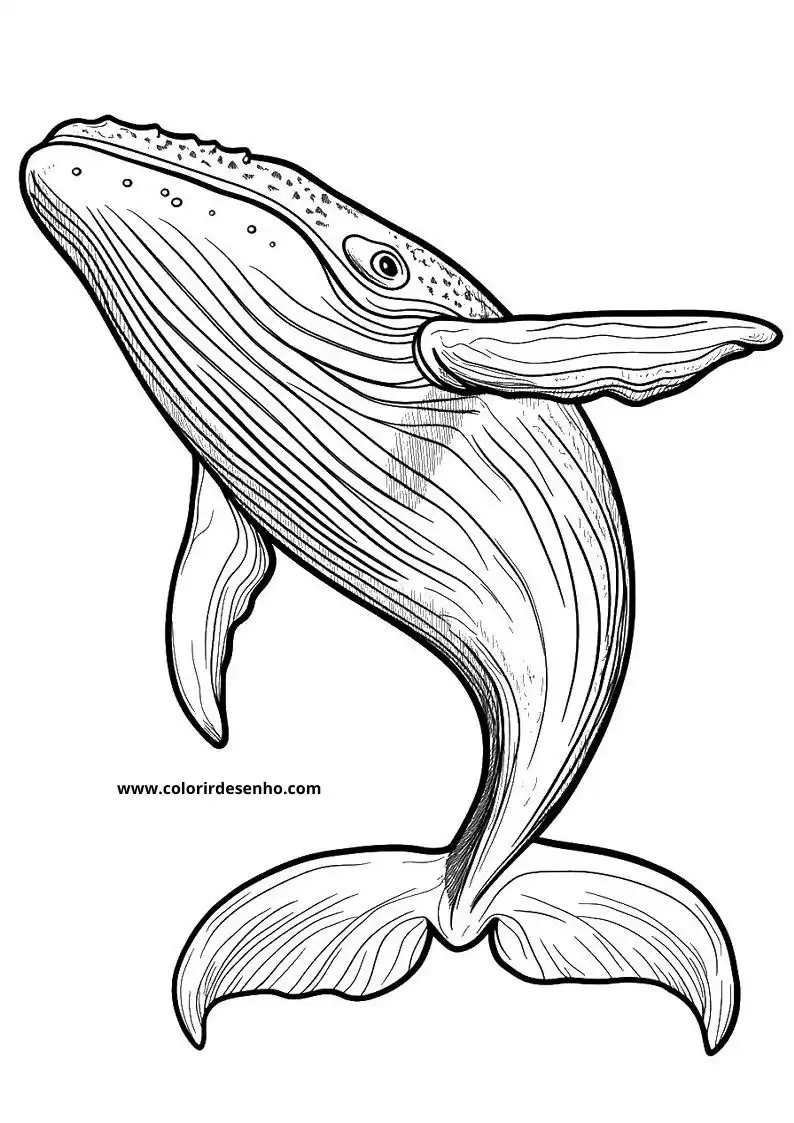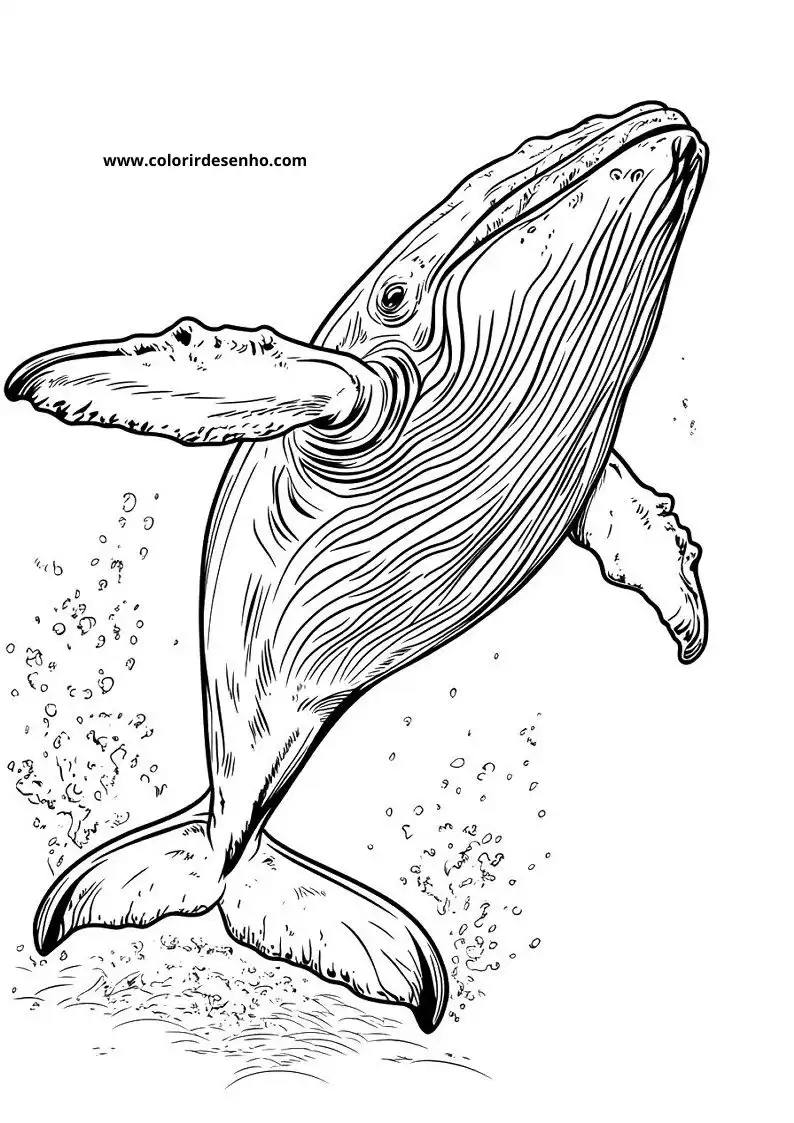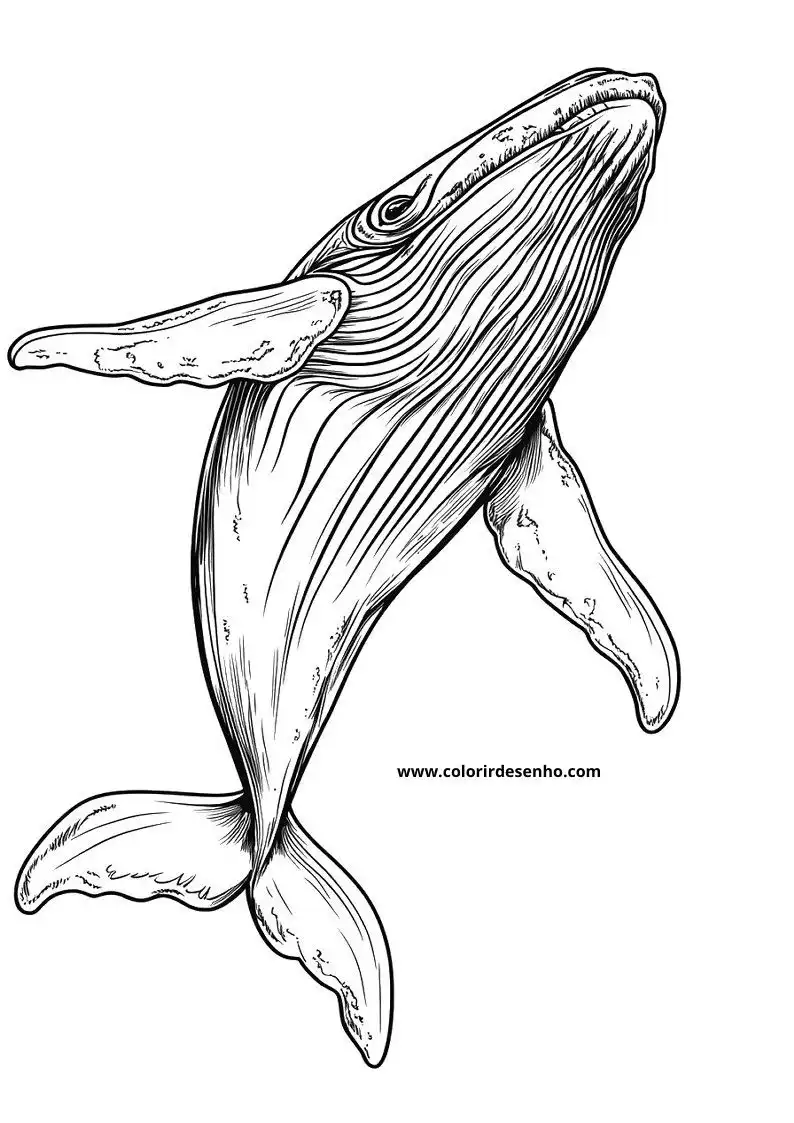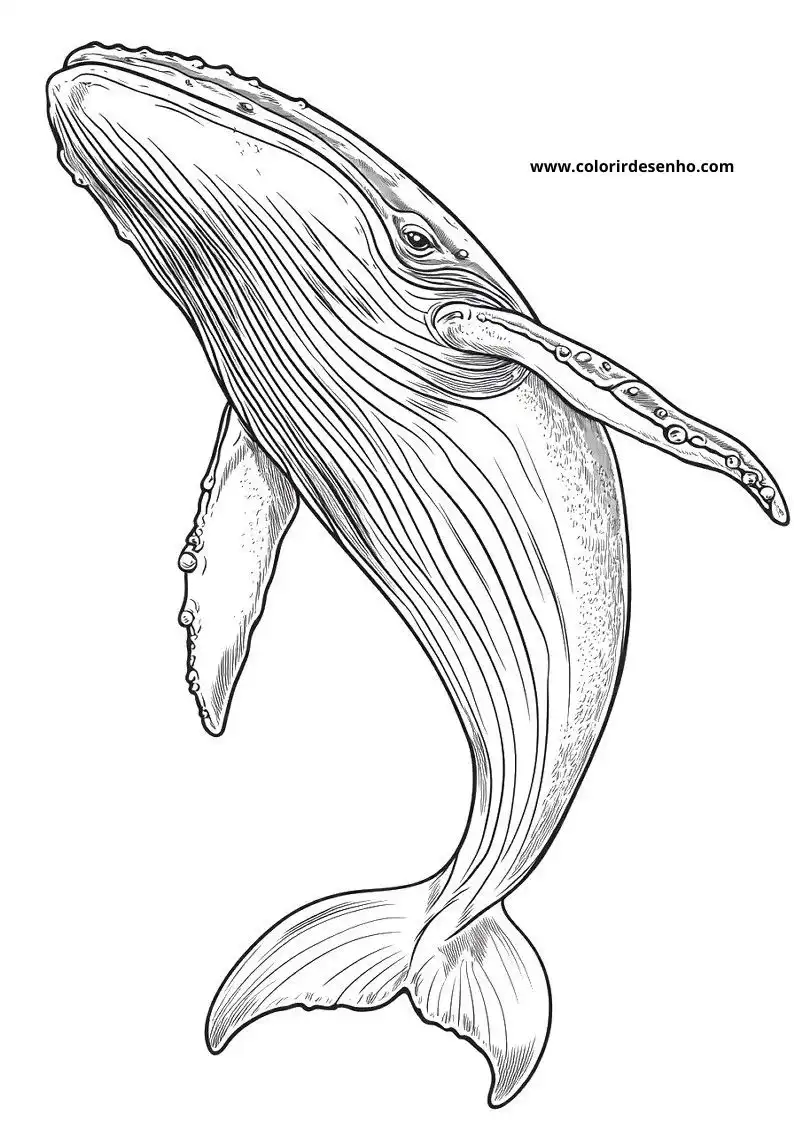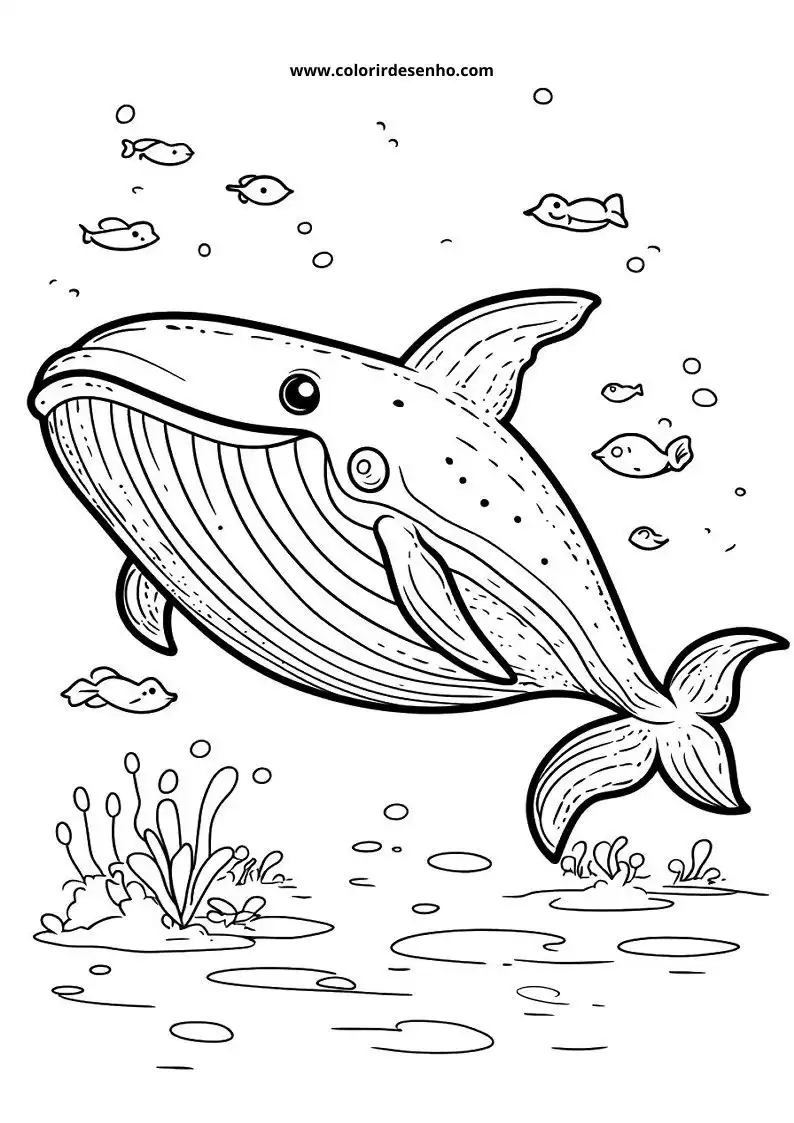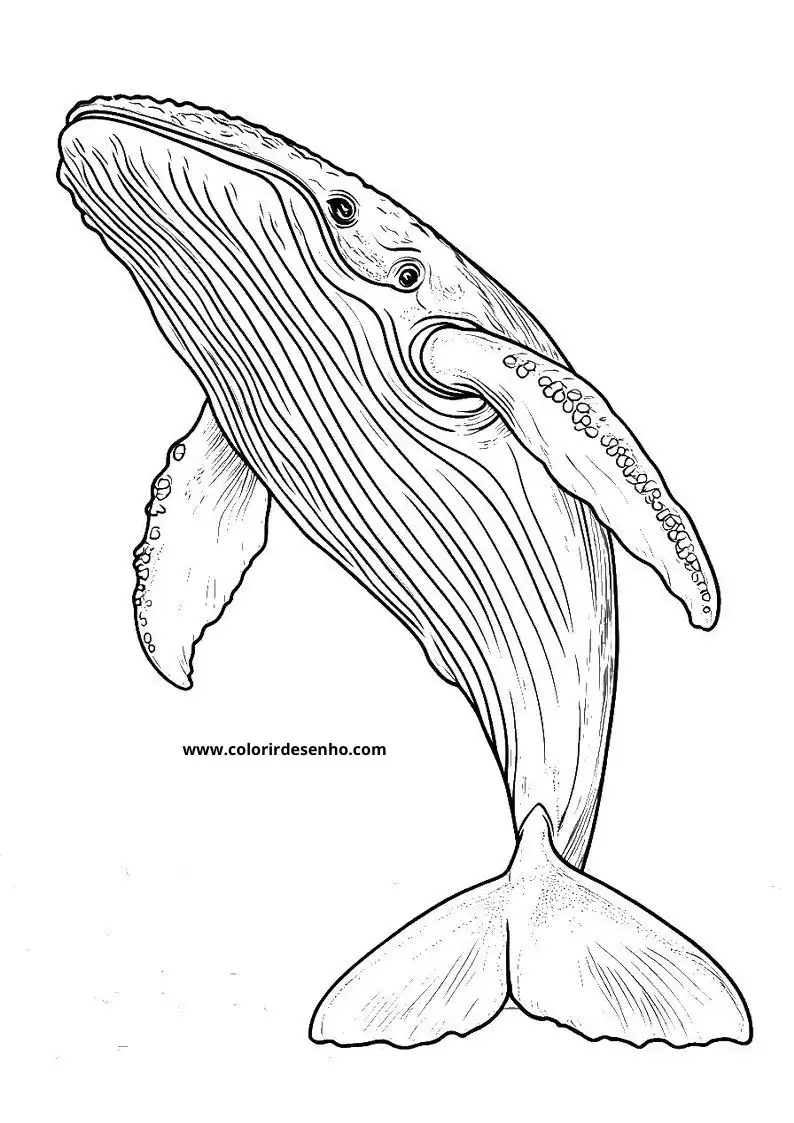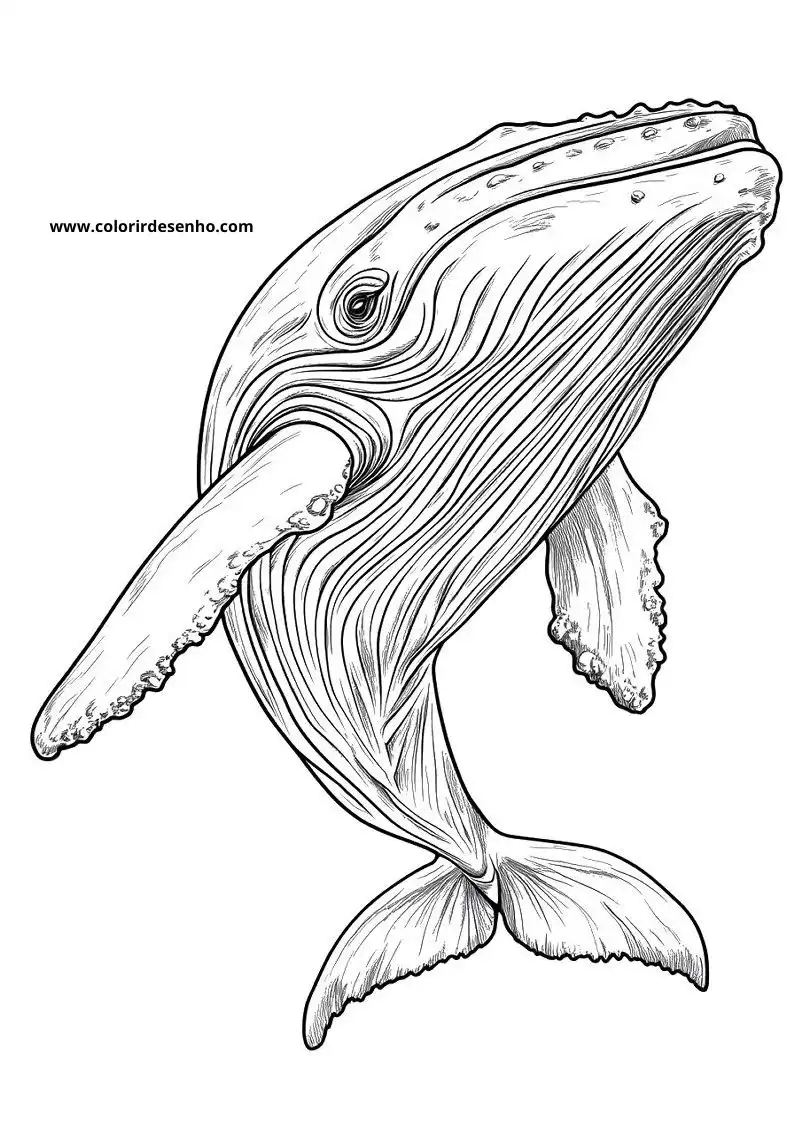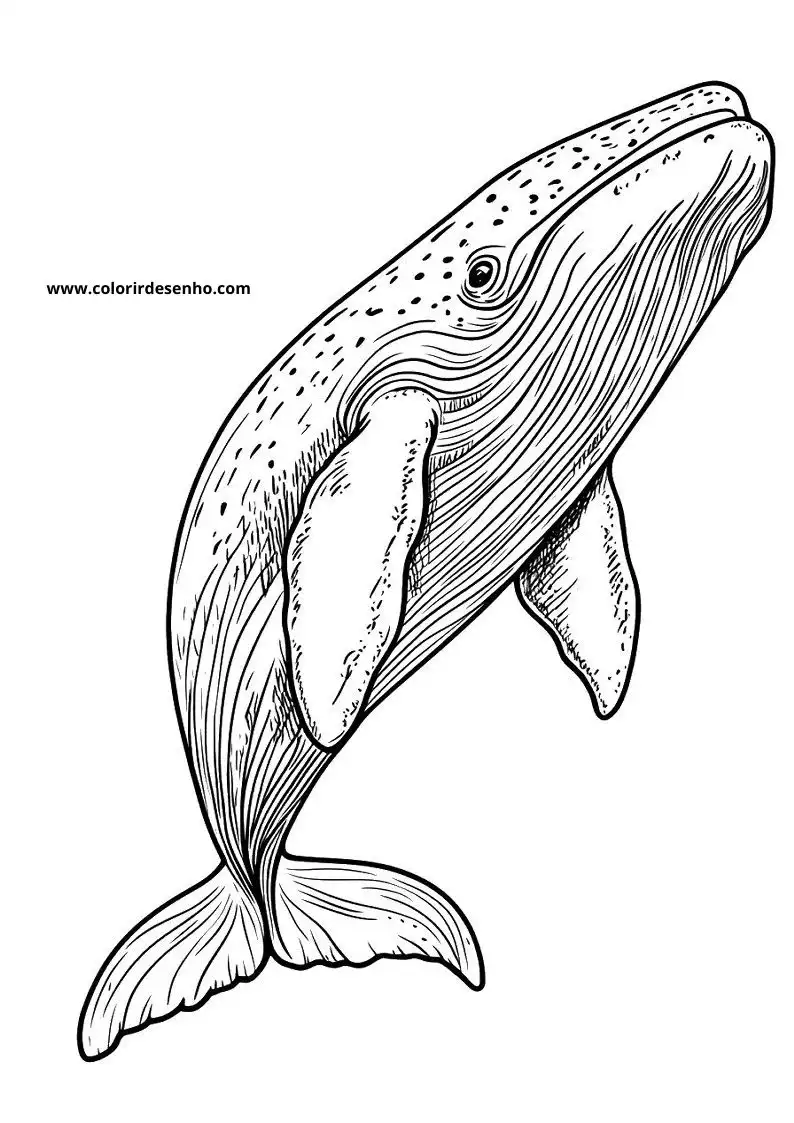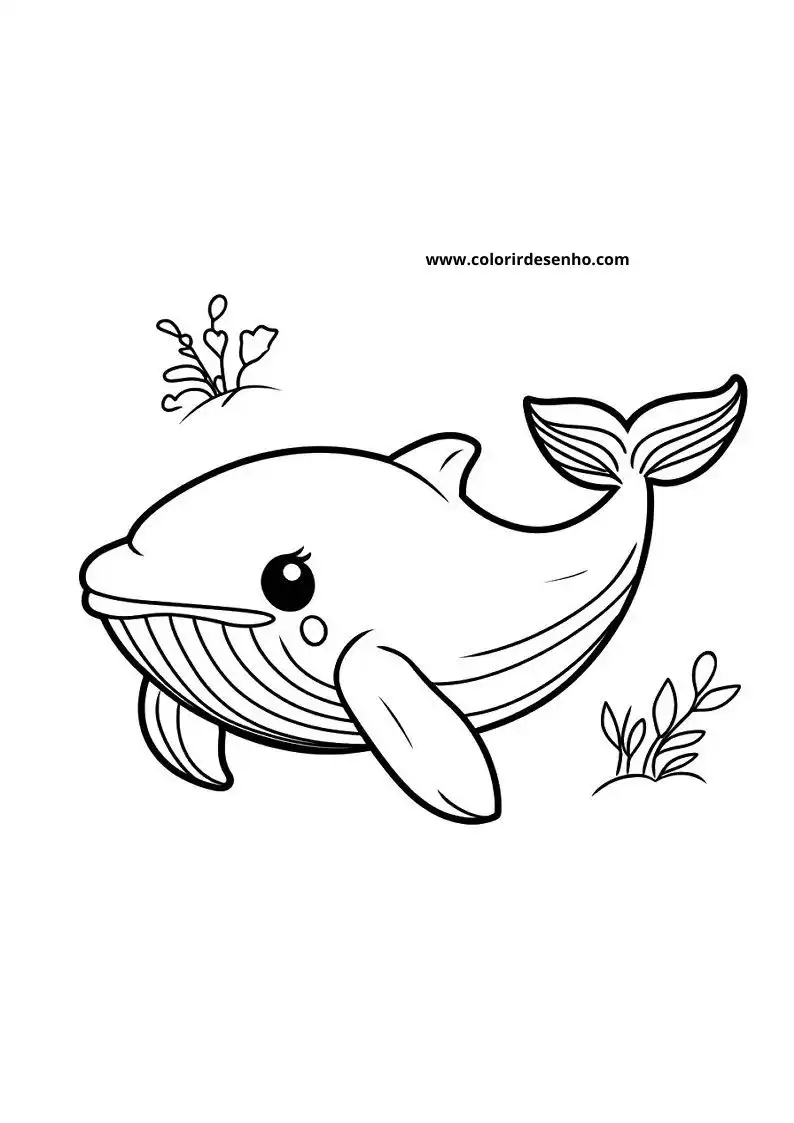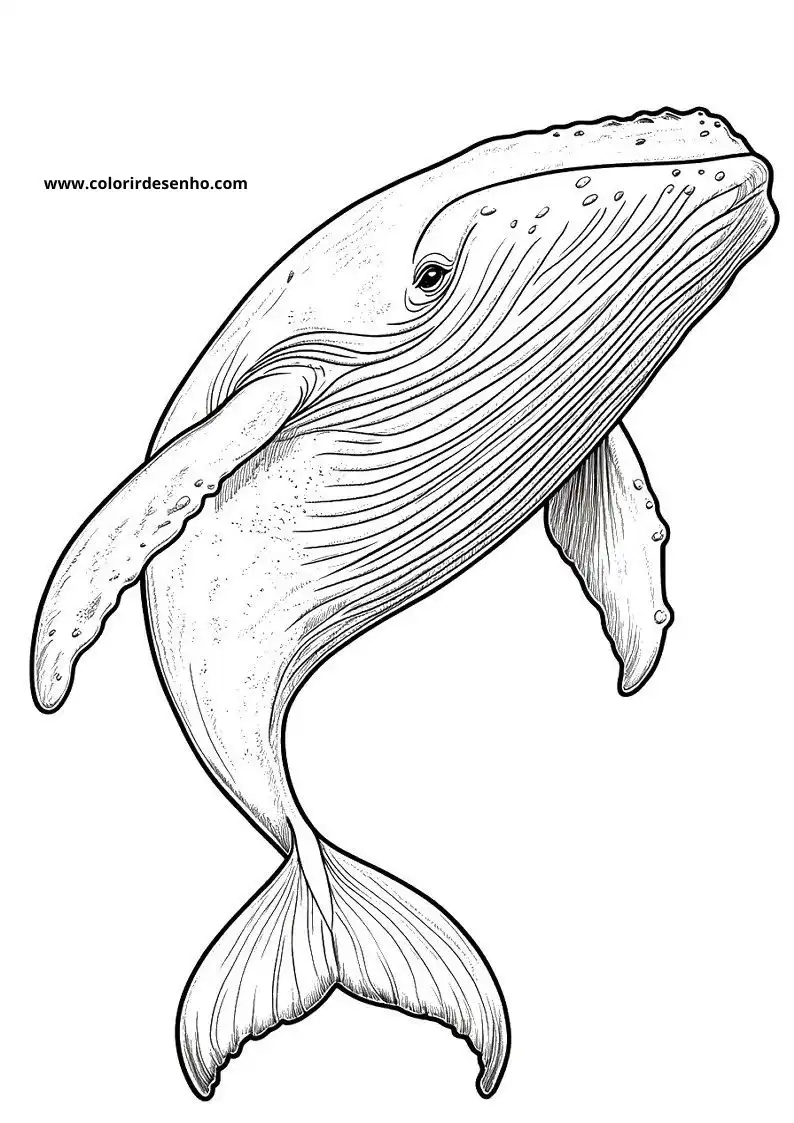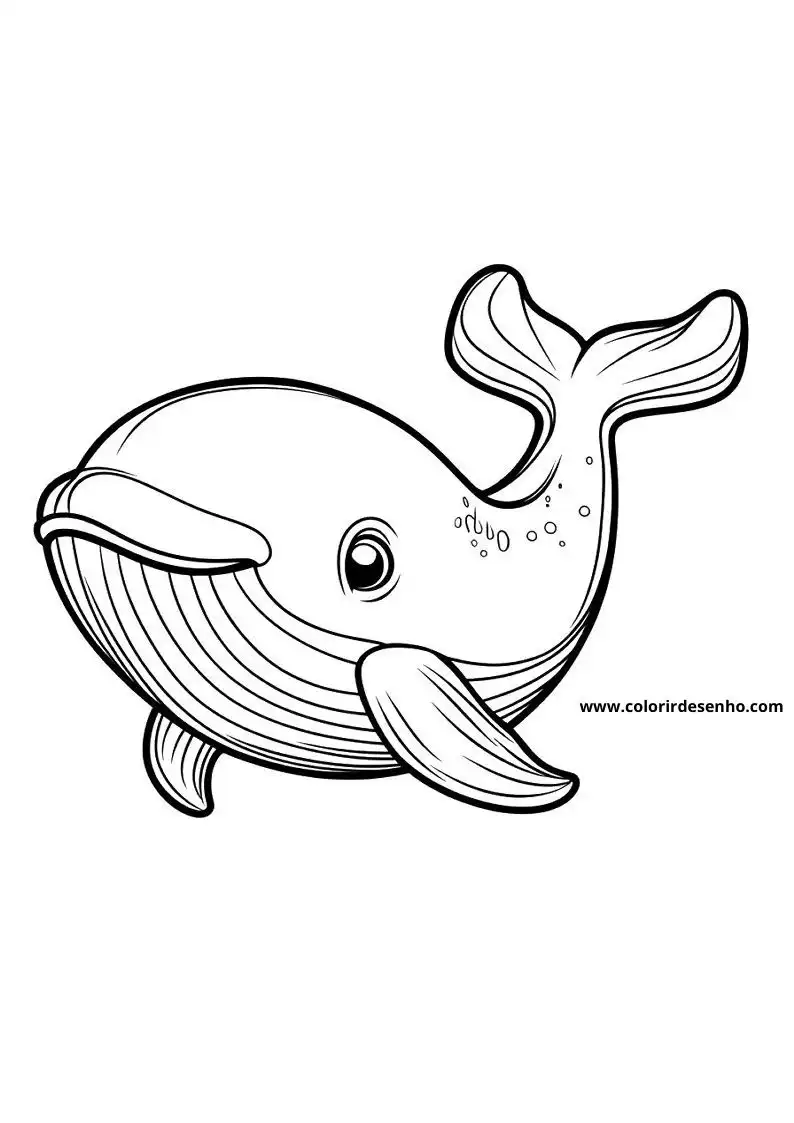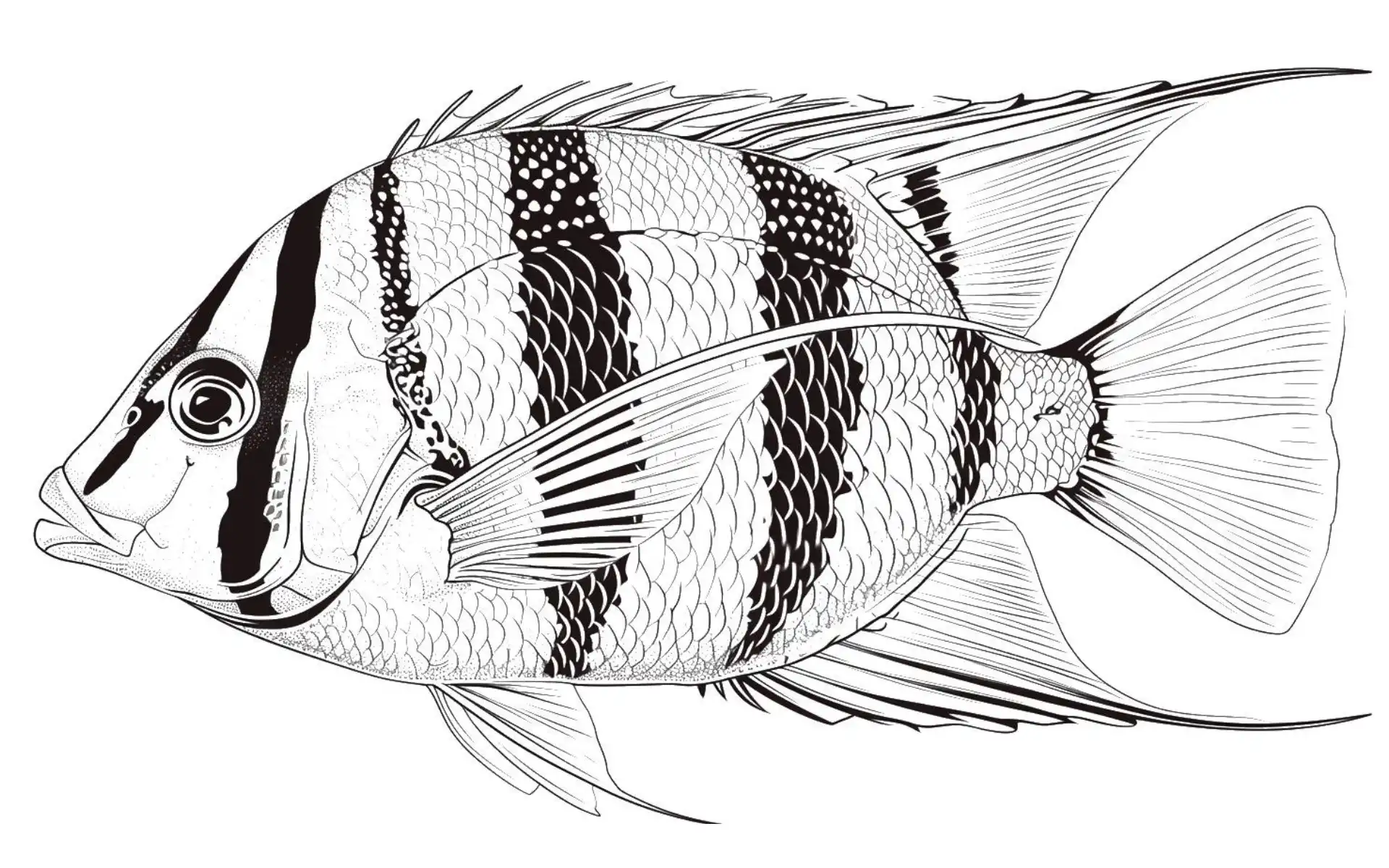Whale to Color – 113 Fun and Educational Coloring Pages
If you’re looking for Whale to Color pages, you’ve come to the right place! We know how fascinating whales are, so we’ve gathered 113 whale coloring pages to print and let your imagination run wild. These giant sea creatures captivate both adults and kids, making them a perfect theme for creative activities. Plus, it’s a fun way to learn more about these incredible animals.
Free Printable Whale to Color: Explore the Majestic Giants
Before we dive into our collection of free printable Whale to Color pages, let’s learn a bit more about these amazing creatures. Whales are known for their gigantic size and majestic presence, as well as their fascinating behaviors. There are different types of whales, from the immense blue whale to the playful humpback whale. Each one has unique characteristics that make them even more delightful to color.

THE COLORING PICTURES ARE AT THE BOTTOM OF THE PAGE, WHEN YOU OPEN THE PICTURE, CLICK ON THE SAVE BUTTON ABOVE THE PICTURE.
Did You Know Whales Are Mammals?
That’s right! Contrary to what many people think, whales aren’t fish. They belong to the class of mammals, which means they breathe air through lungs, give birth to live young, and even nurse their babies. Another cool fact is that whales can hold their breath for long periods, allowing them to dive deep in search of food.
Whales share many traits with land mammals, including being warm-blooded and having hair at some stage of their life. Understanding that whales are mammals helps us appreciate how unique they are and how they’ve adapted to life in the ocean.
Whales Communicate Through Sounds
Whales have a unique way of chatting with each other. They produce sounds that can travel long distances underwater. Some of these sounds are so loud they can be heard hundreds of miles away! Whale communication is essential for their survival, helping them navigate, find mates, and even warn each other about dangers.
The sounds whales make vary between species and can include clicks, whistles, and complex songs. These vocalizations play a crucial role in their social lives and are a fascinating subject for scientists studying marine life.
Curiosities About Whales
There are loads of fascinating facts about whales that might surprise you. They’re intelligent, social, and quite expressive animals. While coloring a Whale Coloring Page, you can imagine the personality and behavior of these creatures as you choose your colors.
Whales have intrigued humans for centuries, not just because of their size but also due to their complex behaviors and interactions. Let’s dive into some interesting tidbits that make whales such captivating subjects.
Humpback Whales Sing Songs
Did you know that humpback whales are famous for their songs? The males of this species emit melodic sounds that can last several minutes and repeat for hours. It’s believed these songs are related to mating, serving as a way to attract partners.
These underwater melodies are among the most complex in the animal kingdom, and scientists are still figuring out how they work. The patterns and frequencies can change over time, suggesting a form of cultural exchange among whales.
Whales Can Leap Out of the Water
It might seem wild to imagine such a massive animal leaping out of the water, but some whales do this frequently. This behavior is known as “breaching” and is pretty common in humpback whales and orcas. Seeing a huge whale launch itself into the air is truly impressive!
When they splash back into the water, the impact can be heard miles away. Scientists think breaching might serve various purposes, like communication, removing parasites, or just having fun. It adds another layer of wonder to these incredible giants.
Whales and Their Feeding Habits
When we think of whales, their colossal size is often the first thing that comes to mind. But did you know that despite being so big, many whales feed on some of the tiniest creatures in the ocean? Let’s find out more about this.
Whales have developed different feeding strategies to thrive in various marine environments. Understanding their diets gives us insights into the complex food webs of the ocean and how whales play a vital role in marine ecosystems.
Blue Whales Eat Krill
The largest creature on the planet, the blue whale, feeds primarily on krill—tiny crustaceans that measure just a few centimeters. To eat, blue whales open their huge mouths and gulp large amounts of water filled with krill.
They then use their baleen plates, which work like filters, to separate the food from the water. Believe it or not, they can consume up to four tons of krill in a single day!
Whales Can Go Weeks Without Eating
Whales living in places like the Arctic, where food can be scarce during winter, can build up large fat reserves during the summer. This allows them to go weeks or even months without eating.
They use this stored fat as an energy source while migrating or hanging out in areas where food is hard to find. This adaptation is crucial for their survival in extreme environments.
Different Types of Whales
Now that we know a bit more about how whales live and eat, let’s learn about the various species out there. There’s a wide variety of whales, each with its own unique features.
From playful dolphins to majestic sperm whales, the diversity among cetaceans is astounding. Each species adds its own flavor to the richness of marine life.
Is the Orca a Whale?
Even though many people call it the “killer whale,” the orca is actually part of the dolphin family. Yep, you read that right! Orcas are the largest members of the dolphin family and are known for their smarts and hunting skills.
They work in groups and hunt together, which lets them catch big prey like seals and even other whales. Their social structures are complex, and they sit at the top of the food chain in their ecosystems.
Beluga Whales Are Super Social
Beluga whales, which live in the icy waters of the Arctic, are known for their “smiling” faces and social behavior. They hang out in groups and constantly communicate using a variety of sounds, from clicks to whistles.
Because of this, belugas are often called the “canaries of the sea.” Their vocalizations are key for keeping the group together and navigating their chilly environment.
The Importance of Whales to the Marine Ecosystem
Whales play a crucial role in marine ecosystems. Besides being awesome creatures to include in your Whale Coloring Pages, they have a big impact on the health of the oceans.
From regulating the climate to supporting deep-sea life, whales contribute in ways that might not be obvious at first glance. Protecting them is essential not just for their species but for the planet as a whole.
Whales Help Regulate the Climate
Whales have a big part in keeping the planet’s climate in check. They help fertilize phytoplankton tiny marine plants that absorb tons of carbon dioxide from the atmosphere.
When whales feed deep underwater and surface to breathe, they bring essential nutrients up to the surface, which boosts the growth of these marine plants. This process is known as the “whale pump.”
The "Whale Fall" Effect
When a whale dies naturally, it creates what’s called a “whale fall.” This happens when the whale’s body sinks to the ocean floor, becoming a food source for various marine life forms for decades.
This process provides essential nutrients for many deep-sea creatures, helping maintain the balance of the ecosystem. It supports a unique community of species adapted to these conditions.
Behaviors and Interactions in the Ocean
Whales are more than just giants of the sea. They have intriguing behaviors and are super social. These animals interact with each other and their environment in ways that keep surprising scientists.
While coloring a Whale to Print, think about how these creatures live in a deep, mysterious world we still know so little about. Their behaviors are as deep and fascinating as the oceans themselves.
Whales Travel Great Distances
Whales are migratory, meaning they move long distances in search of food or to reproduce. The gray whale, for instance, makes one of the longest migrations of any mammal, traveling over 10,000 miles each year.
In the summer, they feed in nutrient-rich waters near the Arctic. Come winter, they head to tropical areas to breed. This epic journey is vital for their survival, and whales navigate with amazing precision.
Whale Pods and Friendships
Some whale species are really social and live in groups called pods. Humpback whales, for example, sometimes swim in small groups, especially when hunting.
They show cooperative behaviors, working together to herd schools of fish so everyone gets a bite. Some researchers even suggest that whales can form social bonds similar to friendships, sticking with the same buddies throughout their lives.
Human Impact on Whales
While whales fascinate many of us, unfortunately, they face numerous threats due to human activities. As you print and color your whale drawings, it’s important to remember that these amazing animals need our protection.
From historical whaling to modern-day pollution and shipping lanes, human actions have greatly affected whale populations. Understanding these impacts is a step toward making positive changes.
Whaling Through History
Whaling has been around for centuries. During much of the 20th century, commercial whaling was common, leading to drastic declines in several whale species.
Whale oil was super valuable and used in lots of products like cosmetics and fuel. Thankfully, commercial whaling is now largely banned in many parts of the world, although it still happens in some countries.
Pollution and Fishing Nets
Another big threat to whales is ocean pollution. Plastics and other trash often get mistaken for food, causing health problems for these giants.
Plus, abandoned fishing nets, known as “ghost nets,” are really dangerous. They can entangle whales and other marine animals, making it hard for them to move and sometimes leading to death by exhaustion or suffocation.
The Conservation of Whales
Despite the challenges whales face, there’s a lot being done to help protect them and keep their populations thriving. By engaging in activities like coloring Whale to Print pages, you can also reflect on the importance of conserving these incredible mammals.
Conservation efforts involve international cooperation, research, and public education. Everyone can play a part in supporting these majestic creatures.
Organizations Protecting Whales
Various organizations around the globe work tirelessly to protect whales and their habitats. They monitor whale populations, create marine protected areas, and educate the public about the importance of preserving our oceans.
Some groups also help rescue stranded whales and work to reduce harmful interactions between whales and human activities like shipping and fishing.
Whales and Sustainable Tourism
Whale watching tourism has grown a lot in recent years, and when done responsibly, it can be a powerful conservation tool. Seeing whales in their natural habitat helps people connect with nature and understand why protecting these animals is so important.
Plus, ecotourism brings in money for local communities, encouraging them to preserve whale habitats instead of exploiting them in harmful ways.
Whales in Culture and Mythology
Whales have always fascinated humans, showing up in myths, legends, and even modern literature. They appear as symbols of power, mystery, and sometimes danger.
From ancient stories to contemporary tales, whales have inspired countless narratives that reflect our relationship with the sea and the unknown.
The Legend of Moby Dick
One of the most famous whales in literature is in the novel “Moby-Dick” by Herman Melville. Published in 1851, the book tells the story of Captain Ahab’s obsession with hunting the white whale Moby Dick.
The story dives into themes like revenge, the power of nature, and the struggle between humans and the natural world. Moby Dick has become a symbol of the wild and unstoppable force of the oceans.
Whales in Indigenous Cultures
For many indigenous peoples around the world, especially those living near the coast, whales hold deep spiritual significance. In some Native American tribes of the Pacific Northwest, the whale symbolizes wisdom and protection.
Their legends often feature whales helping humans in times of need or guiding them on spiritual journeys. These stories show the deep respect these cultures have for the ocean and its inhabitants.
The Joy of Coloring Whales
Now that we’ve explored more about these amazing creatures, it’s easy to see why coloring whales is such a cool activity. Whale Coloring Pages offer endless possibilities to get creative and connect with nature.
It’s also a fun way to learn more about the marine world while enjoying some art time. Let’s look at why coloring whales can be both educational and entertaining.
Coloring Is Relaxing
Besides being educational, coloring is a great way to chill out. When you focus on filling in the details of a drawing like a whale swimming or breaching—it helps calm your mind and reduce stress.
It’s like you’re diving into the ocean depths, hanging out with these giants as they glide through the water. Coloring offers a meditative experience that’s both soothing and fulfilling.
Spark Your Imagination
With so many types of whales to choose from, every coloring page can be a new adventure. Imagine seeing a blue whale up close or hearing the songs of humpback whales.
Each stroke of your pencil connects you a bit more with these incredible ocean dwellers and teaches you about their importance in our world.
So, grab your pencils, download your favorite Whale to Color pages ready to print for free, and start coloring!
